
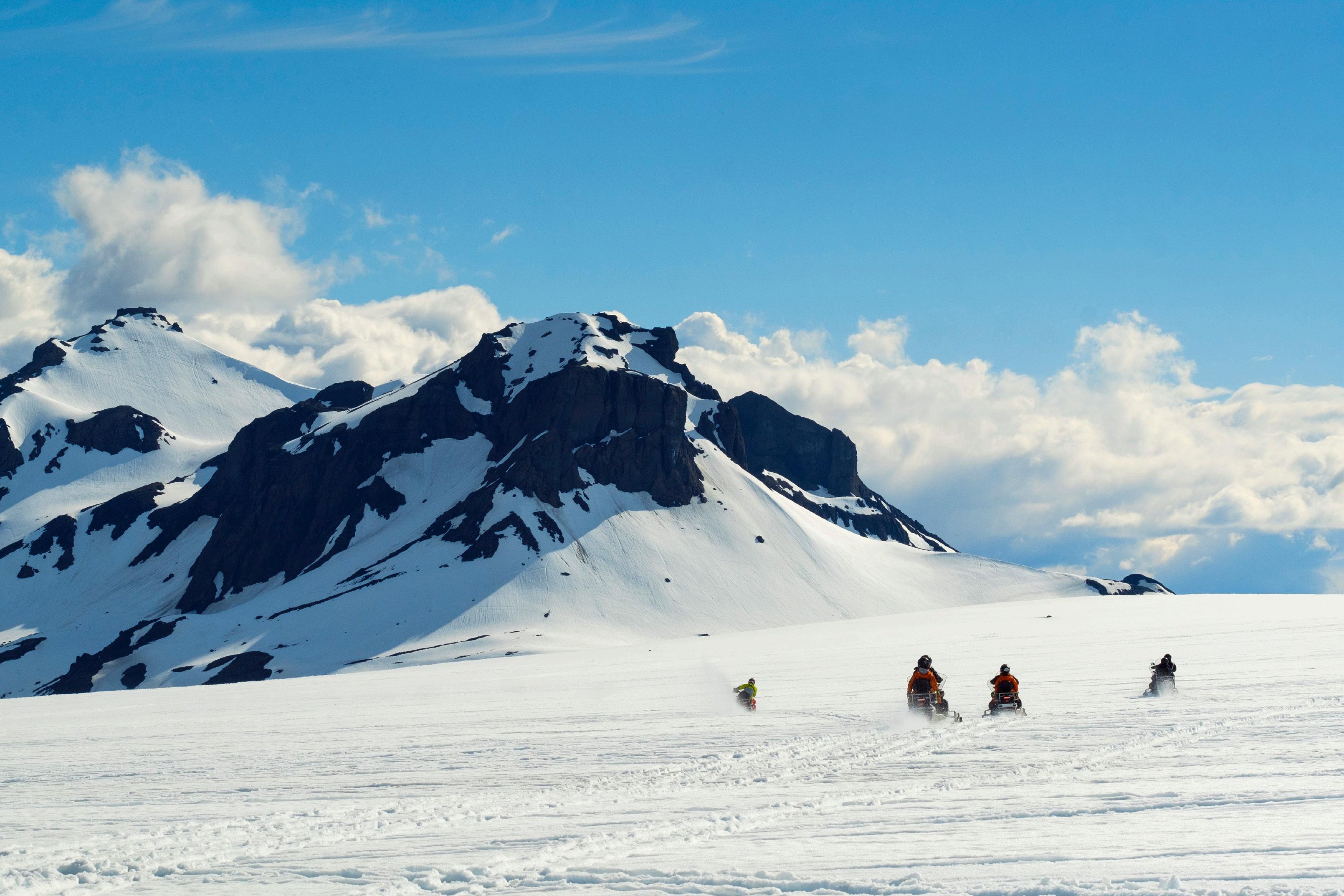





It’s March, which in other countries means that spring is around the corner. We’ll have to wait a little bit longer for it to reach all the way up to the subarctic north but the day we’re really looking forward to is March 20, the equinox!
As I’m sure you know, it gets dark around here during winter. We’ve been getting a little more sun every day since December when at best, you could hope for 4 hours of sunshine. It always feels good when the sun starts rising before you have to go to work and by the time the equinox rolls around, it’s nothing but the sunny days (and nights) of summer for the good people of Reykjavík!
To mark the occasion, the Imagine Peace tower is lit on the night of the equinox and for the following week, so make sure to look up at the night sky to see if you can spot the single beam of white light reaching towards the stars. Otherwise, the locals don’t do much to celebrate but you’ll be sure to notice a little more spring in people’s steps and perhaps even a sunnier attitude.
Luckily, no matter the season, there’s always something going on in the city. This month, the people of Reykjavík will be flocking to the city’s restaurants for the Food and Fun festival, where international chefs join Icelanders in the kitchen to produce creative feasts with local ingredients. There’s also the Stockfish film festival as well as the usual concerts, shows, and other events in the lively city centre. Just remember to get out of the city as well, that’s where they keep those impressive landscapes your Instagram is begging for!
Published by: MD Reykjavík ehf.
Laugavegur 5, 101 Reykjavik. Tel.: 551-3600
Contact us: info@whatson.is
Publisher: Kjartan Þorbjörnsson
Distribution: nora@whatson.is
Tel.: 830-3629
Map of Reykjavík: Friðrik Bjarnason
Editor: Gréta Sigríður Einarsdóttir, greta@whatson.is
Content writers: The What’s On Team
Ad sales: Sigurþór Marteinn, sm@whatson.is

Printing: Kroonpress Ltd.
WHAT‘S ON IN REYKJAVÍK is published monthly, covering events and happenings in and around Reykjavík. Opinions expressed in WHAT‘S ON IN REYKJAVÍK are those of the individual authors. While every effort has been made to ensure the information presented is accurate, prices, times, dates and other information may be subject to change.
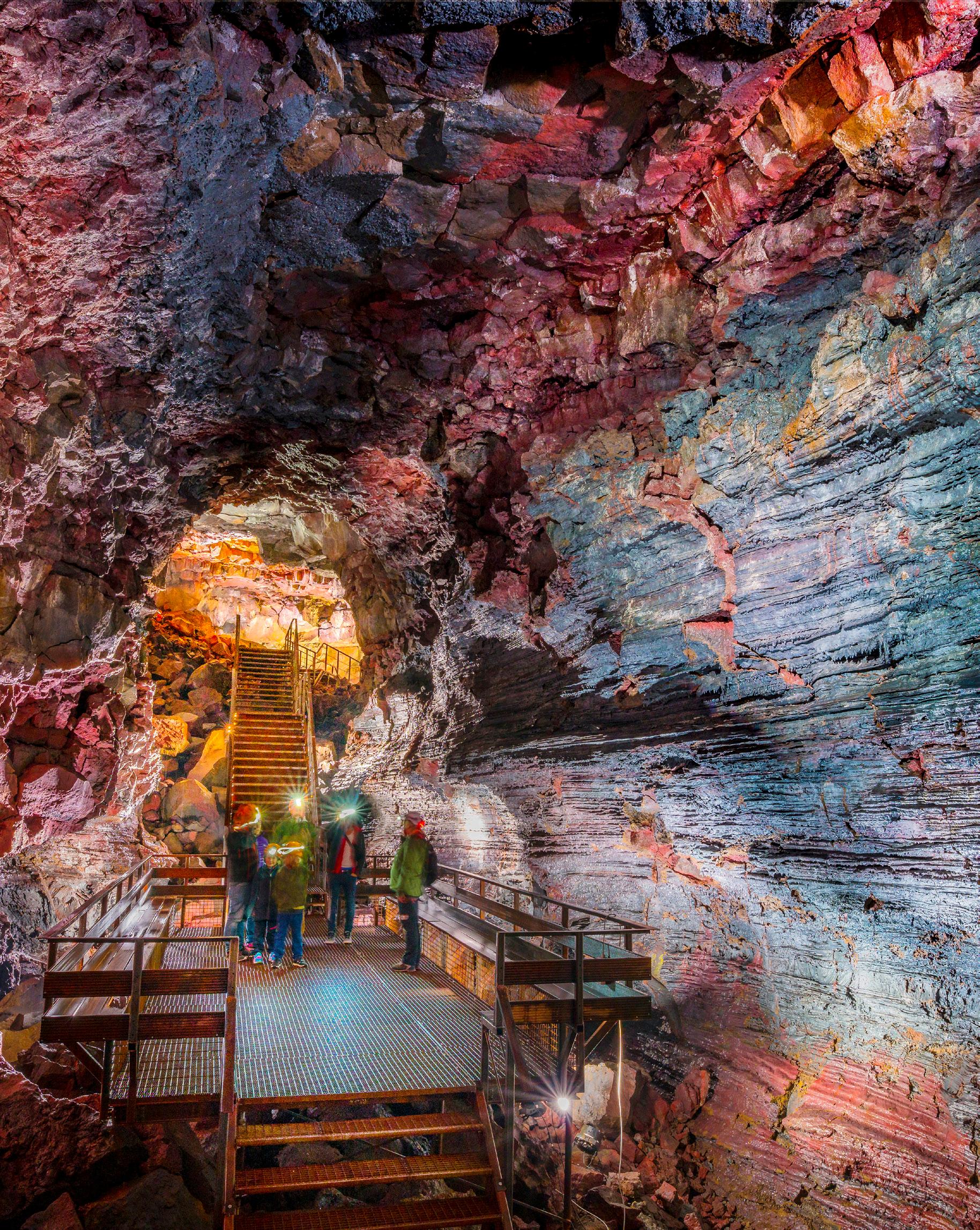
Spring is (almost) here! As the sun shines a little longer and warmer each day, the people of Reykjavík start to come out of their winter hibernation. But don’t worry, we still have a few more weeks of northern lights and skiing ahead of us!

Here are What’s On’s tips for this month:
Discover an upcoming Icelandic director at the Stockfish Film Festival.
Chat to the locals in a hot tub in one of the city’s many spa-like swimming pools..
Try snowmobiling across a glacier!
Go horseback riding in the wild Icelandic nature.
Book a table at the Food and Fun Festival for a mouth-watering taste of Iceland cuisine!
Visit the Reykjavík Maritime Museum and find out what the Cod Wars were all about.
Get out of the city and explore the waterfalls and wonders of the South Coast!
Learn how to knit with Icelandic wool!
…in case that doesn’t work out, get a traditional lopapeysa sweater to take back home.
While you’re checking things off the list, snap some photos and tag #whatsonrvk on Instagram.
M arch 4, 11, 18 & 26
Heartbreaking story about love and loss
Tickets at tix.is & opera.is

So you’re in Iceland, taking in the sights and everything else this magnificent country has to offer. Why not share it with the world?

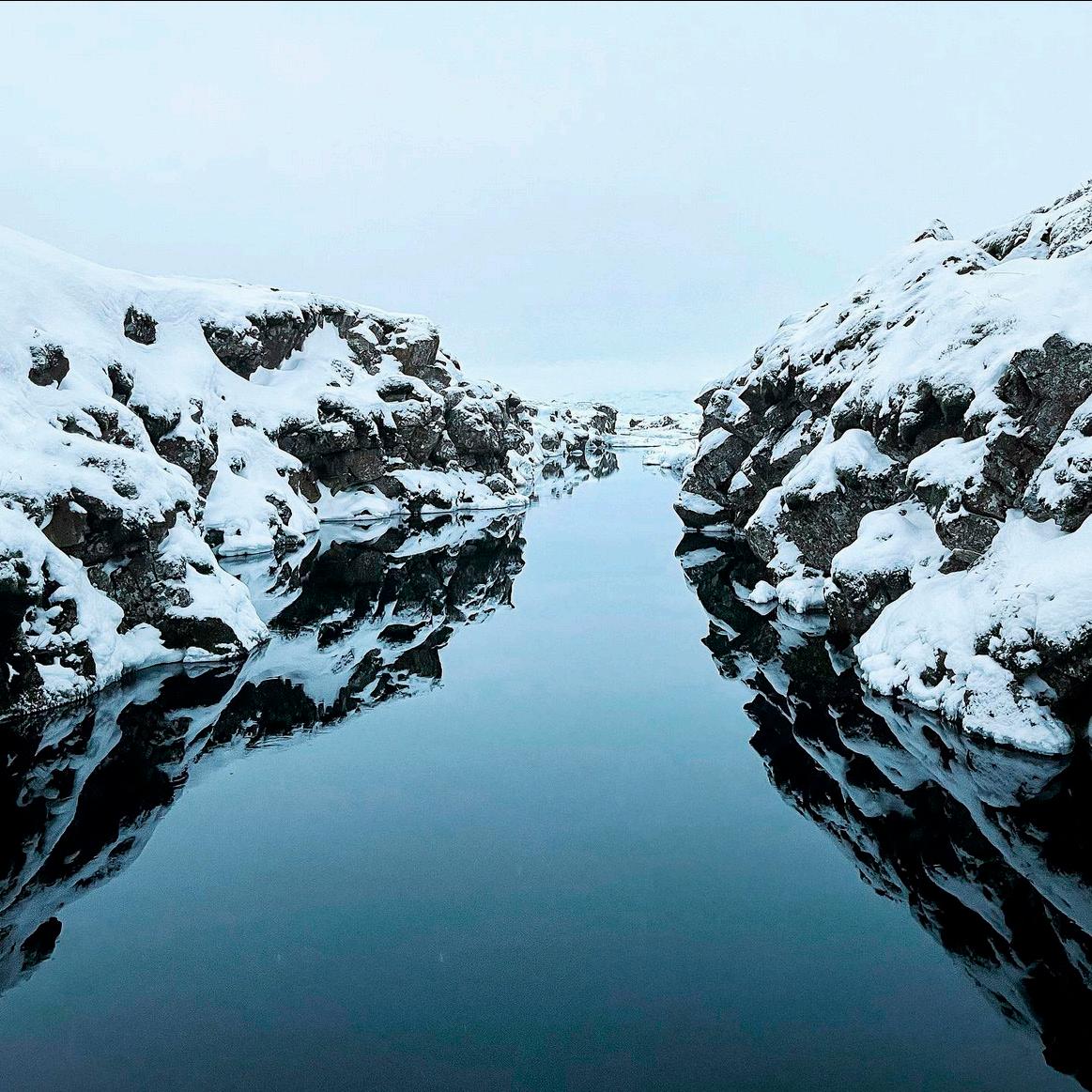



Tag your photos #WhatsOnRvk and you might be featured in our magazine next month! Browse the entire What’s On catalogue at www.whatson.is.
@unfocusedddd
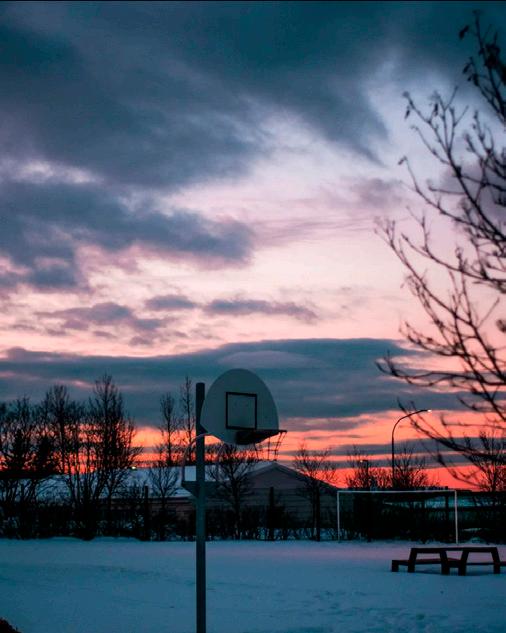
@merlinartur
@lottasworld @pavl.inaa

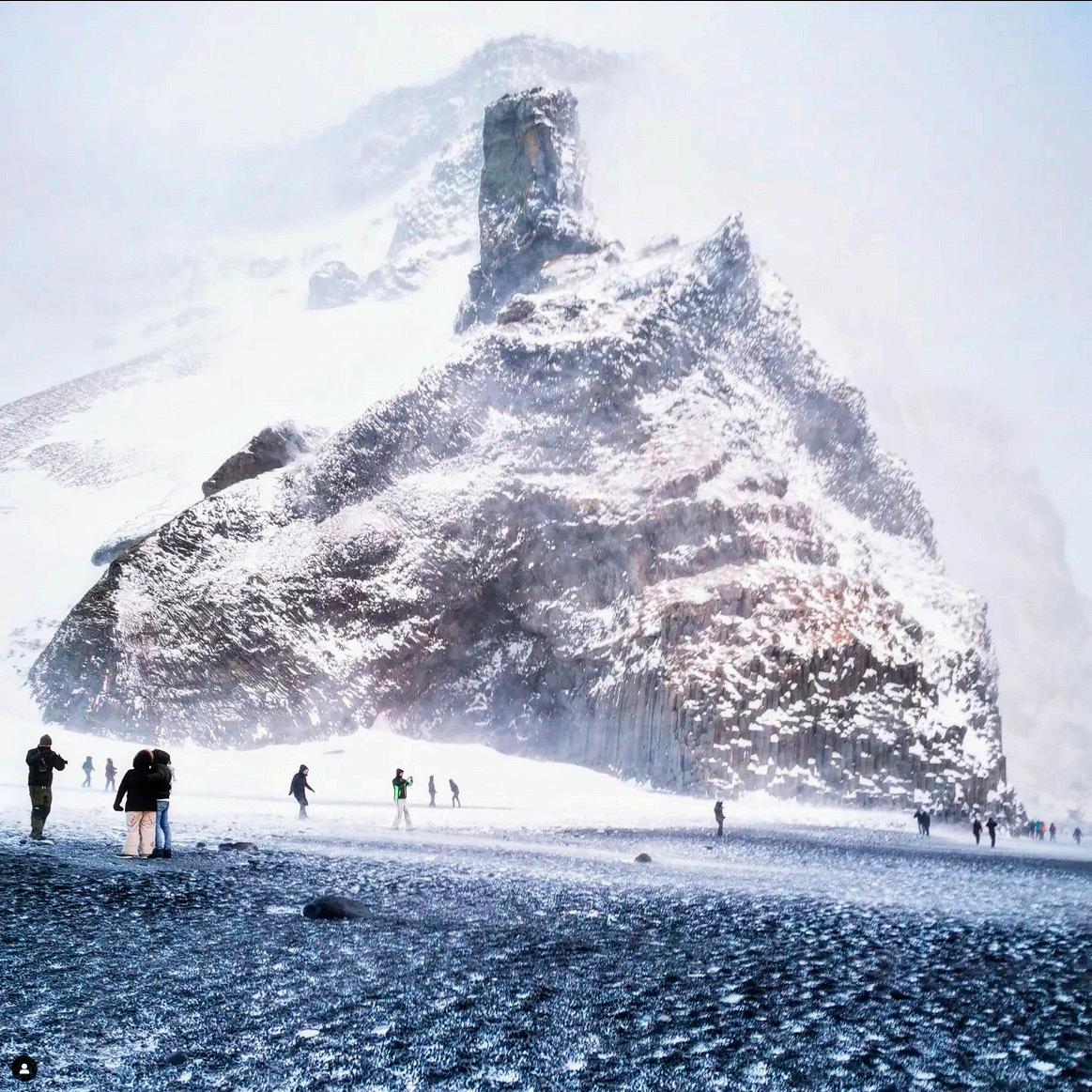

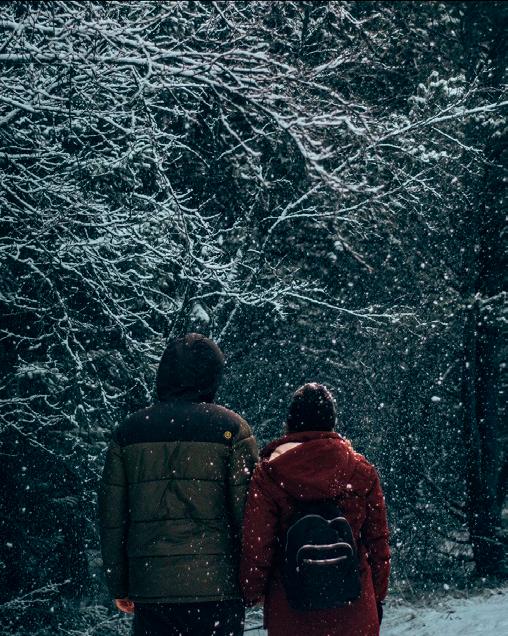






Our first piece of advice if you have just one day to spend in Iceland is to change your flight and stay for at least a week. If that’s not an option, here’s what we suggest to get the most out of this unique destination in such a short time.
The Golden Circle is the most popular day tour from Reykjavík – and it’s easy to see why. The classic route includes three stops that also happen to be three of the most captivating natural wonders in Iceland. Tour operators may add their own twists, but you’re sure to stop at Þingvellir, a national park straddling the rift between the North American and Eurasian tectonic plates; Gullfoss, an awe-inspiring waterfall that lends its name to the Golden Circle (gull translates to gold); and the Geysir geothermal area, with an erupting hot spring guaranteed to impress. You can complete the Golden Circle in half a day (depending on the tour you book), leaving you time to squeeze more into your short stay.
The Reykjanes peninsula reminds us for the second year running why Iceland is known as the Land of Fire and Ice. The Meradalir eruption began on August 3rd and lasted until around August 22, 2022. The site of the eruption is an hour’s drive south of the capital and accessible to anyone that can handle a four to five-hour hike. There is also of course the birds-eye view option by helicopter or light aircraft. While the eruption is over, you can still marvel at the
youngest lava field in Iceland and admire nature’s fury first-hand. But please don’t walk on the young lava fields! Lava takes years to fully cool, so there may be molten lava just beneath the seemingly solid surface. Check out the what’s on Iceland website, www.whatson.is for up-to-date info.
There’s no better way to get a feel for the latter half of Iceland’s “Land of Fire and Ice” moniker than to go on a glacier hike. Glacier hikes are relatively easy and accessible for most, especially because professional gear is provided. You get to walk on a glacier with guides who know everything there is to know about glaciers and Iceland in general. What’s cooler than that?

What’s better than a spa day? Visiting a geothermal spa fed by Europe’s most powerful hot spring, Deildartunguhver. At Krauma Natural Geothermal Baths, the water from the hot spring is mixed with cool glacial water for a perfect temperature. It has five hot tubs and one cold bath, plus a relaxation room, two steam baths and an infrared sauna. Alternatively, if you don’t want to leave the capital area, book the seven-step “Ritual” at the Sky Lagoon for a luxurious afternoon of soaking, steaming, scrubbing and other soothing activities.
Are you looking for a thrill? Go on a buggy ride. A buggy is a fast, sturdy and stable ATV, perfect for anyone who loves to get their blood pumping in the great outdoors – and who doesn’t mind getting a little dirty in the process. Driving a buggy through rough Icelandic terrain, over mud puddles, dirt roads or snow, makes for an exhilarating day.
Marine life abounds in the water around Iceland, and you can see everything from harbour porpoises and white-beaked dolphins to minke and humpback whales on a whale watching tour. Tour boats depart Reykjavík’s old harbour throughout the day, cruising to the spots where sightings are most likely. Nothing beats the thrill of seeing a massive whale breach or watching one slap its enormous flukes on the water’s surface. If you have a few hours to spare before or after the cruise (or if you get seasick and a cruise is out of the question), check out the Whales of Iceland exhibition to learn more about these gentle giants.
Stop by the What’s On information centre, or send us an email, info@whatson.is , and ask the staff to help you plan an unforgettable vacation.
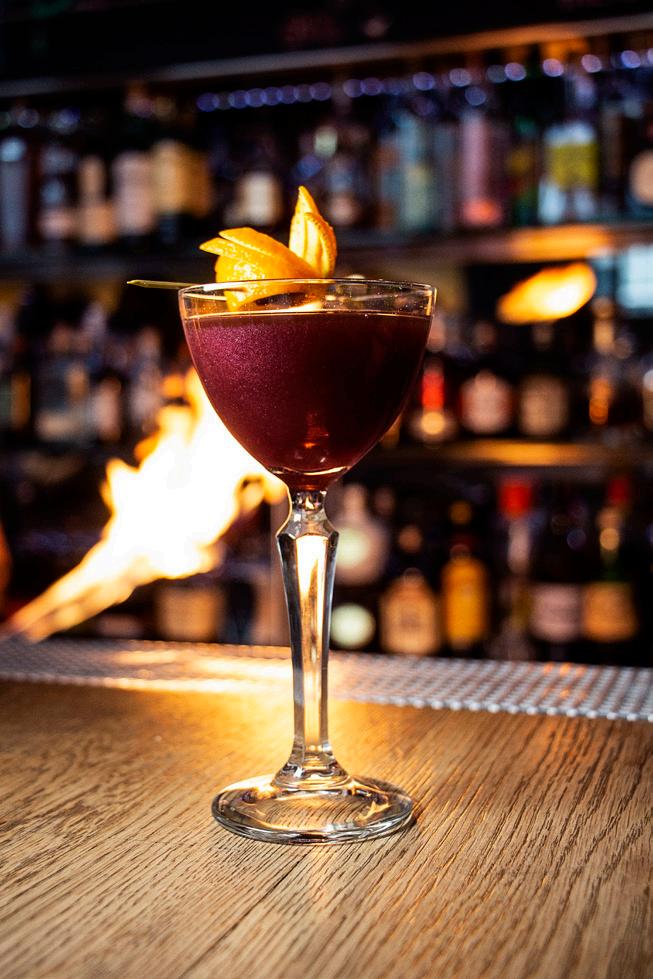



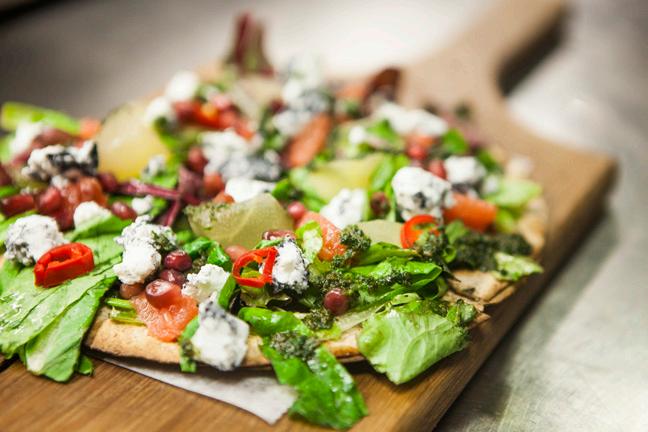


As we get closer to the season of midnight sun, locals and tourists alike are savouring every chance to view the aurora borealis as soon, nights won’t be dark enough for them to be visible. The northern lights are actually the results of sun flares caused by magnetic storms on the sun‘s surface. These flares send bursts of charged particles (electrons, ions, atoms) into outer space through the Sun’s corona.
If this burst is in the direction of Earth, these charged particles can cause northern lights to appear near the Earth’s poles. Oxygen and nitrogen particles in the Earth’s atmosphere can collide with charged particles from the Sun’s atmosphere.
This collision causes the Earth’s particles to get into a high-energy state, and when they return
to their normal state, they release a photon, causing them to light up. This light is a form of electromagnetic radiation, reaching the Earth along with radio waves. When billions of these collisions occur, the oxygen and nitrogen in the atmosphere emit enough light for the eye to detect them, resulting in bright green, white, red and purple colours to dance across the sky.
Seeing the lights is a magical experience, and we recommend seeking them out while you’re in Iceland. However, there are a few things every northern lights hunter should keep in mind. The northern lights aren’t a reliable attraction and seeing them can be a matter of being in the right spot at the right time. It’s not all down to luck, however, as there are a few things you can do to maximise your chances of seeing the ethereal lights.
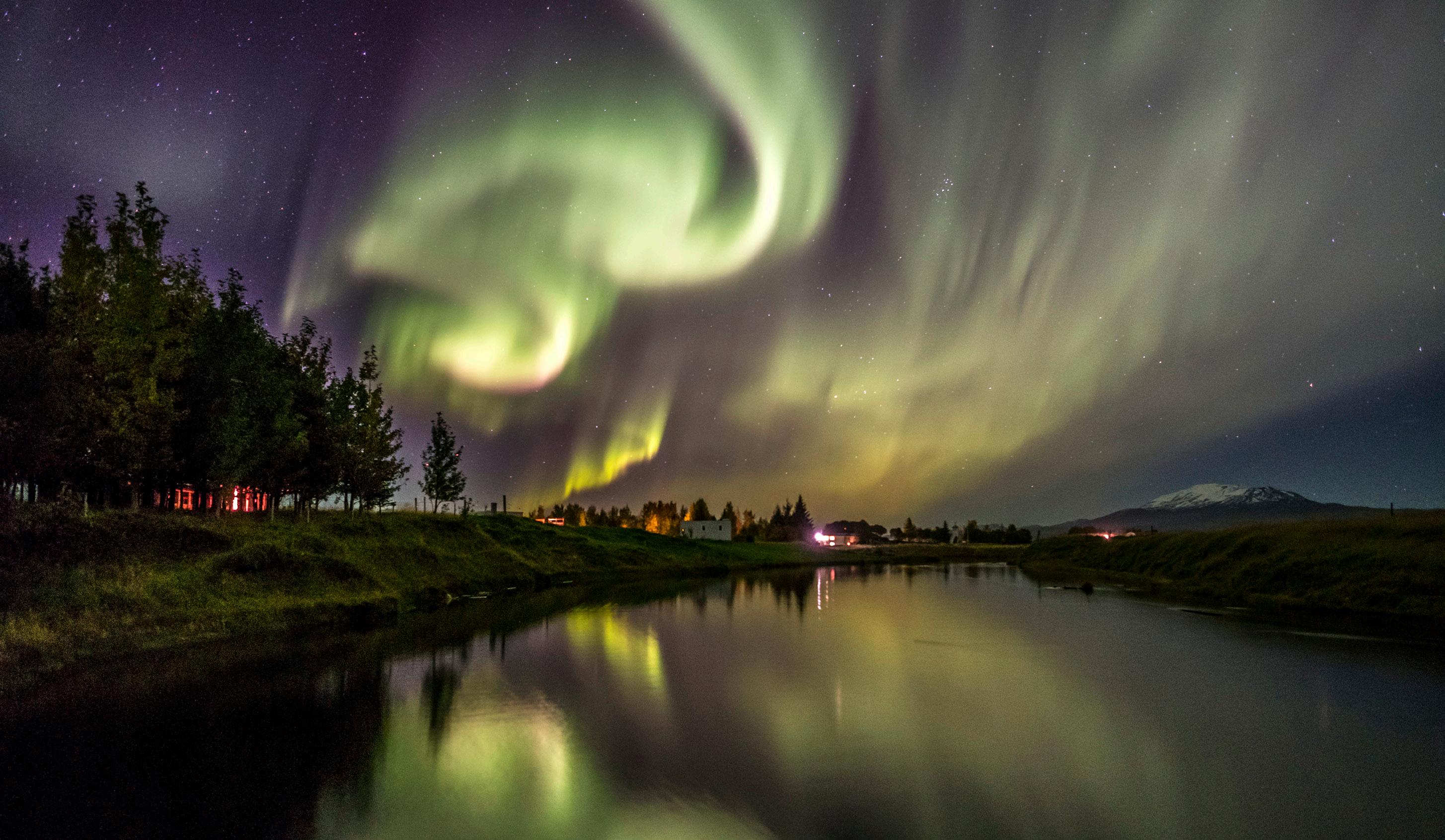
Cheap and effective. A northern lights tour by bus or minibus is a good way to see the lights if you’re not too concerned about being surrounded by a lot of people and simply travelling by bus. Perhaps not the best time if you don’t see anything – but it’s the cheapest option to see the lights, and it gets the job done.
A great experience regardless of lights. Going by boat is a very good choice for those who want to ensure they get something out of their tour even if no lights are found. Being out at sea and viewing the city lights from the water is in itself a great experience.
1 GET OUT OF TOWN
The city lights block the northern lights!
2 MAKE SURE IT’S DARK
Daylight and northern lights don’t go hand in hand!
3 MAKE SURE THE SKY IS CLEAR
The northern lights appear way above the clouds!
4 GIVE IT TIME AND BE PATIENT!
The northern lights don’t come out on demand – be patient and you might get lucky!

5 SIGHTINGS CAN NEVER BE GUARANTEED
So we’d recommend a tour that includes some great activity as well as northern lights hunt – so you won’t feel disappointed!
6 WEAR SOMETHING WARM
It can get seriously cold, especially when the sky is clear and you’re waiting for a long time.
7 KNOW YOUR CAMERA!
Taking photos with a flash won’t work. Ever. A tripod and long exposure are your friends!
8 ENJOY IT!
Lie down on the ground. Look up. Enjoy!
Exclusive and thrilling. Going on a hunt for the lights with a specially modified superjeep is a thrilling experience that’s fun and exciting. Sights can of course never be guaranteed, but the off-road action of a superjeep makes for a great adventure, the lights are just an added bonus.
Book your northern lights tour now online or at the What’s On tourist information centre, at Laugavegur 5.
DO have a relatively good camera with you that allows for easy and quick change of settings.
DON’T rule out taking a photo on your phone’s camera.
DO have your ISO set to at least 800 and your aperture as low as it goes.
DON’T forget your tripod. However little you think you move while waiting for your camera to take your picture, believe us, you always move and it’s enough to make your photos blurry.
DO keep your shutter speed anywhere between 5 to 30 seconds, although the optimal would be between 5 and 20 seconds (30 seconds is only for very faint lights, basically).
DON’T forget to plan ahead when booking your northern lights tour- finding a stable surface on a boat is difficult, and large group tours might make your photography session more difficult.
DO consider using continuous shooting, so that while shooting the lights, you don’t have to keep staring at them through your camera.
DON’T focus solely on your photographs and forget to be in the moment. You don’t see the northern lights every day!
If you need any more information, check out www.whatson.is or stop by the What’s On information office at Laugavegur 5.

The northern lights forecast can be found on en.vedur.is/weather/forecasts/aurora/, but it is a little hard to decipher if you’ve never seen it before. Our handy-dandy guide should make things a little bit easier.


There are many tours taking you far from the bright city lights for a better chance of seeing the aurora. These tours will be cancelled if there is no chance of seeing the lights. All major operators can be trusted to do this, first of all, because there is a high standard of professionalism in Iceland, but more importantly, because they lose money if they take you out needlessly – most of them promise to take you out again for free if you don’t see anything.
White means no clouds while dark green means very cloudy. The different shades of green then mean more, or less, cloudy.

The numbers are a combination of how likely it is for the lights to be active and how active they will be. Don’t be discouraged if the number is low, it’s actually very rare for the number to be higher than five. Also, take the scale with a grain of salt; a low number doesn’t mean that they won’t come out or won’t be impressive, and a high number isn’t a guarantee that they will be glorious all through the night.

With a subarctic climate and a tiny population, Iceland is a little different from other popular travel destinations. Desolate landscapes, extreme weather, mountain roads, geothermal areas, and the ocean can all catch the unprepared off-guard. Keep the following six safety guidelines in mind when planning your trip to Iceland.
The emergency number in Iceland is 112. You can dial it free of charge to reach emergency services like ambulances, rescue teams, and the police, and there is also a 112 app that can send your information to emergency services at the press of a button.
2. Follow updates on Safetravel.is

Icelandic weather is infamously fickle, and extreme weather is not uncommon. In wintertime, high wind speeds and snow can frequently limit visibility. Safetravel.is offers up-to-date road condition maps, weather alerts, and plenty of helpful tips and information on the best and safest way to travel around the country. There’s an app for that, too. It’s well worth downloading and checking regularly throughout your travels.

The water in geothermal areas can reach temperatures upward of 100°C. Falling in or slipping can result in severe burns. Safe paths are clearly marked, so stick to them, and never walk on ground that is steaming.
4. Keep a safe distance from the ocean

Sneaker waves – disproportionally large waves that encroach farther onto shore than regular waves – are frequent occurrences at the Reynisfjara and Kirkjufjara beaches in South Iceland. Sneaker waves are more powerful than people expect, and accidents have proven fatal in the past. Keep a safe distance from the water and observe nearby signs.



5. Stay on the path

Whether visiting a waterfall, a geothermal area, or hiking in the mountains, staying on the marked footpath is imperative. Respect when paths are closed and heed all signs. It’s closed for a reason, either to protect you or fragile nature.
6. Let someone know where you’re going

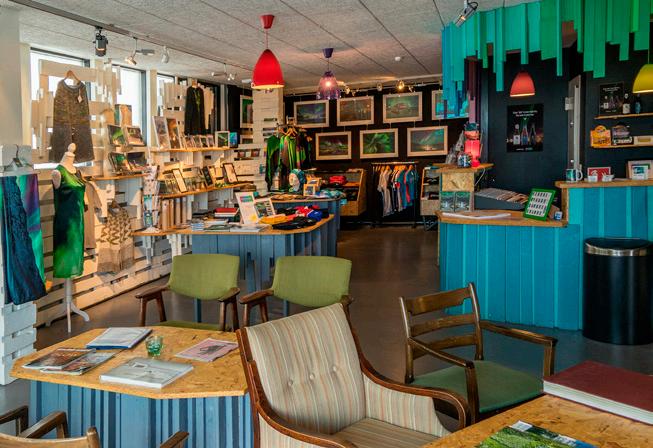
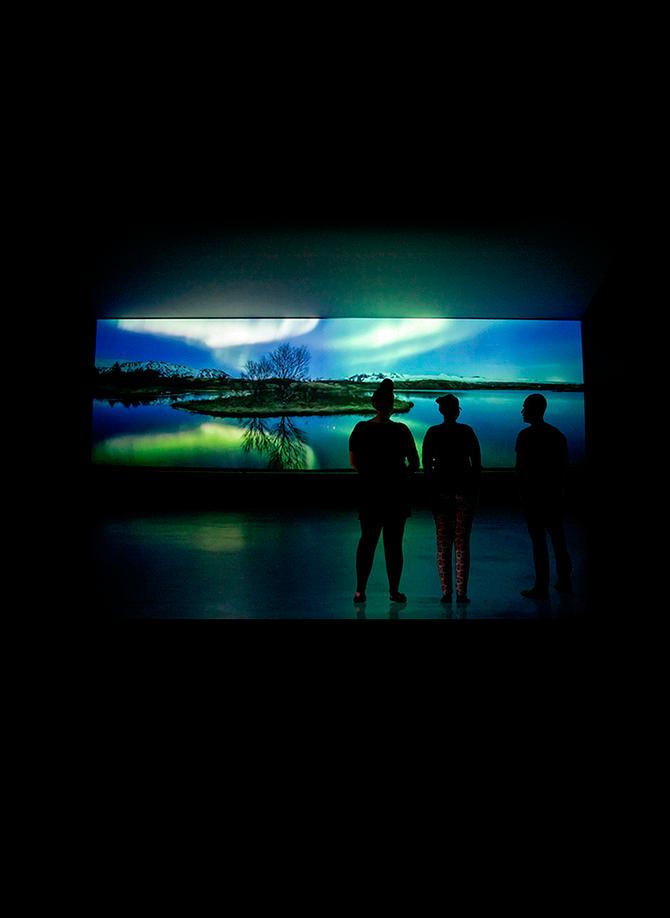
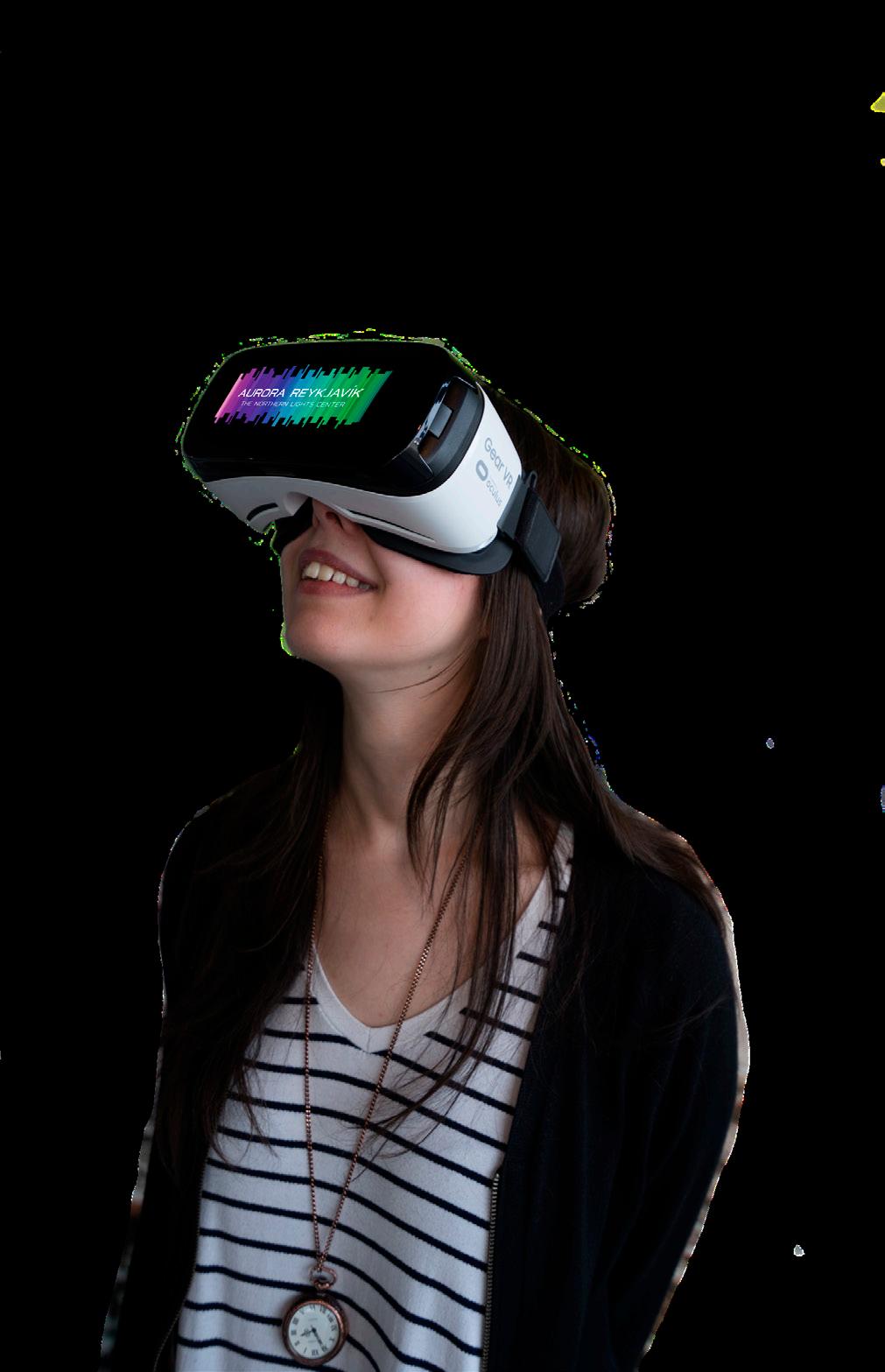

If you’re planning on hiking or hitchhiking, let someone know where you’re going and when you’ll be back. You can also upload your travel plan to www.safetravel.is.

world class exhibition on volcanoes and earthquakes surrounded by active volcanoes
The Lava Centre is situated at Hvolsvöllur on the South Coast of Iceland, surrounded by active volcanoes. It truly acts as the gateway to Iceland’s most active volcanic area.
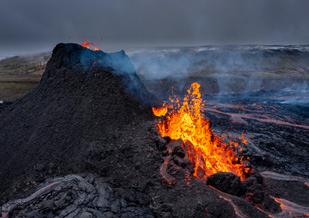
The Lava Centre just received two Red Dot Awards, which cement its position as a world class exhibition.

LAVA Centre is the best place to learn about the new Fagradalsfjall eruption, with new exhibits explaining the eruption and new film footage in the volcano cinema.

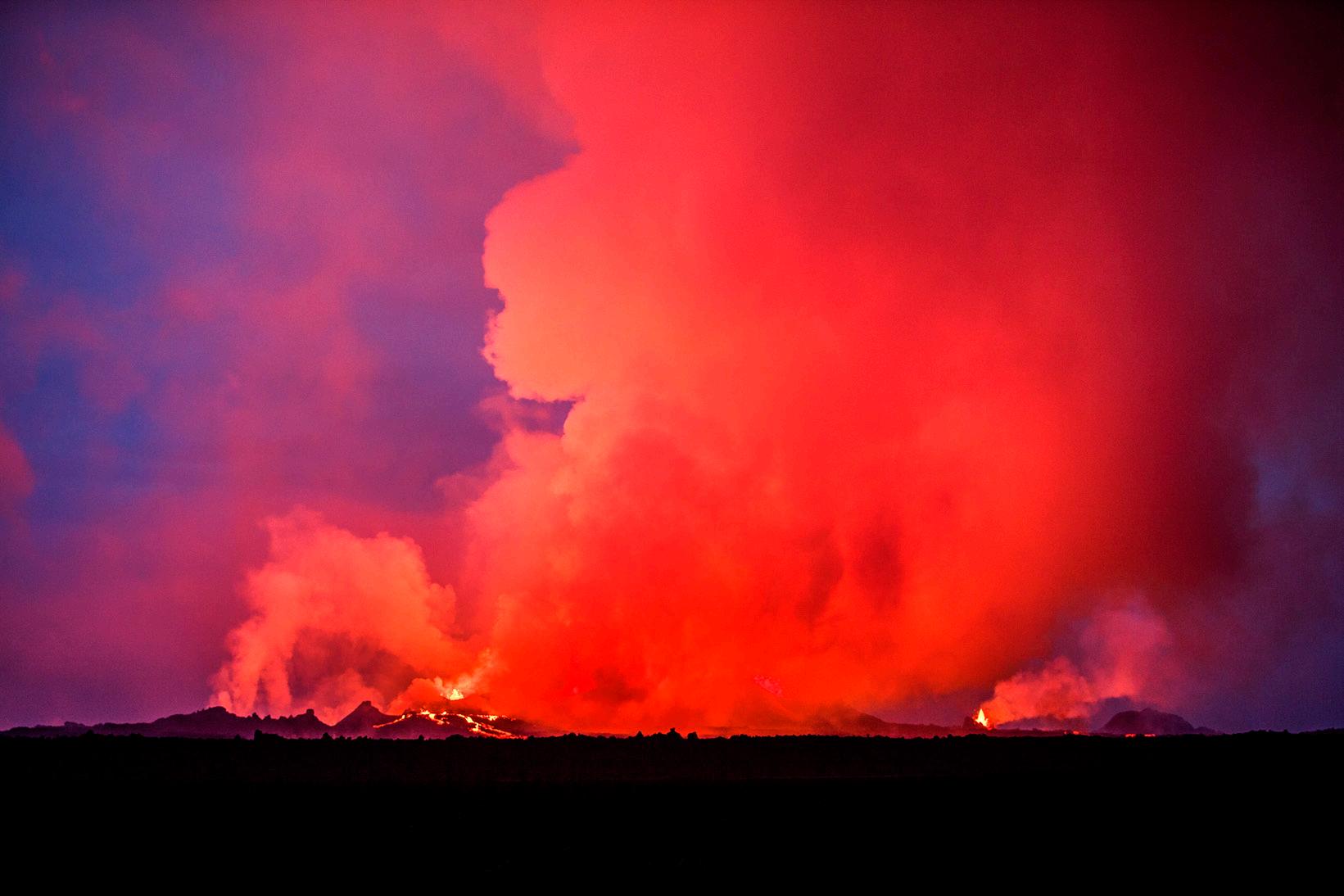
The 1783-4 eruption of Laki was the biggest eruption in recorded history. An estimated 42 billion tonnes of poisonous gases and dust darkened the skies. Haze from the eruption floated east as far away as India, disrupting the monsoon season and leading to drought and crop failures. The famine that hit Egypt in 1784, was a result of the eruption, and killed roughly one-sixth of its population. Back in Iceland, an estimated 20–25% of the population died from famine, and over half the livestock was poisoned or killed by giant hailstones. Food shortages contributed to social unrest across Europe and contributed to the French Revolution of 1789 that gave birth to western democracy.
Iceland was also the site of the second biggest emission in recorded history: the 2014 eruption of Bárðarbunga. In just 6 months, Bárðarbunga produced enough lava to cover the island of Manhattan - 85km2
In Jules Verne’s Journey to the Centre of the Earth, the heroes climb down a crater on the Snæfellsnes peninsula to find vast oceans filled with extinct prehistoric creatures. While an encounter with a herd of mastodons is unlikely, a trip to Þríhnúkagígur (Thrihnukagigur) still feels pretty Jules Verne.
Þríhnúkagígur is the only volcano in the world
where you can descend into the magma chamber. Discovered in 1974 and opened to the public in 2012.
Surtsey, Iceland’s most southern point was formed by a volcanic eruption at the bottom of the ocean and emerged from the water on November 14, 1963. It was immediately granted protection by law, and to this day, only scientists are allowed to go there, and even they have to get special permission. This means that we have been able to monitor how life settles on a brand-new land from the beginning, which has, of course, been invaluable to scientists.
Iceland has a third of the world’s fresh lava. ‘Fresh’ is a relative term that may need defining. When discussing Arctic Char, it’s best measured in hours. In geological time fresh lava means lava that’s less than five hundred years old. Iceland is full of these ‘Here’s one I prepared earlier’ landscapes offering snapshots of geological time and processes.
Due to changes in on the tectonic level of the earth, Iceland’s volcanoes are actually moving east. Veeeeeeeery slowly. If you visited Iceland 20 million years ago, the volcanoes would all have been situated in the West Fjords. Fifty million years ago, during the Eocene epoch, you would find our volcanoes living happily in Greenland, and 70
million years ago, our volcanoes would have been terrorising dinosaurs somewhere in Canada.

The island has somewhere between 150-200 volcanoes, split into different volcanic systems. About 30 different systems are still considered “active” in Iceland, and 13 of them have erupted since the Viking Settlement in 874. The most recent eruptions were in Fagradalsfjall valley in 2021, which lasted 6 months, and nearby in Meradalir in 2022, which lasted only 3 weeks. These short-lived eruptions were the first on the Reykjanes peninsula in over 700 years!

There are all sorts of novelty holidays you could observe if you were so inclined. There’s Bubble Wrap Appreciation Day in January, while World UFO Day is in July, and Talk Like a Pirate Day comes around every September.
But our favourite unofficial holiday – though still far more official than anything listed above – is Beer Day, which thirsty Icelanders observe every March 1.

Yes, really! Beer was banned in Iceland for decades, but the kegs started pouring forth their frothy amber liquid once more on March 1, 1989, and a holiday was born!
Beer wasn’t the only adult beverage banned in Iceland. In fact, in 1908, Icelanders voted in favour of prohibition, which came into effect at the start of 1915.
But total prohibition was short-lived, and not only because home brewing and the black-market were booming. It was actually pressure from Spain that resulted in some alcohol being reintroduced
to Iceland. At that time, Spain was buying a lot of Iceland’s number one export (cod), but Iceland wasn’t reciprocating by importing Spanish wine.
So wine was back on Iceland’s shelves in 1921.
Then the legislation was amended again in 1933 to allow for the sale of spirits. But not beer, as the temperance lobby was worried that allowing the sale of inexpensive beer in the country would result in a nation of dribbling drunkards. Instead, Icelanders would toss back “bjórlíki”, or “imitation beer”, made by mixing stronger spirits with low- or no-alcohol pilsners. They say hindsight is 20/20, but that really doesn’t strike us as a more sensible alternative to just permitting beer.
But Icelanders were fine with the status quo for another 56 beer-free years. By the time the 80s rolled around, Icelanders were travelling abroad and soaking up Europe’s beer culture, and soon longed to import that experience.
It wasn’t a clear-cut case, though. Some MPs thought allowing beer would cause young people to start drinking earlier and that people would be drinking beer at all hours of the day, even getting drunk at work. One MP even raised her concerns that beer would replace coffee as the nation’s drink of choice.

Still, on March 1, 1989 Icelanders could walk into their local pub and order a beer.
Today Beer Day is celebrated by drinking a beer or two, with some bars even offering select suds at 1989 prices. Skál!
Reykjavík’s beer culture has been booming in recent years, with a handful of craft breweries popping up and churning out some solid brews, which also appears to be inspiring some of the old dogs to learn a few new tricks and produce some more creative seasonal offerings.
Session Craft Bar (Bankastræti 14) occupies a prime perch right over the junction where Laugavegur, Bankastræti and Skólavörðustígur meet, so you can do some people watching while sampling from their truly impressive offerings. This place boasts a cooled keg room to guarantee the best quality pours and a motto of “If we don’t sell it, it’s because it’s not good enough…” These guys know their beer.
Skúli Craft Bar (Aðalstræti 9) was possibly the first bar in Reykjavík to really celebrate craft beer culture. There’s always an interesting selection of beers on the white-board menu above the bar, so whether you’re hankering for a sour, an IPA or a saison, you’ll find something to wet your whistle.
Kaldi Bar (Laugavegur 20B) is a popular bar serving up their own line of Kaldi beers in their cosy but always lively atmosphere. There are around a dozen beers in Kaldi’s arsenal, from light to dark and everything in between. It’s a cosy place to start the night.
BrewDog (Frakkastígur 8) is a Scottish import that put down roots in Reykjavík some years back to bring a taste of international beer culture to Iceland. The lively bar slash restaurant slings BrewDog’s own line of craft beers, plus a rotating selection of guest beers and ciders from Icelandic breweries.
Einstök Bar (Laugavegur 10) is the new home to one of Iceland’s most successful breweries. Born in 2011 and brewed in Akureyri in the north of Iceland, Einstök quickly gained the attention of consumers and critics alike. Their ales have won international beer awards, and their distribution has brought Icelandic beer arguably further across the globe than any other company. Stop in and quench your thirst with an unbeatable beer.
There really isn‘t a bad time to visit Iceland. Of course in the winter, the weather can be bad and has the potential to turn dangerous. The good news is that there is plenty to do in Reykjavík on a nasty February day.

Many visitors to Iceland come specifically to try and see the northern lights. But, the aurora can be tricky to predict and even harder to see if it‘s cloudy or stormy. Thankfully, we have Aurora Reykjavík, an exhibition focused solely on the northern lights. You will learn about the myths and legends held by different cultures in ages past, the science behind what you are actually seeing, and a dark cinema to watch a 30-minute timelapse video of the northern lights from different spots around Iceland. You can even experience the northern lights in virtual reality!
One of the biggest attractions in the city is Perlan, which is worth a visit even on a sunny day. The museum offers insight into Iceland’s wildlife, but the big attractions are the interactive video on volcanoes, the northern lights film inside the planetarium, and the man-made ice cave. Perlan’s unique architecture also gives visitors a 360-degree view of Reykjavík on its observation deck, and an amazing view from inside the café on the top floor.
If you can’t get out into nature because of bad or cold weather, FlyOver Iceland has got you covered. Experience all of Iceland’s wild beauty - glaciers,
volcanoes, waterfalls, and more - from inside a building in Reykjavík! This interactive experience makes it feel like you are really flying over Iceland. Suspended from a seat in front of a gigantic screen, you will feel the cold wind in your hair, feel the mist and smell the moss as you journey around Iceland.
Why not get warm inside the National Museum where you can learn about Iceland’s long and fascinating history? The main exhibition is Making of a Nation, which takes you from the Viking Age through the fight for independence into modern Iceland. An exhibition opened in November titled My Favourite Things, which, at first glance, looks just like a list of things people left behind when they died. But these probates tell us how Icelanders lived in the 18th and 19th centuries, what they owned, and how their lives differed from people in different classes. Get the Reykjavík City Card for free entry to the National Museum and other museums around the city!
Reykjavík is home to several different art museums and galleries. If you purchase the Reykjavík City Card, you can visit all of them free of charge! But we recommend two in particular for a cold winter day: The National Gallery and Kjarvalsstaðir. The
National Gallery isn‘t just home to the best and most treasured works of art created by Icelanders but also to international artists as well. For a detailed list of ongoing exhibitions in Reykjavík museums, check out pages 70-82.

Nothing warms you up on a frigid day like a hot cup of coffee or hot chocolate. There‘s perhaps no better way to get familiar with Icelandic culture than by getting a book by an Icelandic author – we recommend Yrsa Sigurdardóttir‘s true crime novels – and curling up in a café to people watch. Reykjavík Roasters, Kaffihús Vesturbæjar, Café Babalú and Mokka Kaffi are just a few cosy spots for a tasty cup of joe and a comfy atmosphere.
Even if the days are getting longer, it feels like it‘s always 5 o‘clock (or later) – so why not have a drink?! Whether it‘s a tall glass of red, a tasty lager, a fancy cocktail, or a bitter IPA, Reykjavík has you covered. Ölstofa is a cosy bar in the heart of downtown where it‘s easy to chat with the locals. For a delicious cocktail, head down to Slippbarinn in the old harbour. Skúli offers a wide variety of craft beers, from sours to barrel-aged porters to double IPAs. Warm up with a glass of wine in Vínstúkan Tíu Sopar, a cosy wine bar in a basement on Laugavegur. Or head to Lebowski Bar for a classic White Russian.

Yes, we go to the pool in winter. If you can stomach the walk from the changing rooms to the water, it is worth it. Once you plop down in the steaming hot water, you will forget the cold of winter. The pool is a great place to meet and chat with locals. But if you are looking for a more luxurious experience, just head over to Kópavogur and visit the Sky Lagoon and relax with their 7-step ritual, complete with sauna and mud mask. And who knows, if you go in the evening and the skies are clear, you may even see the northern lights from the warmth of the geothermally heated water! Check out the
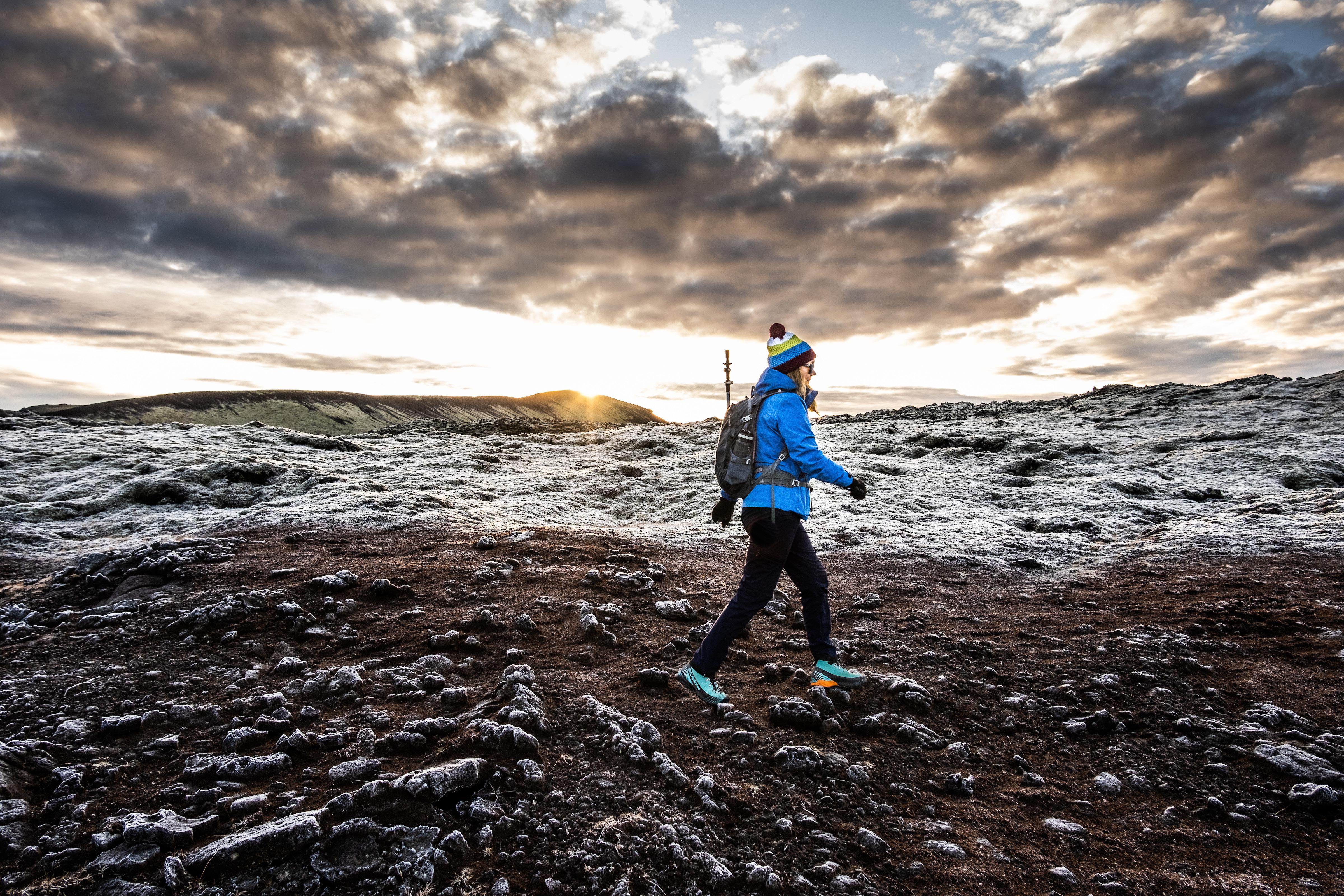
Even though Iceland doesn’t have high mountains like Switzerland, it is a ski paradise – if you know where to go. Bláfjöll is a popular ski area situated just half an hour outside of Reykjavík. It’s the largest ski resort in Iceland, with runs of varying difficulty levels. Hlíðarfjall in North Iceland is Akureyri’s topnotch ski resort. Floodlit slopes guarantee skiing in the dark winter months. Iceland also has a lot to offer for cross-country skiing and heli-skiing enthusiasts.


On a clear day, glacier hiking is one of the most amazing things you can do in wintry Iceland! The glacial tongue Sólheimajökull offers excellent options for short, easy, and beautiful hikes, with a breathtaking view over the glacier and the south coast of Iceland. Glaciers are beautiful but tricky; that’s why it’s only safe to go on a hike with an
If hiking isn’t your thing, you can also go snowmobiling, which is possible on the glaciers Langjökull, Mýrdalsjökull, and Vatnajökull. You will

be brought to the snowmobile starting point on top of the glacier by either glacier truck or super jeep. After putting on a warm overall and helmet, you are ready to go on an exhilarating ride over the ice. It’s the coolest way to enjoy the beautiful view of the glacier and its surroundings.
Iceland offers great opportunities for underwater adventures, as you can snorkel between two tectonic plates. Snorkelling or diving in the Silfra fissure in Þingvellir National Park is a fantastic experience; the lava-rock filtered glacier water is some of the cleanest in the world and provides impressive visibility. The water is 2-4°C all year round, but don’t worry, a dry or wet suit will protect you from (most of) the cold.
An ice cave tour is a great winter activity. You can only visit natural ice caves in the wintertime since they are unsafe in summer. You can find ice caves in different areas of Iceland, even (an artificial one) in Reykjavík! The longest man-made ice tunnel in the world is available any time of year. It’s in Langjökull glacier and offers a unique glimpse of the insides of a glacier!

Northern lights can be seen everywhere in Iceland in winter, but you need to be far away from the city lights dimming your view to get a good look at them. Northern lights tours take you away from the city on
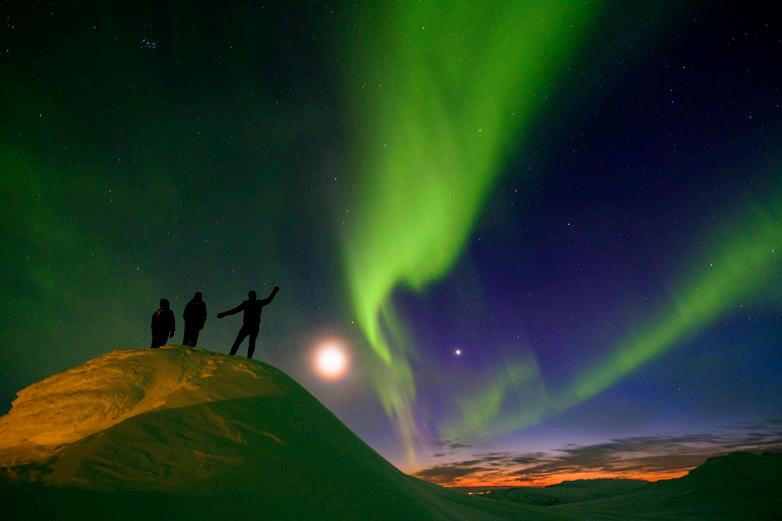
a night when the auroras are active. Remember to wrap up and be patient; it might take a while for them to show. If the northern lights don’t cooperate on the night of your tour, you can usually try again for free.
The weather in Iceland is fickle, and the most important thing is to stay safe. By all means, make plans, but be prepared to change them if the weather is acting up. Check the weather forecast before you set off, and don’t risk driving far if the weather is bad! If you’re not used to driving in wintry conditions or feel uncomfortable, take a guided tour instead.
For more information, check out the link or visit the What’s On Information Centres on Laugavegur.
Gljúfrasteinn was the home of writer Halldór Laxness (the winner of The Nobel Prize in Literature 1955) and his family for more than half a century. The house is now a museum, where the author’s home is preserved just as it was when he lived and worked there.
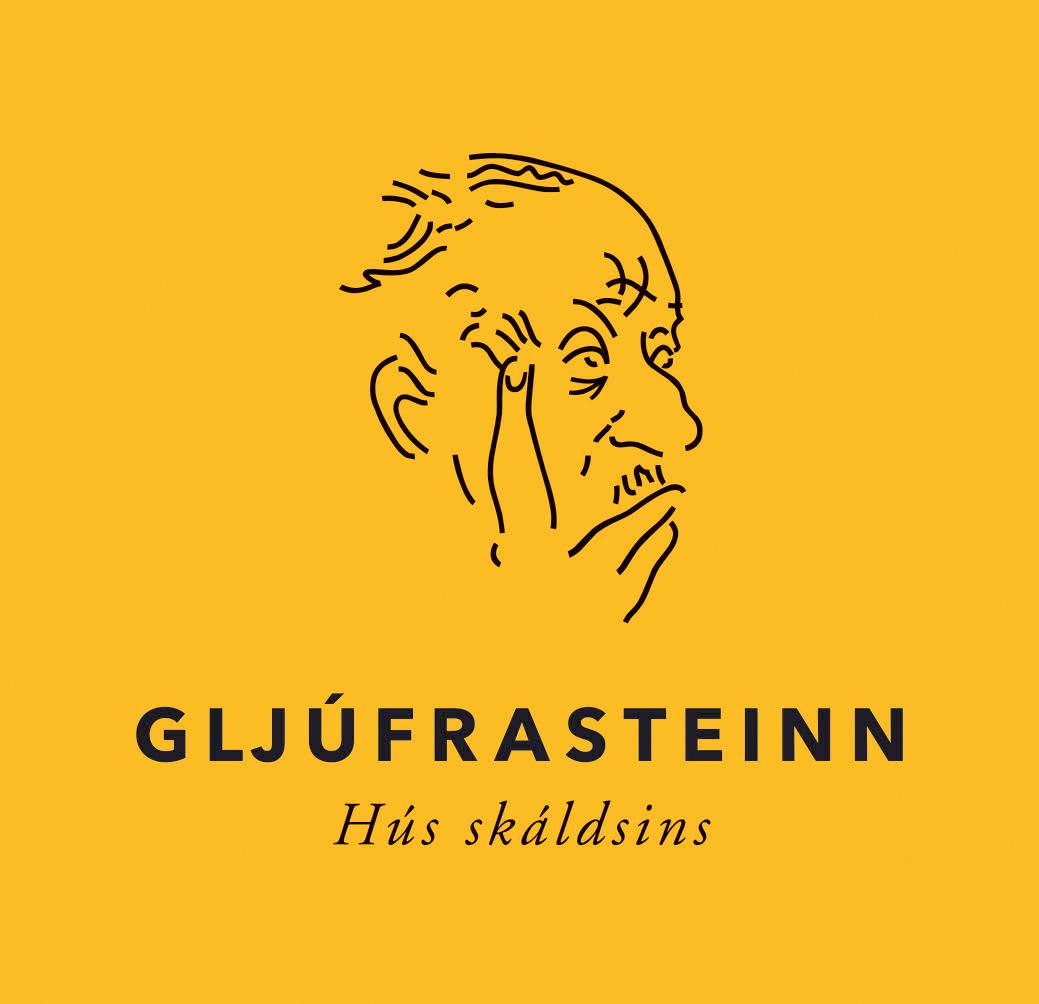

The museum is open on Tuesdays to Fridays from 10:00–16:00.
Audio guides of the house are available in Icelandic, English, German, Swedish, and Danish, as well as an illustrated guide in French.
Gljúfrasteinn-Laxness museum is located in the valley of Mosfellsdalur on the way to Þingvellir National Park, only a 20-minute drive from Reykjavík.
For more information, go to www.gljufrasteinn.is.
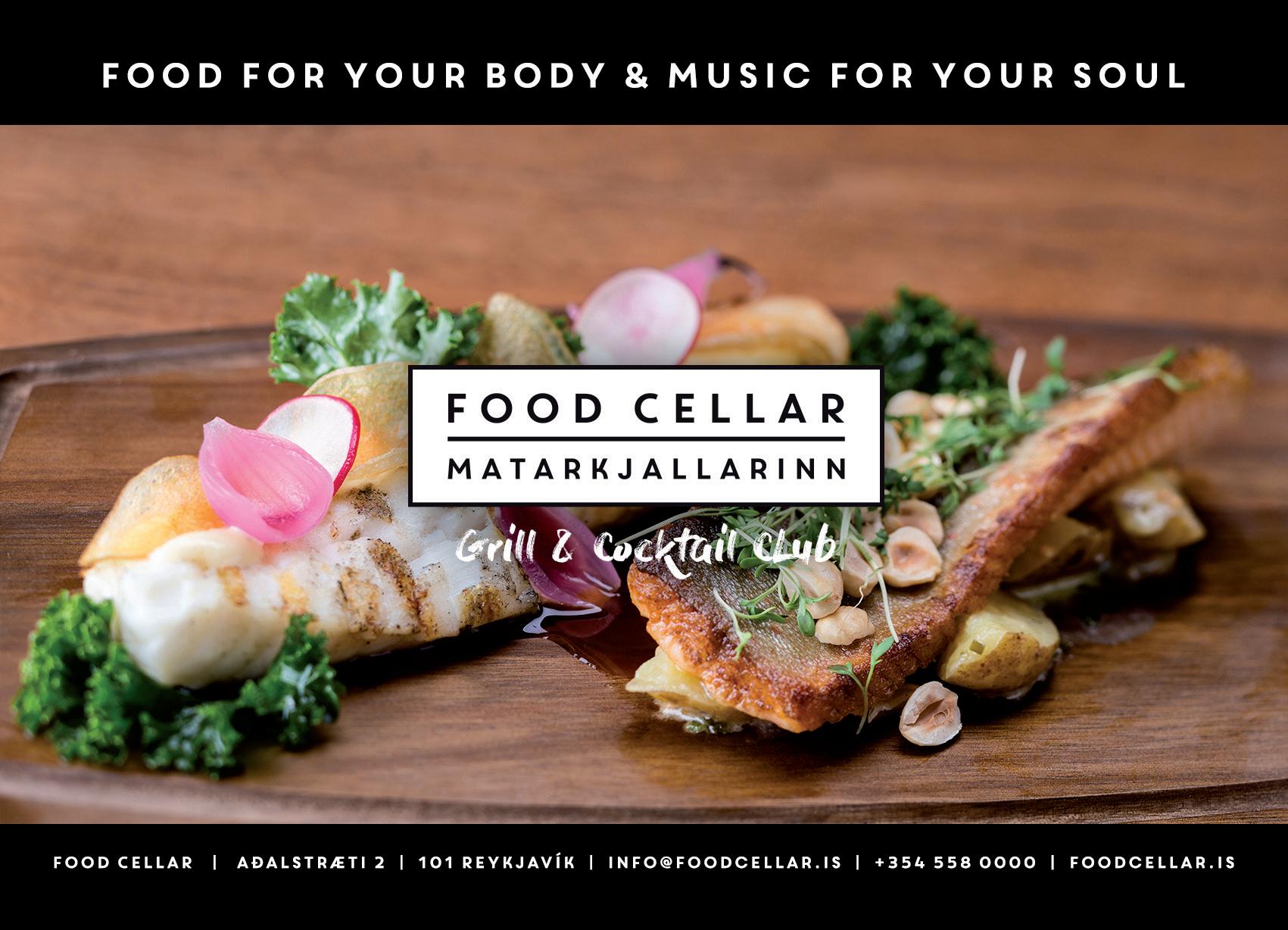

While Iceland’s horses get all the attention for being unique to the island, modern day Icelandic sheep are also direct descendants of the livestock that arrived with settlers in the 9th century. As such, they boast some characteristics that have long since disappeared from their relatives in Europe. Like their ancient forefathers, the Icelandic sheep are double coated, with an outer layer of long, coarse hair called ‘tog’ that repels water, and a short, soft and fluffy undercoat called ‘þel’, which is a perfect insulator. This is a big part of what makes Icelandic wool –and the garments made with it – so special.
There have been innovations in Icelandic wool. For instance, the two coat layers used to be separated by hand (a very labour-intensive process) and used for different purposes. In the 1920s, however, quicker new methods of processing the wool were created and Iceland’s famed ‘lopi’ – consisting of the two coats spun together to produce strands that are simultaneously light, warm, tough and waterproof – was born.
Icelandic sheep have always been bred in a variety of colours, and some farmers even pride themselves on preserving specific colours. The result is Icelandic wool being produced in as many colours as there are sheep, with the most common

and grey. Besides these classic “sheep colours”, lopi can also be found dyed in every colour of the rainbow.
That double coat mentioned above gives lopi its dual-fibre structure, making it perfect for knitting garments that are warm, waterproof and light. Whether you intend to knit a scarf or try your hand at the intricate patterns of a famous Icelandic lopapeysa, lopi is ideal. Not only is it beautiful, it’s also easy to knit with (the loose-spun wool can be twisted back together if broken) and it felts easily. As any Icelandic child will tell you, lopi is scratchy right against the skin, so it’s best used for outer layers of clothing – unless you get your hands on some lambswool, that is.
By “magical” we mean it’s self-cleaning, which is just about as close to magic as it gets for any parent trapped in an endless laundry cycle. Lopi garments need to be hand-washed, but it almost never needs to be washed. Thanks to the structure of the hair fibres, lopi doesn’t hold bacteria like cotton or synthetic materials do. So the only time you might need to wash your woollens is when they get stained (which is also rare, since they’re fairly waterproof). So just air them out and call it a day. Another of lopi’s magic tricks – one we absolutely
the lopi in question – is that it doesn’t burn. It may light up if you put it right in a flame, but it will selfextinguish once you take it out. Amazing!

Icelandic wool looks great just about any way you knit it. And if you don’t knit yourself, just check out the range of products Icelanders have made with their wool as proof of its versatility – and its beauty. You can find everything from simple hats and mittens to the colourful scarves and blankets by Vík Prjónsdóttir. Of course, the most popular wool garment in Iceland is the Lopapeysa, the classic sweater with intricate and unique patterns around the yoke. An infinite range of classic lopapeysur can be found at the Icelandic Handknitting Association, while Farmer’s Market boasts a fashion-forward
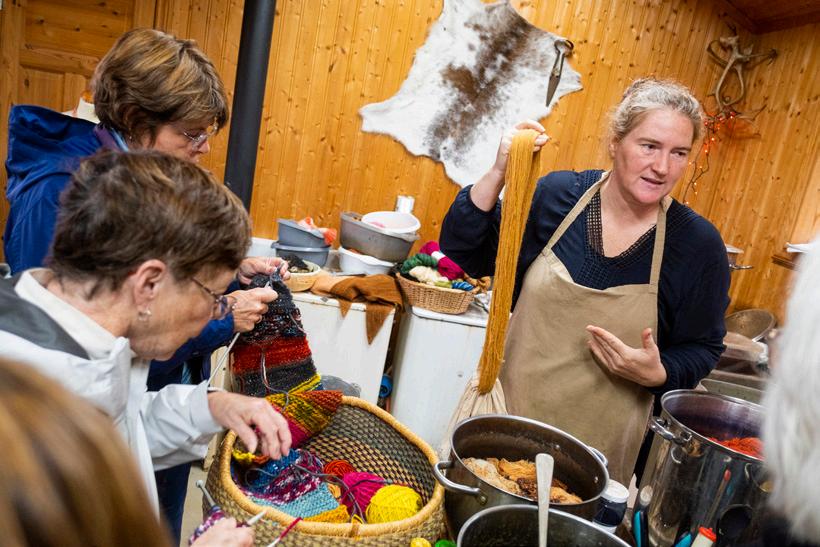
Salted cod croquette with charred tomato jam & cured egg yolk
Icelandic Maki Roll with smoked arctic charr, avocado, green apples & yuzu mayo
Miso glazed lamb fillet & shank of lamb with carrots, baby potatoes & lamb broth
White chocolate skyr mousse with milk ice cream
9.900kr
Gaia restaurant
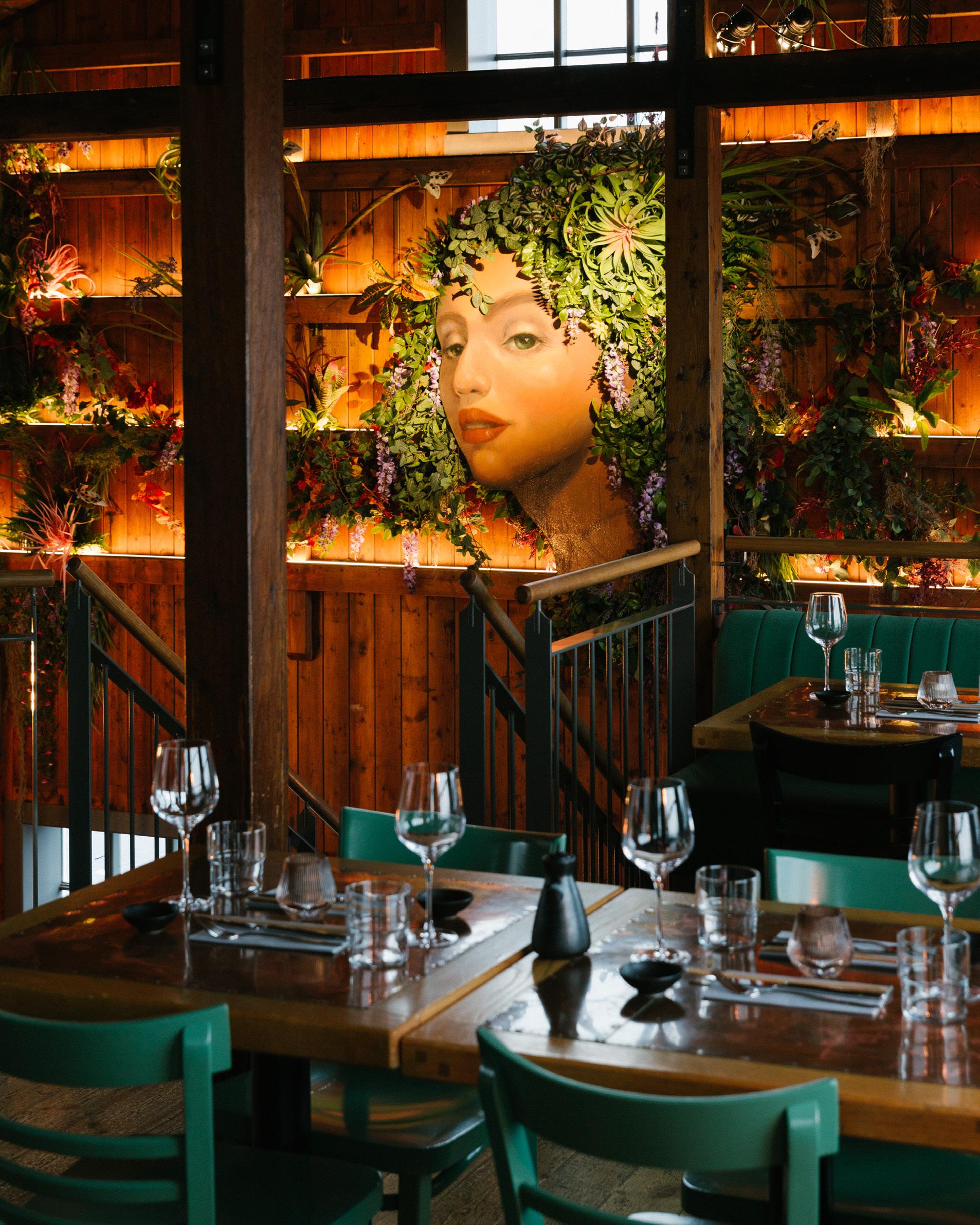
Ægisgarður 2 - 101 Reykjavík
gaiareykjavik.is
Calling all cinephiles! The Stockfish Film Festival returns to Bíó Paradís for its 8th annual celebration of up-and-coming arthouse films from Iceland and beyond.
From March 23 through April 2, the festival will screen a carefully curated selection of awardwinning films that otherwise wouldn’t be available to Icelandic audiences.

In addition to offering a lineup of stellar films –including Close, Mariupolis 2, Eo, The Rise and Fall of Comrade Zylo and 107 Mothers – the festival runs a short film competition for up-and-coming creators to showcase their work, and maybe win some accolades (and cash prizes) in the process. This year, Icelandic filmmakers were invited to submit short films in four categories: fiction, documentary, experimental and artistic music video projects.
More than an opportunity to watch world-class cinematic offerings, Stockfish’s Industry Days also give aspiring filmmakers and the general public the
chance to learn more about the craft directly from those working in the industry in Iceland and around the world. In previous years, Industry Days participants have benefitted from the insight of the likes of French film development consultant Isabelle Fauvel, Norwegian director and writer Mona J. Hoel, and Canadian film editor Justin Oakey, among many others.
The Stockfish Film Festival launched in 2015 as a reincarnation of the late Reykjavík Film Festival –not to be confused with the Reykjavík International Film Festival (RIFF) – which had been established in 1978. A collaboration between the Icelandic Film Centre, the Film Directors’ Guild of Iceland, the Association of Icelandic Film Producers, the Society of Women in Filmmaking, the Icelandic Actors’ Guild, the Icelandic Cinematographers’ Society and the Icelandic Dramatists’ Union, Stockfish’s modus operandi is to create an atmosphere in Reykjavík that will encourage increased collaboration between domestic and international film communities.
Stay up to date with announcements and buy your festival pass at StockfishFestival.is
Northern lights, snow, and frozen waterfalls. There are many reasons to enjoy Iceland in wintertime. One reason stands out: skiing.
Iceland is a world-class destination for skiing enthusiasts. The best thing about going skiing from Reykjavík? The slopes are only a short drive away from Reykjavík city centre. And good news for beginners, there are almost no trees. Happy skiing!
Bláfjöll is a popular ski area, conveniently situated just half an hour outside of Reykjavík. It’s the largest ski resort in Iceland, with runs of varying difficulty levels covering a total of 15 km. The slopes are wide and well-maintained. The longest is 2.5km and has an elevation difference of 240m. The most difficult is 700m long and has an elevation difference of 200m. With a ski rental and a ski school located on-site, you will find everything you need! Depending on the weather and snow conditions, the season runs from January through May. In addition to the downhill routes, Bláfjöll also has cross-country skiing courses.
Skálafell ski area is located 25 minutes east of Reykjavík, and has four ski lifts. With seven kilometres of slopes and elevations between 380m and 700m, it has great opportunities for downhill

skiing and snowboarding in addition to cross-country skiing tracks. Skálafell is open during weekends from late January until the middle of April.
Bláfjöll shuttle: The shuttle goes to Bláfjöll every afternoon during weekdays and around noon on the weekend, returning approximately five hours later. The shuttle makes a few stops along the way but for skiers in the city centre, go to the N1 petrol station on Hringbraut, close to BSÍ. For the schedule and prices, go to www.skidasvaedi.is
By car: Take the ring road (route 1) direction east. about 10 km after passing the last gas station in the capital area. there will be a sign on the righthand side of the road that says “Bláfjöll”. Follow the road for 10 minutes or so and you’ll arrive at your destination.
For information on opening hours and skiing conditions, go to www.skidasvaedi.is
Bláfjöll
Mon-Fri: 14-21
South Area: 17-20
Sat-Sun: 10-17
Skálafell
Sat-Sun: 10-17
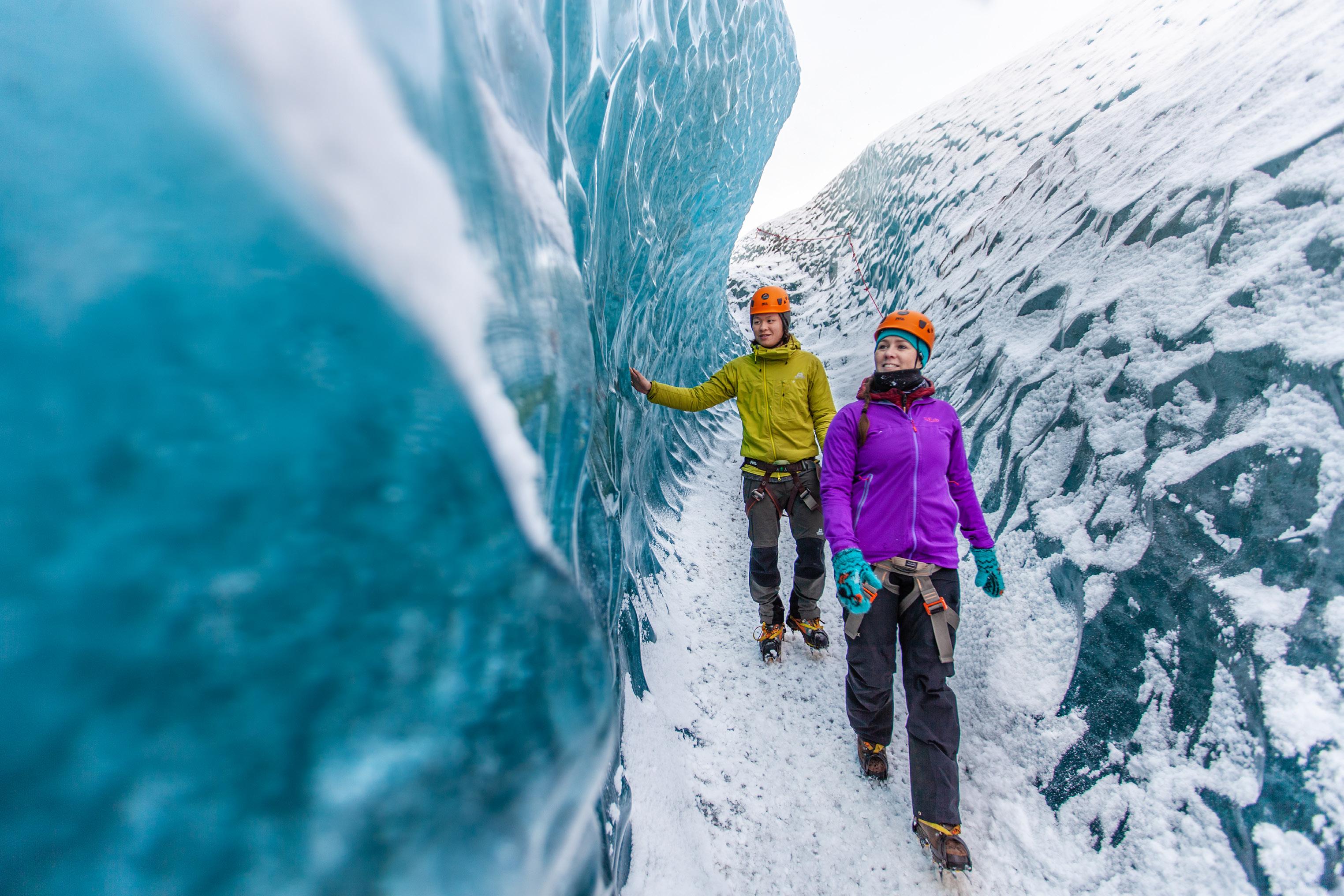


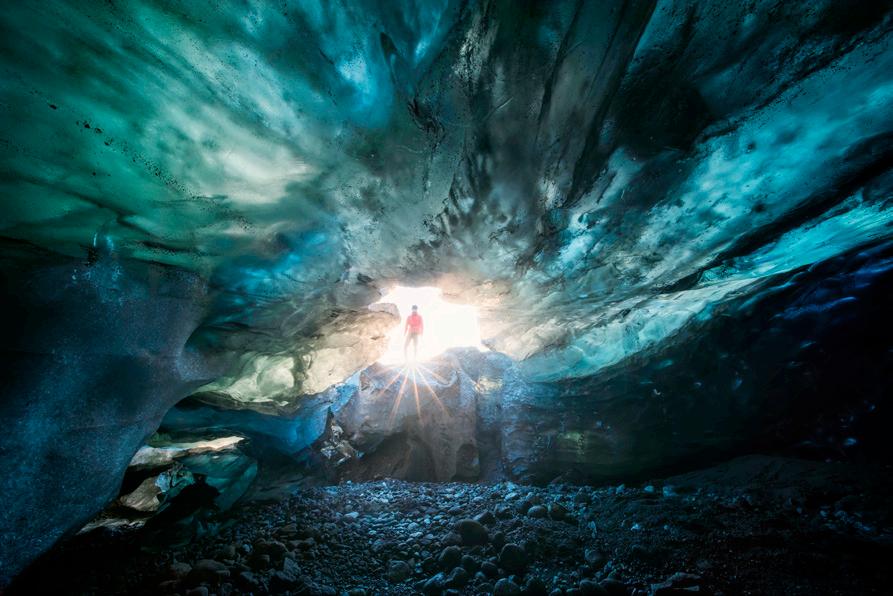
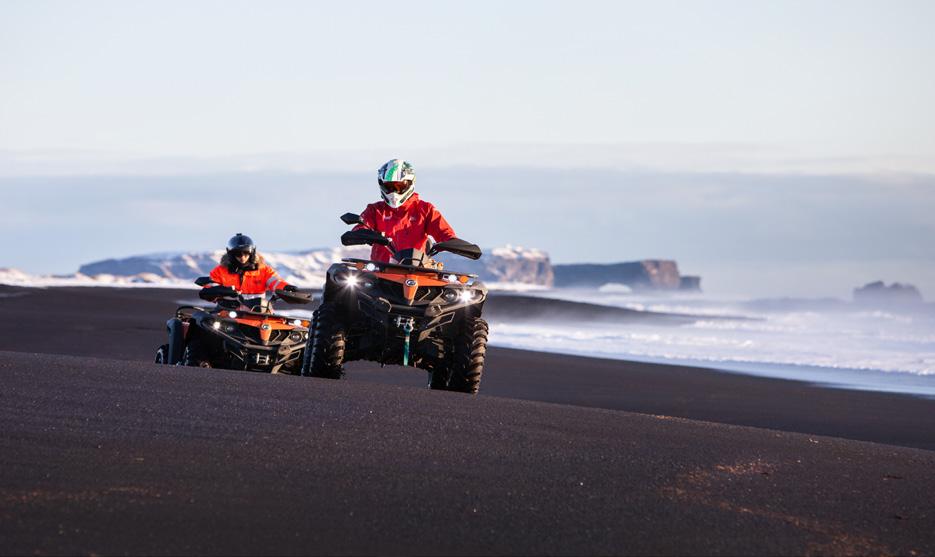

swimming pools Saunas, steambaths
Hot tubs and jacuzzi
Admission Adults 1.100 isk. Children 175 isk.
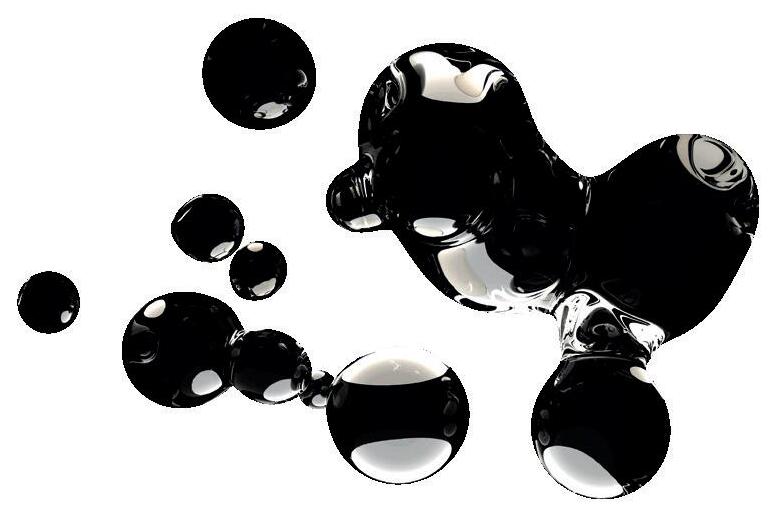
Free entry for children 0-5 years old and senior citizens aged 67 and over
Thermal pools and baths in Reykjavik are a source of health, relaxation and pureness.
All of the city´s swimming pools have several hot tubs with temperatures ranging from 37˚ to 42˚C (98˚–111˚F). The pools are kept at an average temperature of 29˚ C (84˚ F)

Food and Fun is an annual culinary festival in downtown Reykjavík. After a three-year hiatus caused by the pandemic, the festival will return March 1-4! Food and Fun brings chefs from all over the world to Reykjavík. There, they get the chance to work with local restaurants and Icelandic ingredients. During the festival, Reykjavík is the place to be for foodies and food lovers!

Eighteen years ago, when February and March were still off-season months in Iceland, the idea was born to organise a competition between Icelandic and foreign chefs to brighten up Icelandic winter. In this
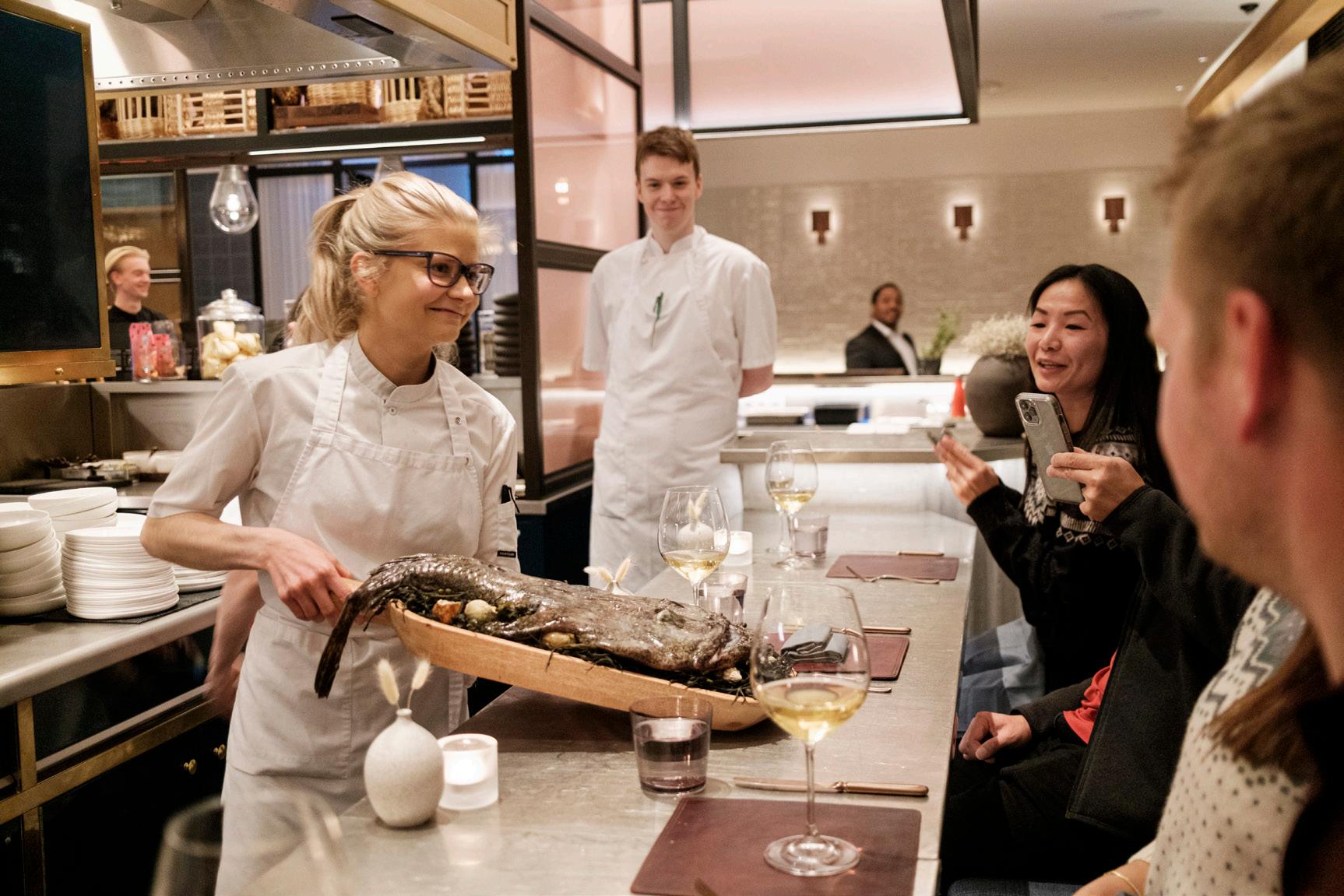


the world work together with Icelandic restaurants. From the very beginning, foreign chefs have shown the project great interest, and fewer have been able to participate than wanted. This has thus become an internationally renowned gastronomical festival that attracts chefs and guests from all over the world to Reykjavík to join up with the local restaurant scene and participate in a cooking event.
The goal is to develop exciting menus based on surprising combinations and flavour experiments. Bringing more people to Iceland in the dark winter months to enjoy a food festival has been a success. The festival has thousands of visitors each year!
As the main purpose of the Festival has been to attract tourists to Iceland and gain media coverage of different aspects of the country‘s agricultural and seafood products, the guest chefs are required to use only Icelandic material for the centrepiece of their dishes. The emphasis of the festival, then, lies on Icelandic ingredients, like fresh fish, freerange lamb and organic dairy products. All are grown sustainably in the clean surroundings of the Icelandic countryside and the Atlantic Ocean.
The best Icelandic basics are mixed with exotic ingredients, resulting in exciting new creations. Culinary professionals from all over the world have shown great enthusiasm for working with Icelandic produce. Because of the festival, Icelandic skyr is now also used as an ingredient in several savoury recipes, where it was originally only viewed as a
sweet dessert or breakfast item. New viewpoints, angles, and outlooks bring professional cooking to a higher level.
During the festival, famous chefs are invited to rate the recipes and food that have been designed for the festival. From all the finalists, three are chosen to compete for the Food and Fun Chef of the Year Award.
Several of Reykjavík’s most exciting restaurants will pair up with internationally renown chefs. British chef Matthew North will bring his talents to Héðinn; Amandine Chaignot, who runs Pouliche in Paris and is a judge on the French version of MasterChef, is teaming up with Eiriksson Brasserie; Noks Majozi is the senior pie maker and sous chef at the Pie Room in the celebrated in the Holborn Dining Room in London, and she will be heading the kitchen in Hnoss for the festival.

For the other restaurants and talented chefs that will be participating in Food and Fun, or to book a table, visit https://www.dineout.is/foodandfun.

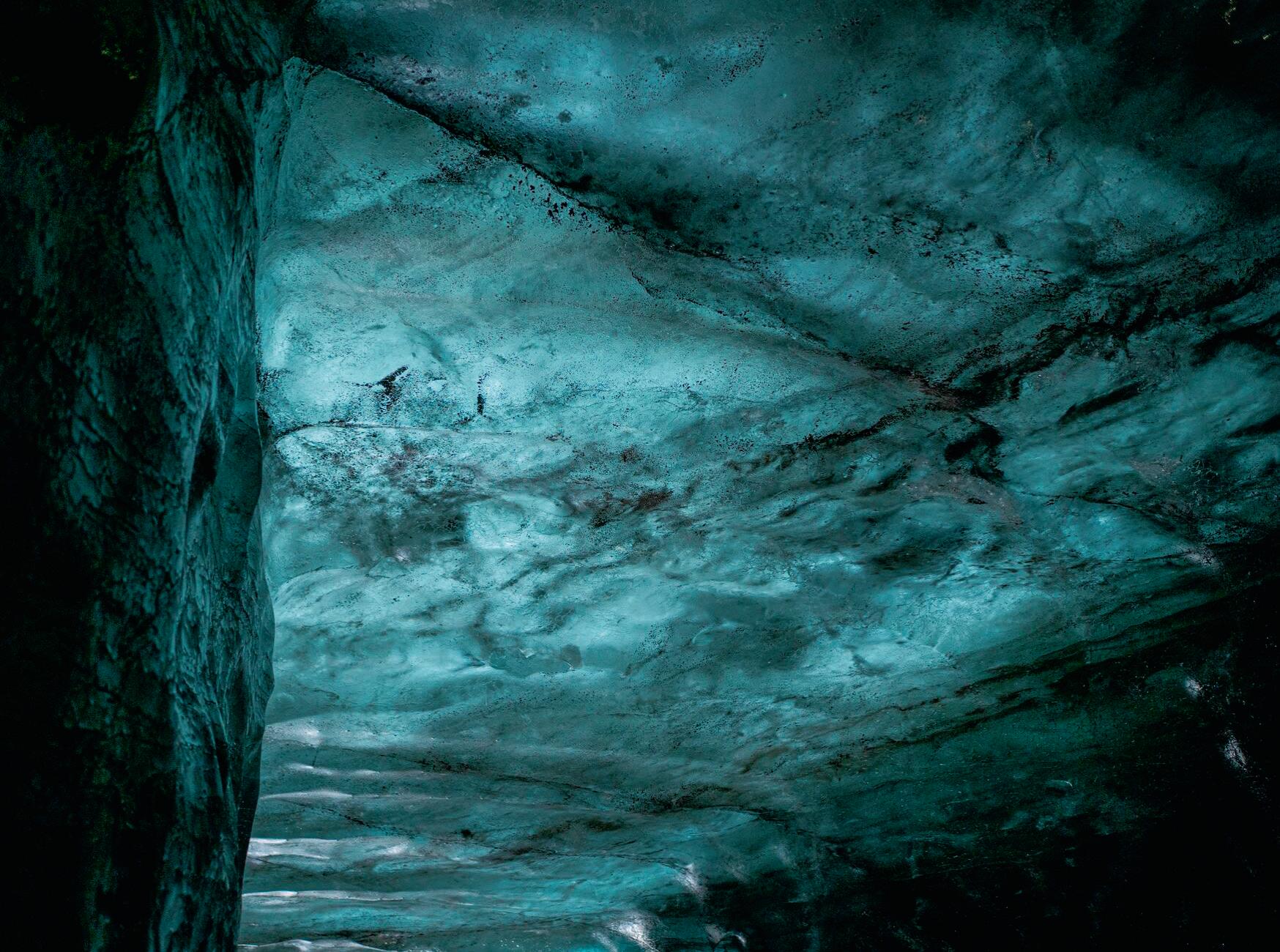





> Lamb & Flatbread
> Arctic Charr & Blini
> Icelandic Platter
> The Lamb Burger
Fjallkonan is a lively restaurant & pub in the heart of Reykjavík offering a selection of Icelandic and international dishes from local ingredients.

Casual and cosy atmosphere with a fun and festive vibe. Stop by for snacks & drinks, lunch or dinner.
> Skyr Eton Mess Cheesecake FJALLKONAN WELCOMES YOU!

16-18 million years BC: The formation of Iceland. Volcanic eruptions formed the landmass known as Iceland.

871 AD: The settlement. Ingólfur Arnarson killed a man in Norway and fled to Iceland.
930 AD: Alþingi (the Icelandic Parliament) was established. It’s the oldest still existing parliamentary institution in the world.
1000 AD: Conversion to Christianity, the discovery of America. Parliament decided everyone would be Christian or at least pretend to be. Leifur “the Lucky” Eiríksson got lost and found America, didn’t like it, and came home.
1262 AD: Iceland submits to Norway. Civil war between powerful clans was finally resolved by forfeiting independence and submitting to Norwegian rule, before winding up under Danish rule
1550 AD: Reformation. A violent conflict between Catholics and Lutherans ended with the beheading of Catholic bishop Jón Arason.
1602 AD: Monopoly (not the fun kind). The king of Denmark decided Icelanders could only trade with particular Danes, resulting in economic stagnation
until the monopoly was abolished in 1786.
The 1750s: The Enlightenment and the birth of Reykjavík. Industrialisation and modernisation started when “Sheriff” Skúli Magnússon started wool manufacturing at Aðalstræti 10.
1944 AD: Independence. Iceland declared independence while Denmark was too busy being invaded by Germany to protest.
1955 AD: Nobel Prize. Halldór Laxness was awarded the Nobel Prize in Literature.
1980 AD: First female president. The world’s first democratically elected female head of state, Vigdís Finnbogadóttir, took office.
2008 AD : Crash and miraculous recovery. Iceland’s banking system went spectacularly bankrupt. Since then, things have picked up surprisingly well.
2009 AD: First openly gay prime minister. The world’s first openly lesbian head of government, Jóhanna Sigurðardóttir, took office.
2010 AD: Volcano. International air traffic was delayed for weeks after the Eyjafjallajökull volcanic eruption.
Iceland’s favorite softdrink since 1955

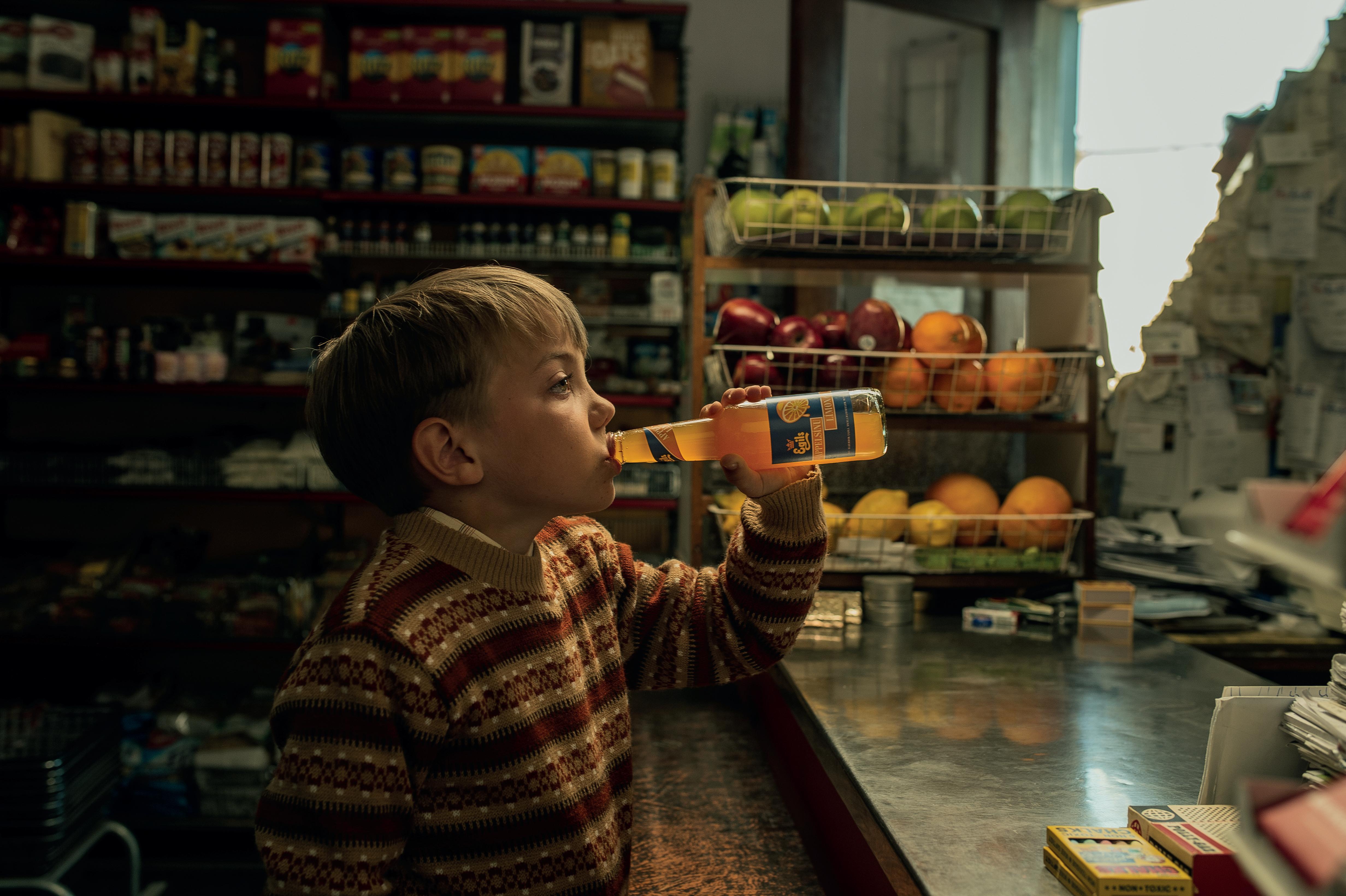

Reykjavík is an amazing place to travel with kids at any time of year. It’s bursting with colourful houses, squares and parkettes, and interactive museums that encourage young (and old) imaginations to flourish.
Here are a few of our favourite things to do with kids in Reykjavík.

We’re of the opinion that you’re never too young for museums. Reykjavík has a lot to choose from, but those that we’ve found to be most kid-approved have an interactive element or two.
The Maritime Museum will teach the whole family about Iceland’s fishing tradition from the olden days up to modern times, while allowing kids to dress up like fishermen, go on a scavenger hunt through the exhibit, and try their hand stacking crates of fish with a forklift.
The Settlement Exhibition Reykjavík 871±2 is another family favourite. Built around the remains of a Viking longhouse excavated smackdab in the middle of Reykjavík, the museum tells the story of Reyjavík’s settlement (in the year 871, give or take
a couple years) with interactive screens to learn more about the rocky remains. There’s also a room where kids can dress as Viking settlers and play old games.
Also great for families travelling with younger members are the Árbær Open Air Museum, with its turf houses and olden-day charm, and the National Museum of Iceland, which has a room for families to enjoy.
Reykjavík’s central pond, Tjörnin, is home to a healthy population of ducks, geese and swans, in part thanks to its proximity to Vatnsmýri, a protected wetland and bird sanctuary, to the south. A stroll around the pond is a great way to spot the pairs of ducks floating around and doing their thing.
Feeding bread to the ducks is frowned upon – and not allowed at all over the summer when ducklings arrive – but if you happen to have frozen peas or birdseed in your pocket, feel free to toss that for your new beaked buddies.
Expect to see mallards, gadwall, greater scaup, tufted ducks and teal, plus greylag geese and
swans. There’s also a sign on the north end of the pond (by City Hall) with descriptions of some birds you might spot in the area.
Iceland’s thermal pools are good for swimming laps and lounging around in, but they’re also tons of fun for kids. Many locations have kids’ pools, with fountains and slides for the littlest ones, and bigger kids will get a thrill out of the bigger slides with their twists and turns.
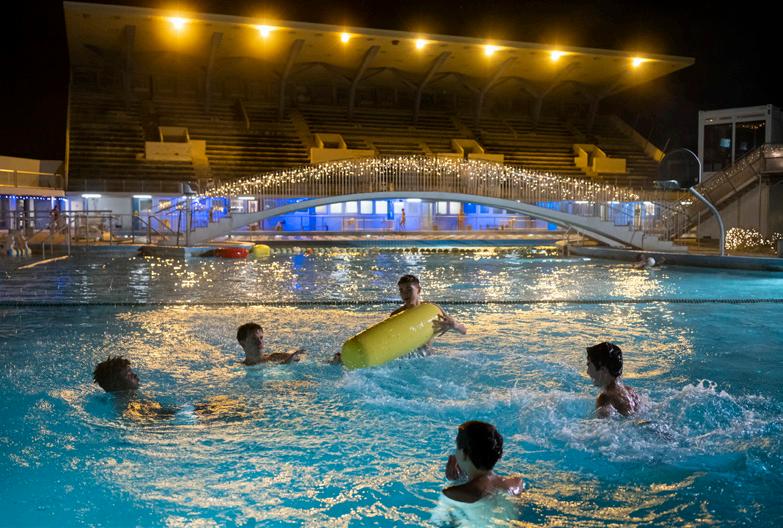
Just remember: shower with soap before suiting up and jumping in.
Even if you’re not a family of avid equestrians, you can enjoy a day on horseback in Iceland. Icelandic horses are known for their calm and friendly nature, making them perfect for inexperienced adults or children to ride – plus they’re shorter than horses you find in other parts of the world, so climbing into the saddle is less intimidating an experience. Always check the minimum age requirements before booking a riding tour, but some will welcome kids as young as 7-years old. It’ll be an unforgettable experience for kids of all ages.
Introduce your kids to whales while in Iceland. A number of whale watching tours depart from Reykjavík’s old harbour year-round, taking you out on Faxaflói Bay for a chance to spot humpback whales, minke whales, white-beaked dolphins and harbour porpoises.
There’s a real thrill in the hunt, and the excitement onboard goes through the roof at the sight of a humpback’s mighty fluke slapping the water. Go later in the spring or during the summer to also see puffins, which are not the most graceful of birds –kids and adults will get a laugh as they crash-land on the water’s surface.
Kids that don’t have the patience (or the stomach) for a three-hour tour might opt for a visit to Whales of Iceland, where they can come face to face with the true scale of the gentle giants of the sea, learn about whales and play on the orca-themed climbing structure.
For an activity that your kids will be ooh-ing and ahh-in over long after you’ve departed Iceland, take them inside a glacier. A tour atop Langjökull glacier and into a man-made tunnel dug into it a few years back is a suitable adventure for the whole family. Those travelling with adventurous kids 6-years or older are also able to take a tour of the natural ice cave in Katlajökull glacial tongue, part of the glacier covering the mighty Katla volcano.

Don’t feel like schlepping to a real glacier? Perlan has brought the ice cave experience to Reykjavík. Just catch a shuttle to the glass-domed building on Öskjuhlíð to visit Perlan’s Ice Cave and Glacier Exploratorium, the world’s first indoor ice cave. There’s also an ice cream parlour and cafe at Perlan, which you definitely won’t find atop a real glacier.
If it’s a nice day to spend outdoors, there are few better places to be than in Reykjavík’s Laugardalur neighbourhood. Take the kids to the Reykjavík Family Park and Zoo to meet Icelandic farm animals, plus foxes, seals and reindeer. Let them run wild and jump on the air trampoline in the park’s expansive play area, and then wind down with a stroll through Reykjavík’s Botanic Garden. It’ll be a day well spent just outside the city centre.
If you’re spending a day or two exploring Reykjavík’s museums and swimming pools, consider buying the Reykjavík City Card. Available for 24hr, 48hr, and 72hr periods for kids and adults, it gives you access to museums, swimming pools, public transport, and more at one low price.






Iceland‘s glaciers are part of its unique, beautiful and harsh landscape. Every year, thousands of people come to look at these wonders. Perhaps the most adventurous dare to hike across the glacier, which can be dangerous and is only to be done with an experienced guide. There is another option: enjoy the glacier from the inside.
Ice caves can be found in different parts of Iceland. Some occur naturally, while others are manmade. Regardless of how they were created, the experience of walking through the ice into a glacier is unlike anything you have ever experienced. And just like walking on top of a glacier, walking into an ice cave should never be done without a guide.
A natural ice cave is formed when the meltwater of a glacier moves through the ice, leaving behind a cavern. The summer sunlight sometimes melts the ice inside the cavern, creating stunning ice formations.
One of Iceland‘s most famous natural ice cave resides in South Iceland under Mýrdalsjökull glacier, near Vík. Created by a volcanic eruption – Mýrdalsjökull is also home to Katla, one of the most violently explosive volcanoes in the country – what is now known as The Secret Ice Cave is

an unbelievable spectacle. To get to the cave, you must first traverse the otherworldly black sands in a special 4x4 vehicle. The illuminating blue of the ice contrasts wildly with the bleak landscape. It is an easy hike through the cave that takes around 3 hours. The most popular ice cave experience, however, is in the man-made cavern in Langjökull. Opened in 2015, this tunnel goes 30m into the ice and then stretches on for half a kilometre. Even though it was fabricated, nature has put its own stamp on the cave, as ice formations have formed naturally inside. To get there, you have to first ride on the giant, 8-wheel glacier truck, which is an unforgettable experience itself. Once inside the cave, however, you will see a side of nature most people never get to experience. Into the Glacier is the company that runs these tours, and they operate year-round.
Don‘t have the time or the ability to get out to these wonders? You can experience an ice cave inside the Perlan museum! Inside the exhibition room is a 100m long ice cave made from 350 tonnes of snow. Make sure you grab a selfie while sitting on the ice throne!
There are several other natural and man-made ice caves found throughout the Icelandic countryside – but these should never be visited without a guide. Ice caves and glaciers change constantly


under influence of the weather and movements of the ice. Outside adventure tours are heavily weather-dependent and might be cancelled based on weather conditions. Caves are sometimes narrow, and cave floors might be slippery. Tour operators will make sure you have the right clothes and equipment.
For more information, check out the link or visit the What’s On Information Centres on Laugavegur.


Reykjavík sightseeing has something for everyone! The city is filled with things to do, places to go, and stuff to see, but some things are just a little bit more important than others.
Check out the map in the centre of the magazine to find the exact location of these Reykjavík sights.
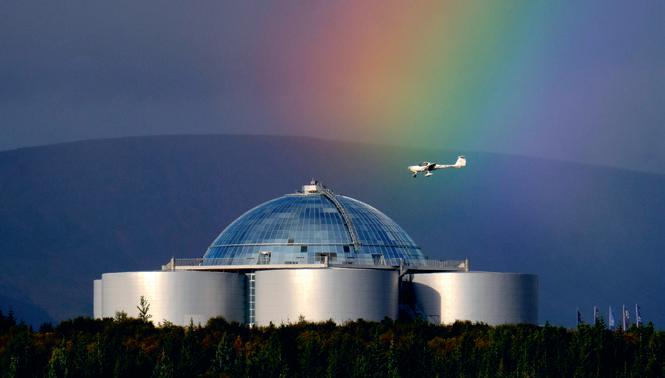



1 HALLGRÍMSKIRKJA Hallgrímskirkja church is one of Reykjavík’s most iconic buildings and is visible from almost anywhere in the city. It’s the largest church and the 6th tallest architectural structure in Iceland. The church tower offers a fantastic view of the city. It’s named after the Icelandic poet and clergyman Hallgrímur Petursson, author of the Passion Hymns. The architect, Guðjón Samúelsson, designed it to resemble the basalt lava column flows of Iceland’s landscape. Construction started in 1945 and was finished in 1984.
2 PERLAN Standing at 25m, Perlan is one of Reykjavík’s most striking buildings. Built on top of the city’s hot water tanks, Perlan is known for its unique architecture. Inside Perlan, you can visit Wonders of Iceland, an exhibition spread over multiple levels. A visit to a real ice cave, planetarium shows, exhibitions on Iceland’s history, glaciers, volcanoes, and water, and a spectacular 360° viewing platform are all included in a ticket. On the top floor, there is a restaurant and coffeehouse for guests in need of refreshment. Surrounding Perlan is the Öskjuhlíð area, one of the many green spaces in Reykjavík, perfect for a walk on a sunny day.
3 TJÖRNIN Tjörnin (The Pond) is the heart of the city centre and offers some of the most amazing views in Reykjavík. There is no better place in the city to enjoy a beautiful sunset, and you can watch or feed a huge variety of birdlife that calls the lake home while you’re at it. When the lake freezes over in winter, geothermal water is pumped in to defrost an area for the birds and feeding them is a popular family pastime all year round. Those who can handle the cold take to the lake on ice skates.
4 AUSTURVÖLLUR When the sun is shining, Austurvöllur is the place to be. Surrounded by cafés and restaurants, this public square is a popular spot for locals to dine outside, soak up some sunshine or recline on the grass with picnics. In fact, whatever the season, Austurvöllur is the place to be. It’s used for celebrations on holidays, and in December, the city’s biggest Christmas tree is located there. Due to its proximity to The House of Parliament, Austurvöllur is also a popular gathering spot for political protesters. At the centre of it all stands a statue of Jón Sigurðsson, the renowned figure who is credited with leading Iceland to independence.
5 HLEMMUR The Hlemmur bus terminal has been a city centre fixture for decades – although the reason for its popularity has changed. It was transformed into a food hall a couple years back, and it’s difficult to imagine Hlemmur square without it. The food hall attracts a fun crowd, and the place is booming! With Neapolitan pizza, LA-style tacos, gourmet burgers, gelatos, and specialities from the Michelin Bib Gourmandawarded Skál, there’s something for everybody!

6 HARPA The whole 28,000m2 of Harpa stand at the edge of Reykjavík Harbour. It houses Iceland’s biggest concert hall, suitable for a broad range of concerts and cultural events, a conference centre with meeting facilities and in-house catering, as well as a couple of fine restaurants. Harpa also hosts promotions, plays, and public events. Harpa was designed by a Danish firm in cooperation with Ólafur Elíasson, an Icelandic artist, and opened to the public in 2011.
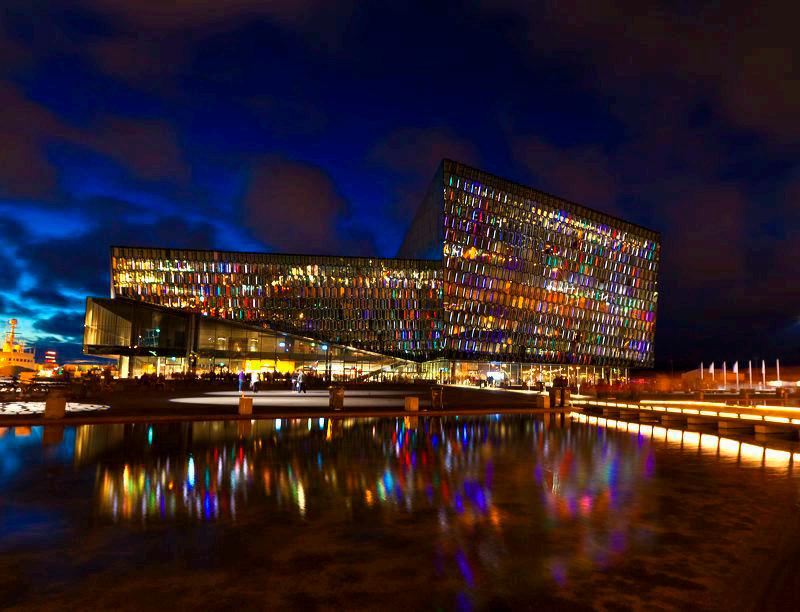

7 THE OLD HARBOUR Though it’s the oldest harbour in its original form, Reykjavík’s Old Harbour is no longer the busiest for freight. Instead, it’s an oft-visited area where you’ll find a community of shops, galleries, electric bike and scooter rentals, and tour operators. You will also find numerous whale watching companies willing to take you out to sea on unforgettable excursions. The area is filled with excellent restaurants (pizza, seafood, burgers, etc.) and cafés. The atmosphere at the old harbour is friendly, the air is fresh and salty, and there are plenty of interesting activities to check out.
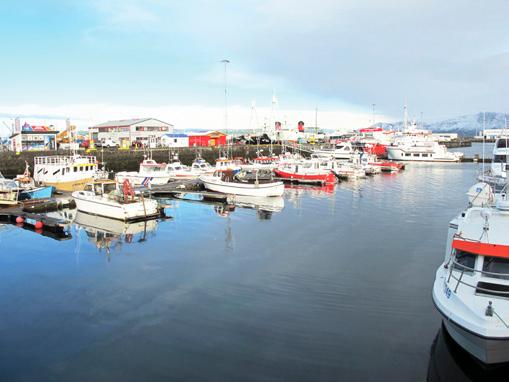
8 THE SUN VOYAGER A beautiful sculpture of a Viking ship located by the ocean on a small peninsula by Sæbraut, close to downtown Reykjavík. The sculpture by Jón Gunnar Árnason symbolises the Viking past of the Icelanders and is an ode to the sun. It serves as a reminder of our history and heritage when the first Viking settlers came sailing to Iceland. The Sun Voyager looks its best when the sun is setting, at whatever time that may be. The unforgettable view of the sculpture with a backdrop of the ocean and Mt. Esja is every photographer’s dream.
9 HOUSE OF PARLIAMENT Founded in 950 AD, Iceland’s Parliament, Alþingi, is the oldest extant parliament in the world! For centuries, the Parliament gathered in the open air (on the aptly named Þingvellir, Parliament Fields), but in recent years, the members of Parliament have met in Reykjavík. The House of Parliament is a modest classical building of hewn Icelandic dolerite, and it gives Austurvöllur square a dignified look. The Parliament garden behind the building is small but lovely in the summertime.

10 LAUGARDALSLAUG Every country has traditions when it comes to leisure. Icelanders’ favourite pastime is going swimming. Laugardalslaug is the city’s largest pool with extensive facilities, located in Laugardalur valley. Its facilities include a 50m outdoor pool, an outdoor children’s pool and a paddling pool, two waterslides, numerous hot tubs, a steam bath, gym, and a mini-golf course. There really is no better place to be on a sunny day or a cold one for that matter. Right outside, you will find a hot dog stand where you can buy traditional Icelandic hot dogs.

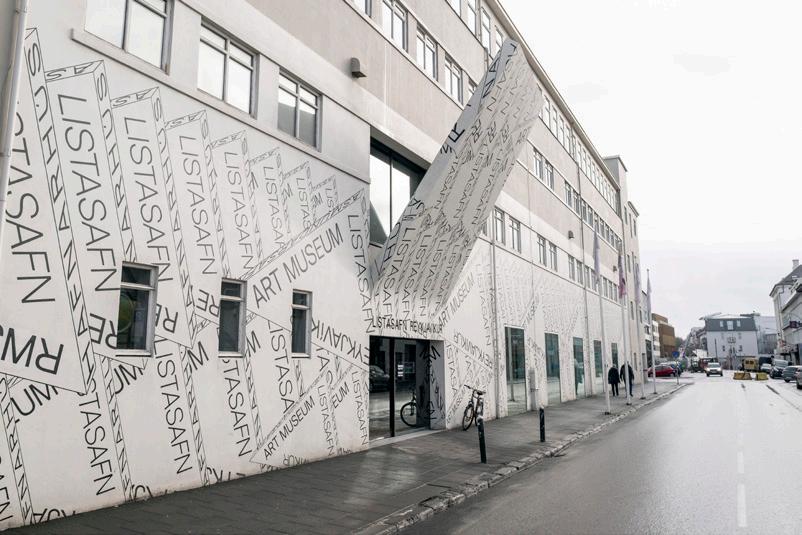
Reykjavík’s history reaches more than a thousand years into the past, and the city has a rich cultural heritage. What better way to learn more about Icelandic culture than visiting the city centre’s museums?
Hafnarhús serves as the museum’s institute of contemporary art, where new developments in art are explored through rotating exhibitions. An exhibition of paintings by well-known pop artist Erró is a permanent feature. Kjarvalsstaðir is devoted to one of Iceland’s most influential painters, Jóhannes Sveinsson Kjarval, and Ásmundarsafn is the former home and workshop of sculptor Ásmundur Sveinsson.

The Museum of Photography’s main objective is to present both historical and contemporary photography in an artistic, social, and cultural context, as well as to nurture public and scholarly interest in photography. The collection’s themes range from family photographs to photos from portrait studios, industrial and advertising photography, press photography, landscape
In 2001, archaeological remains of a settlement-era hall were excavated, which was inhabited from 930-1000. North of the hall, two pieces of a turf wall were found, which were built before 871. These findings are the oldest relics of human habitation found in Reykjavík. An innovative, interactive exhibition gives an impression of what life was like in those times. Objects from the age of settlement found in central Reykjavík and on Viðey island are also on display.

The Reykjavík Art Museum has three locations: Hafnarhús, Kjarvalsstaðir, and Ásmundarsafn.

The nation’s most precious treasures are kept and displayed at the National Museum of Iceland. The museum was established in 1863, and it gives an insight into Iceland’s cultural heritage from the time of the settlement up to modern times. There’s a permanent exhibition of Icelandic history and culture from the settlement era on, as well as temporary exhibitions highlighting specific eras or aspects of Iceland’s cultural heritage.
Check out our centerfold map for the locations of these sights





Whether you visit a thermal pool in Reykjavík, a luxurious spa, or a natural pool in the countryside, swimming in Iceland is a unique experience. Nothing beats relaxing in warm water while breathing in fresh cold air.

Swimming pools are one of the most kid-friendly activities you can find in Iceland, so the short answer is – all of them! To be more specific, the centrally located Sundhöll has a great outdoor area, and so does Vesturbæjarlaug, but Árbæjarlaug is a hidden gem, a perfect stop if you’re going out of town anyway, and pairs well with a visit to the Árbær Open Air Museum.
Locals love going to the pool, and chilling in a hot tub is a good way to connect to Icelanders. Often, Icelanders meet in the pool and use this time to chat and catch up on the latest developments. Good options for hanging out with locals are Vesturbæjarlaug, Seltjarnarneslaug, and Árbæjarlaug pools.
Laugardalslaug is Reykjavík’s biggest pool and the best one for a long swim. It’s an Olympic-size swimming pool, used for recreational swimming,

Vesturbæjarlaug
exercise, and competitions. The big indoor pool is also used for training and competitions. Laugardalslaug also offers plenty of hot tubs, cold tubs, and steam baths for relaxation after a healthy swim, and to top it off, a fitness centre and spa are located next to the pool.
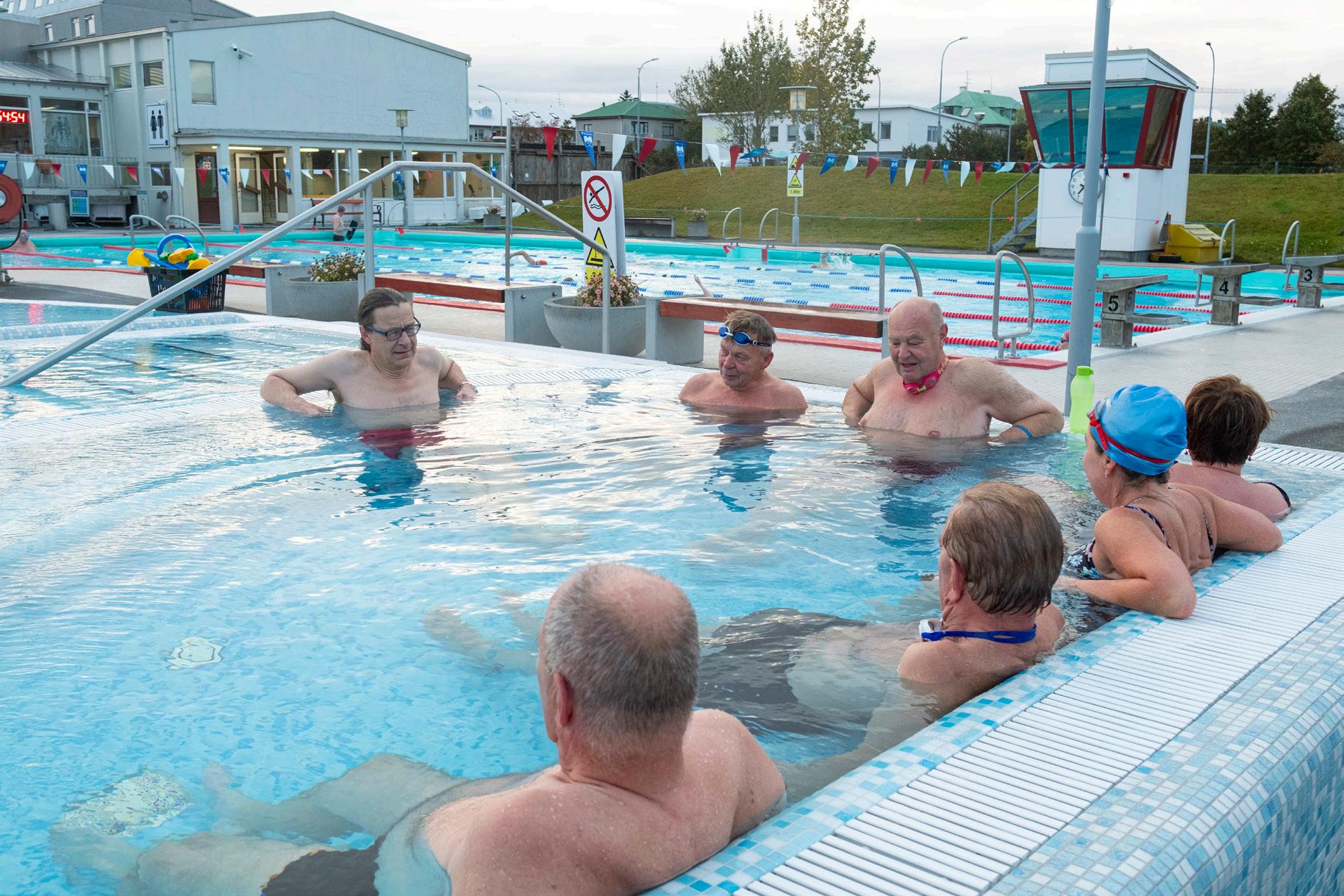
Basically every town in Iceland has its own pool. Almost all of them are beautifully located next to mountains and overlooking fjords and the ocean. If you plan to make a day tour out of your pool visit, head to the Westman Islands and visit Sundhöllin Vestmannaeyjar on Heimaey island. The ferry ride out to the island is an adventure, and there is a great indoor pool, a large outside pool with hot tubs, and cool waterslides.
In need of pampering? You’ve heard of the Blue Lagoon with its milky blue waters and mud masks, but did you know a brand-new spa opened just 10 minutes by car from downtown Reykjavík? Located at the edge of the bay of Kópavogur, the pool offers amazing coastal views. Sky Lagoon boasts a modern approach to traditional Icelandic swimming culture, making it the perfect spot to relax, enjoy a drink, socialise, and soak in the sun.
WINTER OPENING HOURS
More info on www.sundlaugar.is
Árbæjarlaug (Tel. 411 4200)
Mon - Fri: 6:30-22 • Sat - Sun: 9-22
Dalslaug (Tel. 411 5650)
Mon - Fri: 6:30-22 • Sat - Sun: 9-22
Grafarvogslaug (Tel. 510 4600)
Mon - Fri: 6:30-22 • Sat - Sun: 9-22
Laugardalslaug (Tel. 411 5100)
Mon - Thu: 6:30-22 • Fri - Sun: 8-22
Vesturbæjarlaug (Tel. 411 4200)
Mon - Fri: 6:30-22 • Sat - Sun: 9-22
Breiðholtslaug (Tel. 557 5547)
Mon - Fri: 6:30-22 • Sat - Sun: 9-22
Klébergslaug (Tel. 566 6879)
Mon - Thu: 11-22 • Fri: 11-19 • Sat - Sun: 11-18
Sundhöllin (Tel. 411 5350)
Mon - Fri: 6:30-22 • Sat - Sun: 8-22


Yes, Icelandic horses stand, on average, 135-145 cm to their withers. And, yes, that’s well within the parameters of a “pony” (read, anything shorter than 147 cm). But they’re horses, plain and simple, because, well, Icelanders say so. Squat, muscular, and built to withstand the elements, the Icelandic horse is the embodiment of how Iceland likes to view itself: small but mighty.
The Icelandic horse has earned a reputation at home and abroad for being easy-going and friendly. Like well-trained dogs. Which is funny considering how impolite some Icelanders can be – the language doesn’t even have a word for “please.”

Their temperaments can be attiuted to nature, since their genetics are so protected (more on that later), or nurture, since Icelanders tend to treat their beloved horses like members of the family. So their
relaxed attitudes may just be a result of the horses’ relaxed lifestyles.
The Icelandic horse is also unique for being the only breed in the world that can perform five gaits (ways of walking). Other breeds can only perform three or four.
The three common horse gaits are walk, trot, and canter, but the Icelandic horse can also pace and tölt. Tölt is a four-beat lateral gait that’s entirely unique to the Icelandic horse. It’s a sped up version of walking, but much more impressive as the horses lift their front legs up high, with only one hoof touching the ground at any time.
Tölt is a very useful gait for Iceland’s often uneven ground, providing a steady ride. It was presumably the gentlest on the riders’ backside back when horses were the main mode of transportation.
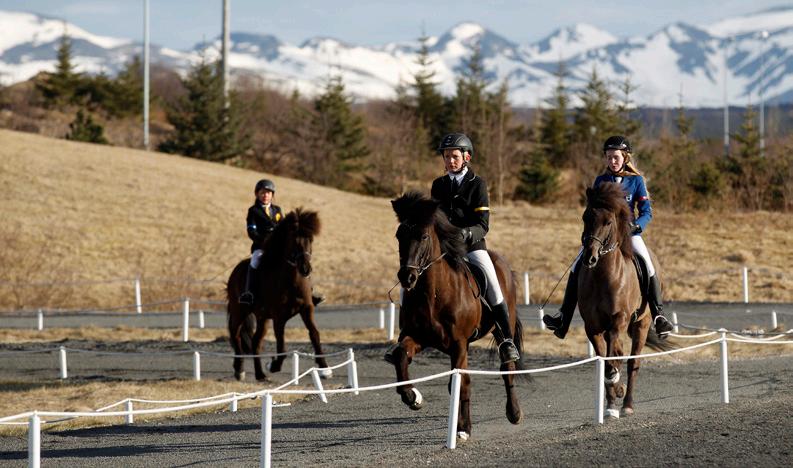
That said, not all Icelandic horses can tölt, and those that can are usually trained to do it properly. So when you take a riding tour, be sure to ask for a horse that can tölt so you get to experience a truly unique trait of the Icelandic horse.
Following an unsatisfactory attempt to crossbreed Icelandic and oriental breeds, Iceland’s Viking parliament moved to prevent degradation of their horses’ genes by forbidding horse imports to Iceland as far back as the year 982.This is the kind of thing you can do when you live on an island.

That means Iceland’s horses have been purebred for over 1000 years. As a result, there are also remarkably few livestock diseases in the country –and authorities keep it that way by even prohibiting riders bringing their own saddles or riding boots with them to Iceland.
The Icelandic horse’s forefathers first arrived with Viking settlers from the British Isles, between 860 and 935 AD. While they’re known ancestors of Shetland, Highland and Connemara ponies, they also have some genetic similarities to the Mongolian horse, which arrived in Scandinavia through Russia.
No, Icelandic horses don’t spend their days reading Thomas Wolfe, rather those same restrictions that prevent the import of other breeds from abroad also apply to any Icelandic horse that leaves the island. They can’t return to Iceland.

As a result, Icelanders participating in international riding competitions never take their best horse along, since they will likely sell it before heading home. The crème de la crème of Icelandic horses are kept in Iceland to compete domestically or breed.
Icelandic horses feature heavily throughout the country’s history books. In the Book of Settlement of Iceland, chieftain Sela-Þórir established his settlement at the place where his mare Skálm decided to rest. Meanwhile in Hrafnkel’s Saga, Njál’s Saga, Grettir’s Saga, and others, horses play important roles in fights, as status symbols, and as plot devices. For example, when the epic hero Gunnar á Hlíðarenda falls to the ground when his horse trips he looks at his beautiful country and decides to stay rather than be outlawed, which ultimately leads to his death.
In Norse mythology, the most famous equine is, of course, Óðinn’s eight-legged steed Sleipnir. Icelandic horses have the standard four legs, but it can look like eight when they’re zipping along at flying pace.
Possibly the best thing about the Icelandic horse from a visitor’s perspective is that you can ride one just about any time. There are riding centres all over the country offering riding tours so visitors can experience Iceland’s uniquely beautiful nature from the back of Iceland’s uniquely wonderful horses.
Thanks to their aforementioned temperament and size, the Icelandic horse is ideal for inexperienced riders taking a shorter tour, and their smooth gaits make them comfortable for more experienced riders looking to spend a whole day in the saddle.




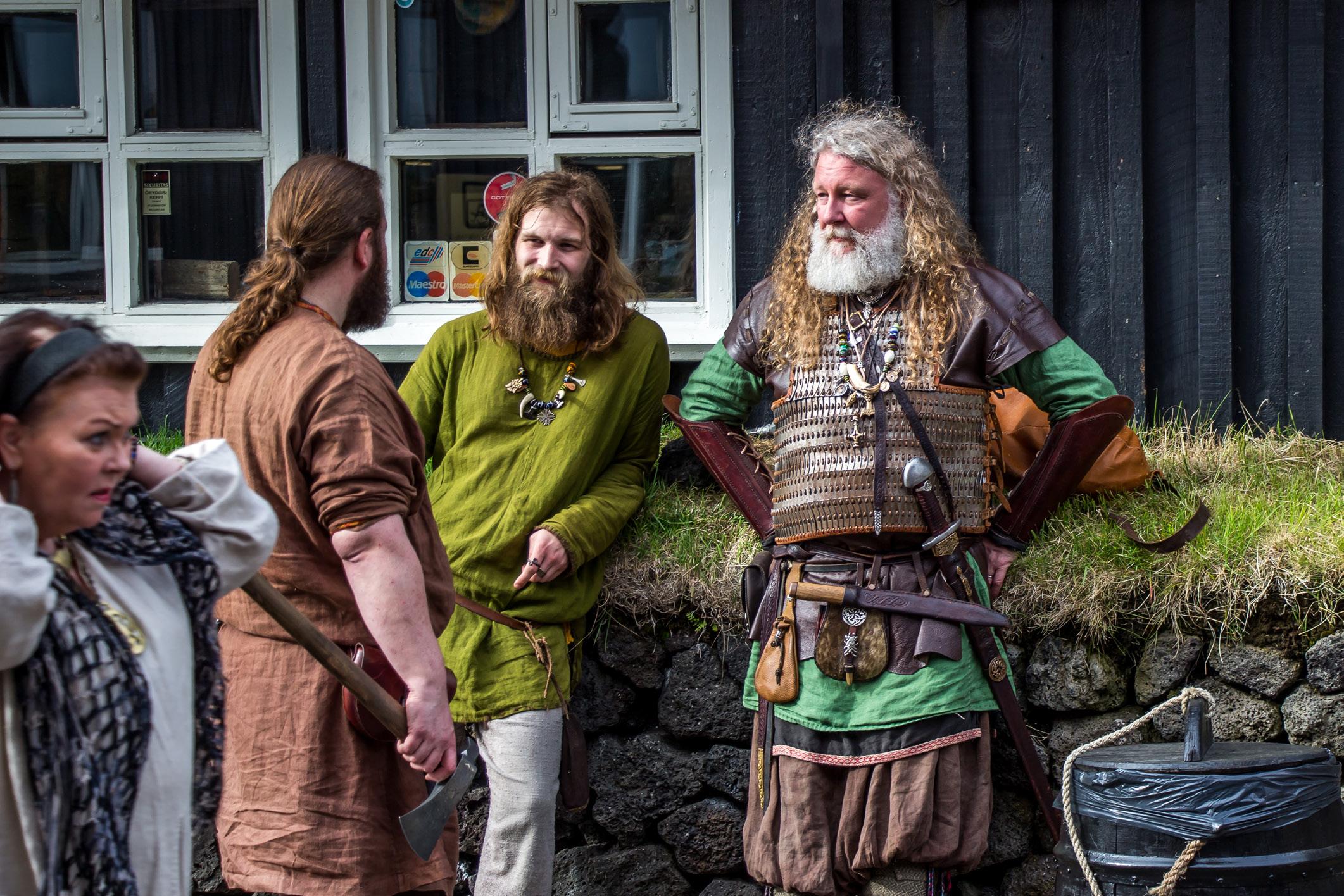
The Sagas of the Icelanders, written in the 12th and 13th century and telling the stories of the early settlers of Iceland from the 10th century, are an amazing treasure trove of historical knowledge about the early years of settlement in Iceland. Better yet, they’re also impressive examples of literary excellence that still hold their own when it comes to enthralling storytelling.
The sagas might be several centuries old and originate in a society with completely different values to our own, but the stories they tell are universal and timeless. Just like modern literature, they deal with love, loss, honour, adventure and everything in between. If you want to start reading the sagas but you’re just not sure where to begin, here’s our guide to reading the them.

Laxdæla is the thrilling story of bonds of friendship torn asunder for the love of a woman. The love triangle of the formerly inseparable friends Kjartan and Bolli, and the beautiful and clever Guðrún has far-reaching consequences in this heartwrenching story of honour, destiny, love and betrayal. Will Guðrún follow her heart or her pride? Are they all mere pawns of fate? Will her efforts to overturn destiny prove fruitful… or fatal?
Njála, as this saga is affectionately known, is the most revered of all the sagas in Iceland and its main character, Gunnar of Hlíðarendi, is probably the most idealised hero in all Icelandic literature. Familial obligations, honour and, most importantly, love, throw him, his best friend Njáll and everyone they hold dear into a whirlwind of theft, lawsuits, murder and punishments. His fate is marked from the moment he lays eyes on the woman he loves, and not even Njáll’s sage advice can save him. As an added bonus, Gunnar’s wife, Hallgerður, happens to be arguably the best female character in all medieval literature.
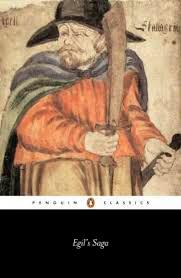
Völsunga saga has it all, dragons, sleeping beauties, magical swords, revenge and a dash of incest. It’s basically Game of Thrones for the 13th century! It’s the story of the Völsungs, a dynasty of kings and heroes. The best-known


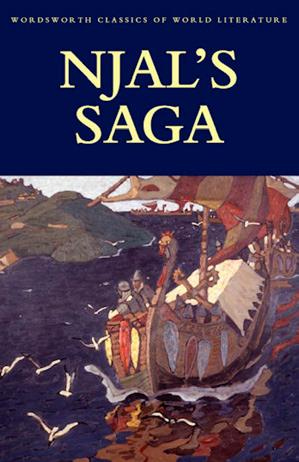
Egil ’s saga tells the story of the fascinating antihero Egill Skallagrímsson and his adventurous travels all over the north of Europe. A fierce fighter and clever poet with severe anger management issues, Egill’s saga weaves together the stories of the first time he killed a man (at the tender age of 7), his impending beheading thwarted by some seriously great poetry, and a drunken feast turned massacre (where our hero at one point cuts off a man’s head before vomiting down his neck), to name a few.
If you aren’t completely sold yet, there’s also the story of Egill in his old age, plotting mischief involving his treasure. He wanted to throw his silver in the air at a parliament session, and sit back and watch people fighting over it. When those plans were thwarted, he decided to bury his treasure, creating the legend of Egill’s silver.
All the sagas are available in English in
Our ski resorts, Bláfjöll and Skálafell, are only 30 min drive from Reykjavík.

Open Weekdays: 14-21
Weekends: 10-17



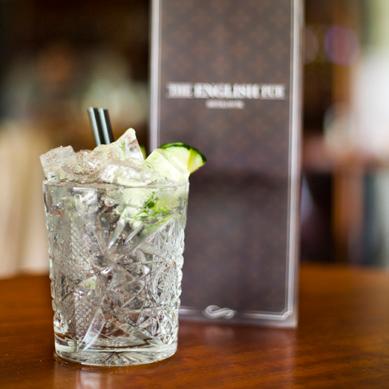
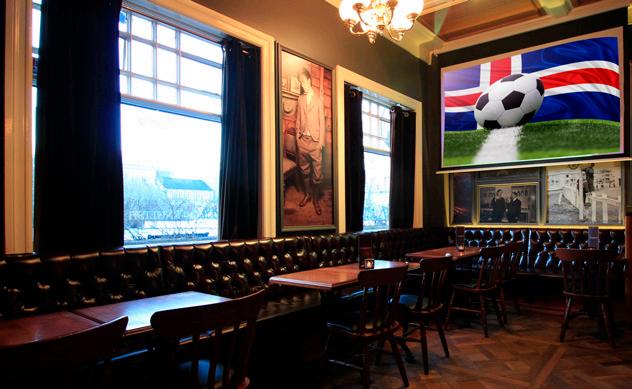
Skreið
Laugavegur 4
Skreið is the latest star in the Reykjavík restaurant scene’s night sky, a wine bar and small-plates restaurant positively oozing that oldschool 101 Reykjavík charm. Rest assured that on a night out, the wine will be delicious, the food delectable, the vibe cool and relaxed, and the place and the people stylish. What more could you ask for?
Metta
Barónstígur 11A
Metta is an Icelandic lifestyle and sportswear brand whose aim is to improve people’s everyday life with comfortable quality clothing. It’s an admirable goal so be sure to get some brand new workout wear in their new store on Barónsstígur. Working out feels a million times better when you look a million bucks!

Fjällräven
Laugavegur 67
It’s winter in Iceland and you need to stay warm. Fine, I’ll admit it, you also need plenty of good outerwear in summer as well. But that’s no reason to lower your standards, outfitwise! Classic nordic outerwear brand Fjällräven has returned to the city centre, supplying the people of Reykjavík with all the durable but stylish, earthtone yet colourful outerwear, backpacks and hiking gear they need to stay warm and Scandi-stylish at the same time.
PK2 Cafeteria & restaurant
Laugavegur 84
When it’s cold outside, we all like to close our eyes and dream about being in Cuba for a moment. In Reykjavík, that dream has just become a little bit closer to reality with the opening of PK2 Cuban restaurant, offering both Cuban dishes along with some rice and beans, as well as parties and events that inject a little bit of Latin sunshine into the Reykjavík spring!

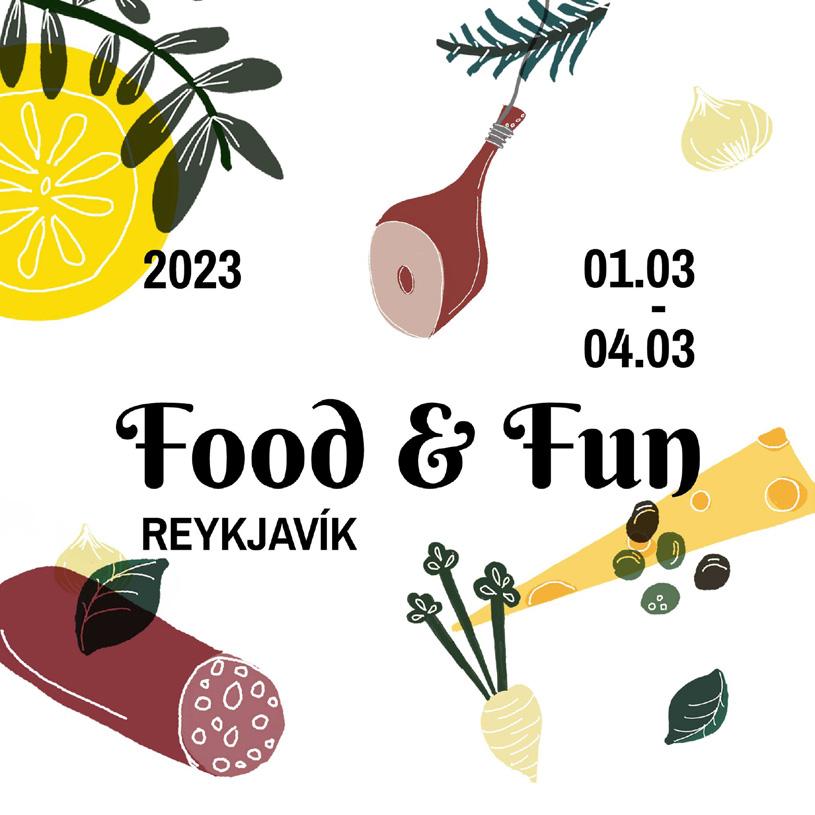
MARCH 1 – MARCH 4
One of the most exciting culinary events, Food and Fun, hasn’t been held in Iceland for three years. Food lovers are rejoicing at its return. Chefs from all over the world come to Reykjavík to work with local restaurants to create exciting menus. The food is centred on Icelandic ingredients and highlights the limited but delicious agriculture and seafood that can be grown and found on and around the island. During the festival, famous chefs are invited to rate the recipes and food that have been designed for the festival. From all the finalists, three are chosen to compete for the Food and Fun Chef of the Year Award.
MARCH 3
The prolific American psych-rock Brian Jonestown Massacre returns to Iceland on March 3 to perform at Gamla Bíó. The music revolves around the peculiar mind and personality of the band leader – and only consistent member since its formation in 1990 – Anton Newcombe. They have released 20 albums since 1995, and they show no signs of slowing. In February 2023, they unveiled their latest album, The Future is Your Past, which has received positive reviews.
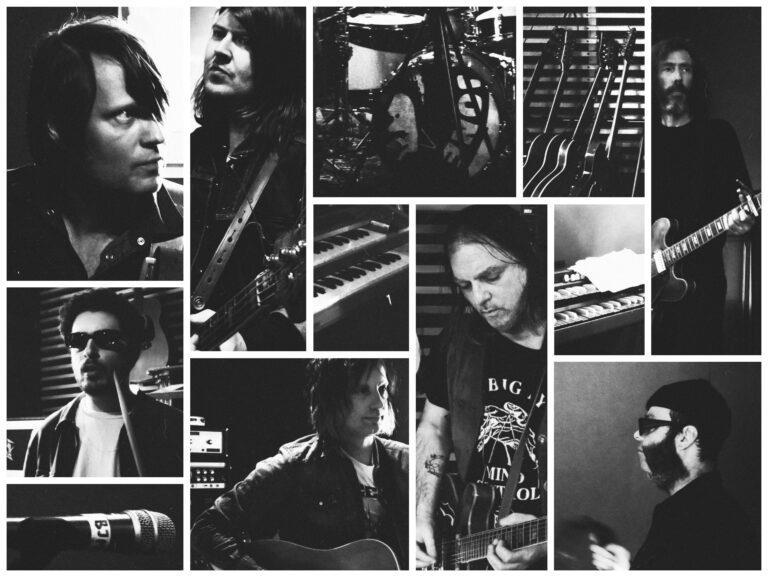

MARCH 4 - MARCH 26
Harpa will host the beloved opera Madame Butterfly during the month of March. Although it tells the story of Cio Cio San, a young Japanese geisha who falls in love with a US Navy officer stationed in Japan, the opera was written by Italian composer Puccini around the turn of the 20th century. It tells a beautiful and heartbreaking story about love, loss, and longing for a better life. The production at Harpa boasts two of the industry’s top talents: stage director Michiel Dijkema and award-winning conductor Levente Török. Performances take place every Saturday in March at 19:30.
Originally from the Westman Islands, beloved Icelandic singer-songwriter Júníus Meyvant intertwines an eclectic sound into his soulful folk music. He released his first single in 2014, and since then has produced three full-length records and several Eps. On March 10, Júníus will be celebrating the release of his album Guru, which came out in October 2022. The concert, which promises to be his most ambitious yet, will span his entire career, from the early days through Guru. Join him and the band (expect guitars, synths, and horns!) at Harpa to celebrate.

We Got This is the brand new show from BAFTA and Perrier award-winning comedian Dylan Moran. It promises to be a joyously furious romp through the frustrations and folly of modern-day life. Moran is an Irish comedian - as well as author, actor, writer, artist and poet - who made a name for himself with his work in Black Books, a British sitcom that he wrote and acted in. He is also known for working alongside British actor Simon Pegg in films like Run Fatboy Run and Shawn of the Dead. We Got This is Moran’s brilliant sense of humour that targets the silliness of contemporary culture, and it’s bound to crack you up.

Reykjavík‘s most popular battle of the bands, MúsíkTilraunir – translated as Iceland Music Experiments – has been introducing young Icelandic talent to the world since 1982. The 5-day competition consists of four qualifier nights where around 40 bands compete with the goal of advancing to the final round, in which the top three bands receive impressive prizes, such as time in a recording studio. Some of the most notable names in recent Icelandic music like Vök, Samaris, Of Monsters and Men, and Mammút participated in the Music Experiments. The event will take place in Harpa Concert Hall. Qualifying nights will take place March 25-28 starting at 19:30. The final night will be on April 1 at 17:00. For more information, visit www.musiktilraunir.is.


The world of trolls, elves, ghosts and other creatures opens up in the exhibition Ghost at the window. Reykjavík Art Museum continues to present new works by contemporary artist in Ásmundarsafn, where they meet in dialogue with Ásmund Sveinsson’s visual world and his unique house in Laugardalur. Now the focus is on legends, fairy tales and imagination.
Sigga Björg is known for her imaginative drawings, installations, videos and books. She has created a unique visual world where fantasy, humor and horror go hand in hand. In her works, she threads the emotional life in all its chaos and creates moods that are almost impossible to put into words, but with her characteristic style she manages to express the most incredible nuances. At this exhibition, she works, among other things, on a new series based on Icelandic folk tales. In Sigga Björg´s drawings she mixes
showrooms and on paper.

There is perhaps nothing more magical than witnessing the beauty of a northern lights display. However, those unpredictable, ever dancing lights don’t always show up on cue – and fade away during the summer months. So, it is with great joy that we welcome Aurora Reykjavík – The Northern Lights Centre, where the northern lights are always on display.
Aurora Reykjavík’s pull and ace up its sleeve is its fantastic 4k timelapse film of the Aurora Borealis. Aurora Reykjavík’s latest additions are virtual reality goggles featuring the world’s first 360° movie of aurora displays entirely shot in Iceland. If you can’t catch the northern lights yourself, this utterly realistic experience is definitely the next best option to witness the beauty of this truly amazing phenomenon.Capturing the northern lights with your own camera can be challenging, but
settings at the Northern Lights Photo Simulator. In the exhibition, you will find an entertaining selfie booth – have fun looking all fabulous under the northern lights!
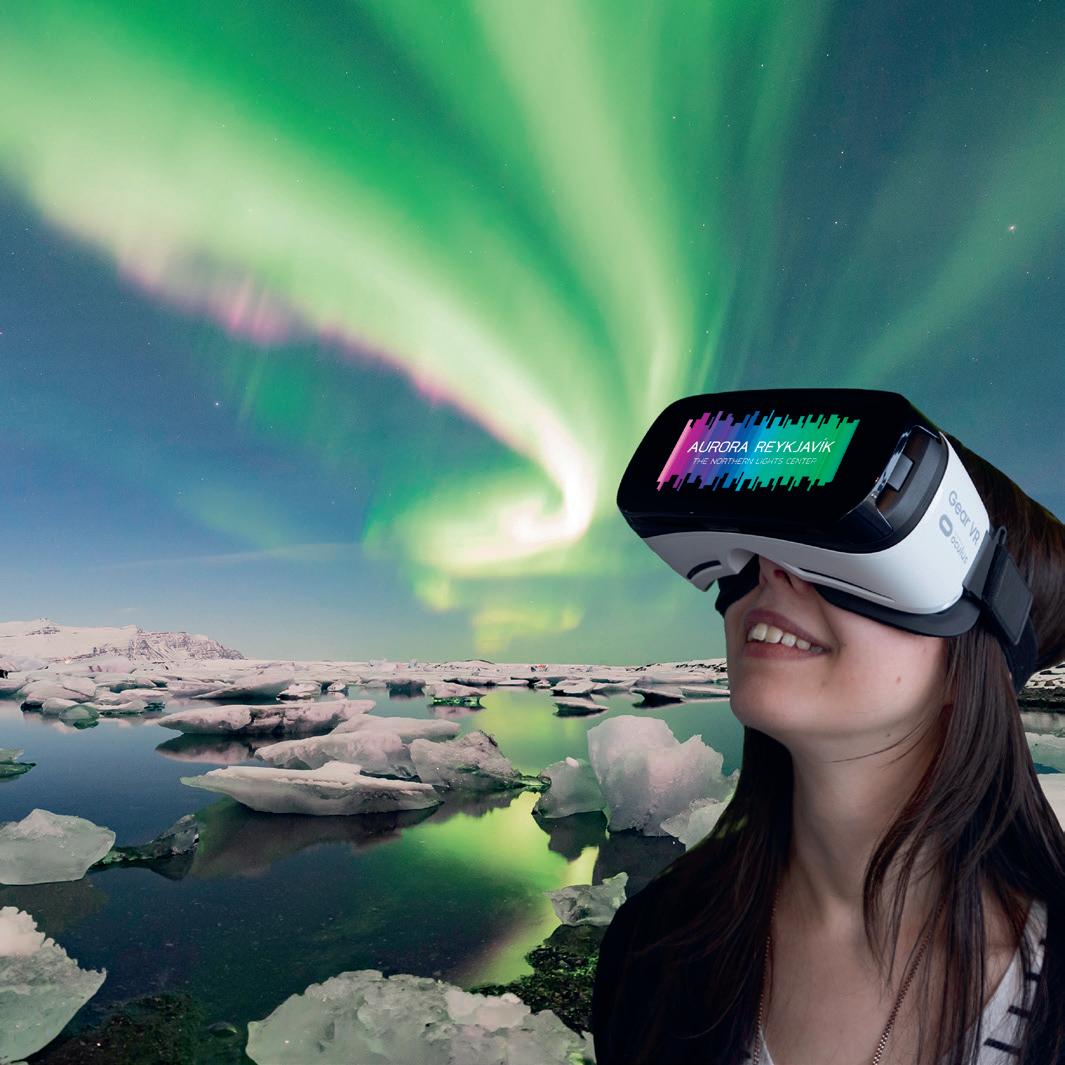
For more information, see www.aurorareykjavik.is.
Rúrí:
Glassrain
Glassrain is an installation from 1984, one of the first of many works that address the theme of time and menace by Icelandic artist Rúrí. Born in 1951, Rúrí has become one of the most distinguished artists in Northern Europe. A pioneer in performance art in Scandinavia, she has never limited herself to just one discipline but has presented her work through a variety of mediums. But a consistent theme in nearly all her work is philosophical questions about identity, time, relativity and the environment. Glassrain comprises 500 razor-sharp fragments of glass of different

• Grilled lamb prime
• Icelandic cod

• Best monkfish in town
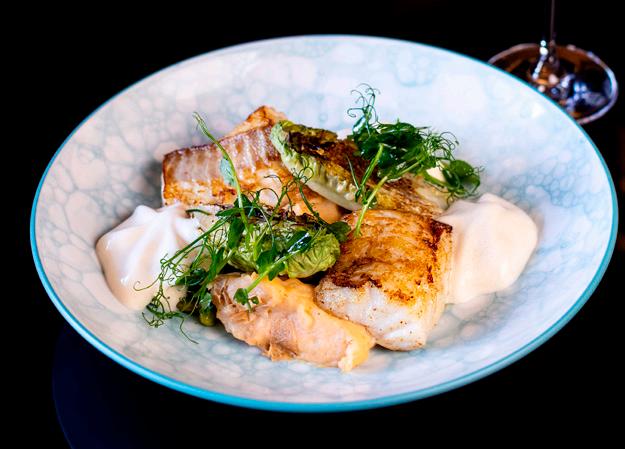
• 37 Wines by the glass

BARTENDERS´ CHOICE AWARDS



lengths that hang menacingly from the ceiling. The exhibition opens on March 4 at the National Gallery.
At the beginning of 2022, the art collection of Ingibjörg Guðmundsdóttir and her husband, entrepreneur Þorvaldur Guðmundsson, owner of Síld og fiskur, was placed in the permanent keeping of the National Gallery of Iceland. The collection, which comprises about 1400 works by many of Iceland‘s leading artists, will be catalogued as part of the National Gallery collection, and the works of art will be digitised on a publicly-accessible database. A workshop and live exhibition will be installed in Gallery 3 on the upper floor of the National Gallery, where visitors can observe the work of the cataloguing team. At the same time, a selection of works from the collection will be displayed in Gallery 4, with a focus on animals, large and small, in Icelandic nature.
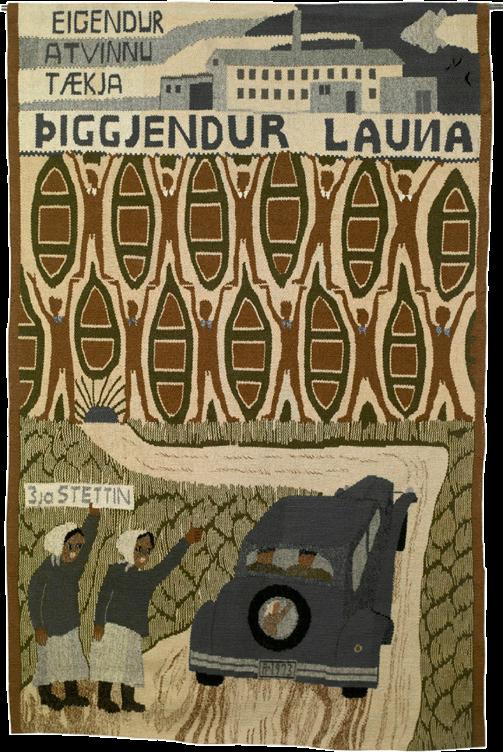
The Corridor is an artist-run exhibition space founded by artist Helgi Þorgils Friðjónsson in
1979, and it is probably Iceland’s longest-running privately-operated gallery. The Corridor has always been housed in Helgi Þorgils‘ home, and his principal objective was to present the work of contemporary artists from other countries in Iceland. With the first exhibition premiering in 1980, 2020 marked the 40th anniversary of the foundation of the Corridor. However, the pandemic affected the exhibition, and only now were all the works collected for this celebratory exhibition in the National Gallery of Iceland.
Hildur Hákonardóttir: Read Thread
Opening on January 14 is an exhibition highlighting the works of the diverse artist Hildur Hákonardóttir, who was an important figure in Icelandic culture in the 1960s and 70s. Her work reflects the ongoing social movements both in Iceland and in New York, where she lived with her then-husband. Race, gender, equality and more issues have come to define Hildur‘s illustrious career. Although she worked through many mediums, she is perhaps most famous for her preferred


method of weaving. The exhibition contains many of Hildur’s bestknown works, which have become important landmarks in Icelandic cultural history and influenced societal changes. There are also installations, photographs, videos and computerised drawings from a career that spans over 50 years.
The works of art featured in the exhibition are some of the key paintings of Kjarval’s career, as well as some that are rarely seen by the public. The exhibition features paintings and drawings from Kjarval’s entire career, illuminating the diversity and depth of his

life’s work. Nature and Iceland’s landscapes were his main subject, but he also made several portraits and what he called “fantasies”, where the artist’s subjective interpretation leads the way and dreamlike landscapes filled with fantastical creatures blur the lines between reality and dreams. The works are from the Reykjavík Art Museum’s collection, as in 1968, Kjarval donated a large part of his work and personal items to the city.

The National Museum of Iceland’s permanent exhibition, Making of a Nation – Heritage and History in Iceland, is intended to provide insight into the history of the Icelandic nation from the settlement to the present day. The aim is to cast light on the Icelanders’ past by placing the cultural heritage preserved by the National Museum in a historical context, guided by the question: what makes a nation? The exhibition includes about 2,000 objects dating from the Settlement Age to the present, as well as about 1,000 photographs from the 20th century. The exhibition is conceived as a journey through time: it begins with the ship in which mediaeval settlers crossed the ocean to their new home, and it ends in a modern airport, the Icelanders’ gateway to the world.
At Hofstaðir, in the district of Lake Mývatn, North Iceland, extensive archaeological excavations have been carried out over the past three decades. The site includes remains from the Viking Age to the 20th century. A huge Viking-Age structure was excavated: a hall or longhouse where people gathered on
social occasions, with other smaller buildings around it. The hall is one of the largest structures ever excavated in Iceland. In addition, a churchyard was excavated at Hofstaðir, which is one of the oldest churchyards unearthed in Iceland. Whole families were laid to rest in the cemetery, and their bones yield evidence about their lives. The face of one of the women buried at Hofstaðir has been reconstructed using DNA technology, and a drawing of her is included in the exhibition.

In the 1970s, only a few of Iceland’s turf houses were still inhabited. Having served as the primary form of housing for more than a thousand years, the Icelandic turf farm had now played out its role, and with no comprehensive preservation plan in sight, the remaining farms faced extinction.
An Icelandic architecture student in Copenhagen set out and documented a representative selection of the Icelandic turf farms before it was too late. Working closely with the National Museum of Iceland and other parties to identify important subjects for their surveys, summer after summer, students and teachers travelled around the country to measure and draw the unique Icelandic turf architecture as well as other buildings in danger of disappearing.
Offering a glimpse into life as a “measurer” in 1970s Iceland, the exhibition aims to give an insight into the expeditions and the invaluable source material that was derived from them. While Iceland’s neglected 19th century timber houses were measured as an integral part of their preservation and later restoration, most of the turf houses perished or fell into ruin. In many cases, the
architecture schools’ documentation is the only existing source in relation to these buildings.
Although this exhibition is not necessarily new, it deserves more attention. My Favourite Things, which, at first glance, looks just like a list of things people left behind when they died. But these probates tell us how Icelanders lived in the 18th and 19th centuries, what they owned, and how their lives differed from people in different classes. The exhibition juxtaposes information gathered from probate inventorieswhat people had in their possession when they passed away - preserved at the National Archives and the artefact collections of the National Museum in order to dive into the material world of Icelanders from earlier centuries. What did people possess? How much worth was their belongings? How do the possessions of people of the past reflect in the preserved cultural heritage of the nation?
Rúnar Gunnarsson:
Opening on March 11 at The Photo Gallery in the National Museum is an exhibition of photographs by Rúnar Gunnarsson. Born in 1944, Rúnar grew up in Reykjavík during its rapid transformation into a modern city. His photographs
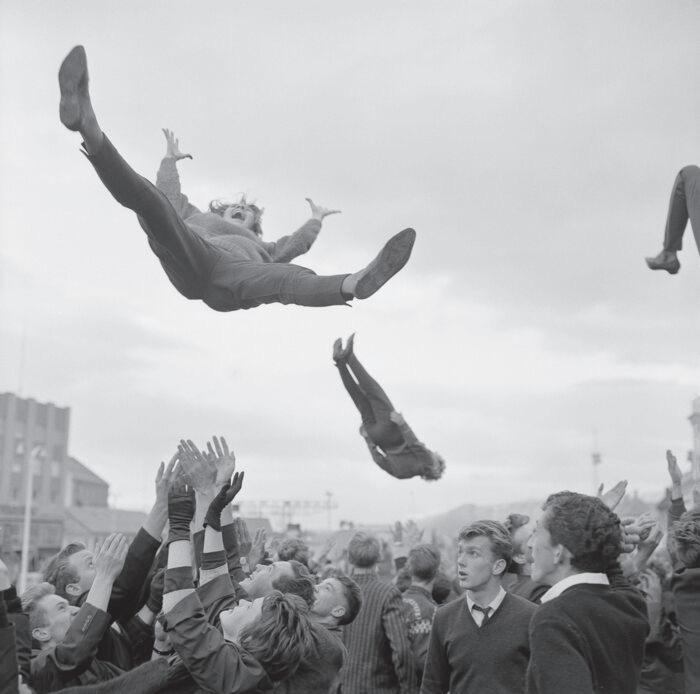
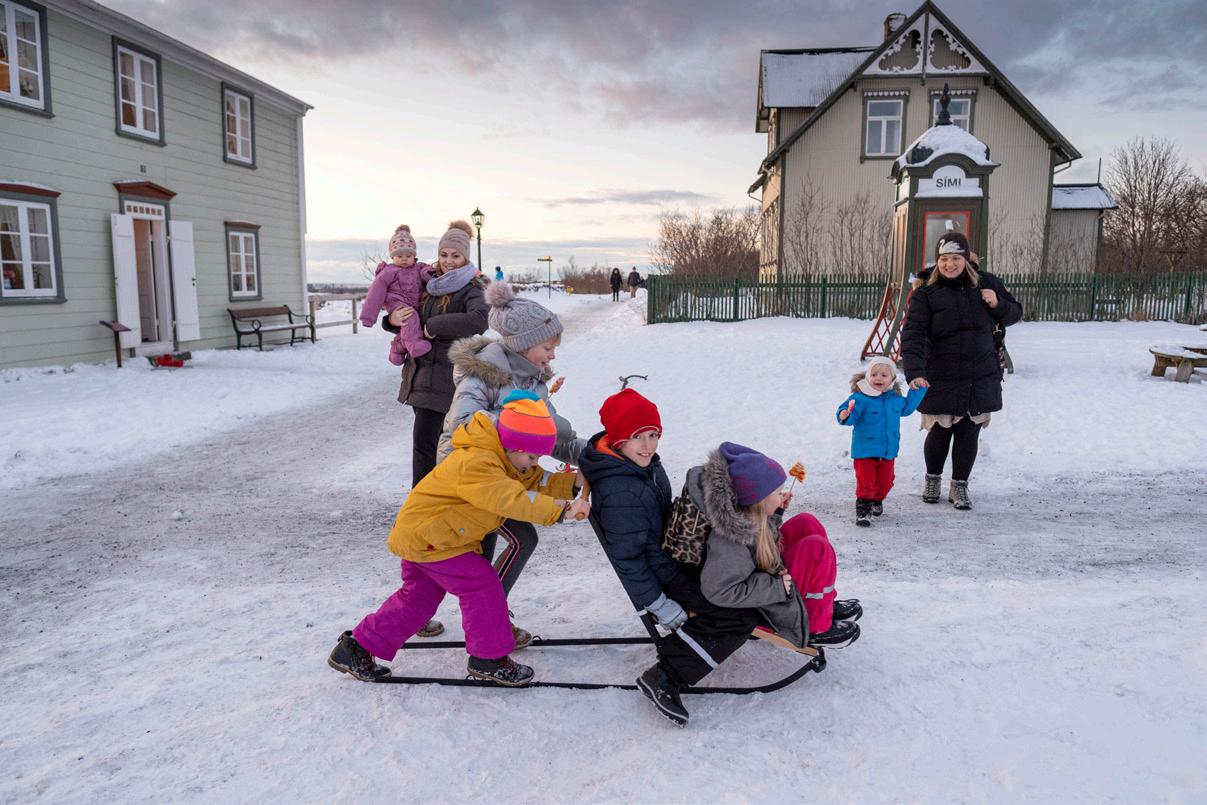
capture the city and its complex human life. His collection contains over 100,000 photographs, which have been the subject of several exhibitions and books. Rúnar is still active, with a camera up in the air, capturing glimpses of our time.
Adjacent to An Eternity in a Moment is another photography exhibition at the National Museum titled Light and Play. It consists of six photo albums by Ragnheiður Bjarnadóttir. This personal collection depicts an individual’s journey from childhood to adulthood and sheds light on the multi-layered meaning of photography.
Árbær was an established farm well into the 20th century, and the museum opened there in 1957. Árbær is now an open-air museum with more than 20 buildings which form a town square, a village and a farm. Most of the buildings have been relocated from central
Reykjavik.Árbær Open Air Museum tries to give a sense of the architecture and way of life and lifestyles of the past in Reykjavík and during summer visitors can see domestic animals. There are many exhibitions and events held at the Museum, which highlight specific periods in Reykjavik’s history. These include craft days, vintage car displays, Christmas exhibitions and much more. There is something for everyone at Árbær Open Air Museum.
Karólína the Weaver
Karólína Guðmundsdóttir (1897-1981) learned weaving in Copenhagen, and for several decades she ran a weaving atelier on Ásvallagata in Reykjavík. She wove upholstery and curtain fabrics for public bodies, businesses and homes, where the colours and textures harmonised with their surroundings. Her embroidery fabrics were used in school pupils‘ needlework projects for many years, and embroidered wall-hangings and cushions from Karólína‘s atelier adorned many Icelandic homes. She was thus an influence upon Icelanders‘ home furnishings and taste. In addition,





her work led people to recognise the fine qualities of Icelandic wool and changed attitudes to crafts and needlework.
The exhibition aims to show the huge and rapid changes that took place in consumption patterns in Reykjavík during the 20th century –to explore the factors that affected consumption, and how technical advances, government actions, wars, and events in Iceland and abroad influenced the daily life of the people of Reykjavík.
This is a museum in the heart of Reykjavík that houses the work of Iceland’s first sculptor Einar Jónsson. The museum contains close to 300 artworks spanning a 60-year career: carvings from the artist’s youth, sculpture, paintings and drawings. A beautiful tree-clad garden adorned with 26 bronze casts of the artist’s works is located behind the museum. The task of the museum is to collect, preserve and display the work of Einar as well as to conduct research on his life and art.
An open excavation where Viking ruins meet multimedia technology. Just below ground in downtown Reykjavík, this open excavation uncovers the city’s Viking Age history. Discovered during building work in 2001, these archaeological remains turned out to be the earliest evidence of human settlement in the city, with some dating to before AD 872. Careful excavation revealed a 10th-century hall or longhouse, which is now preserved in its original location as the focal point of the exhibition. Interactive technology immerses you in the world of the Reykjavík farm at the time of the first settlers, including information on how Viking Age buildings were constructed and what life was like in the hall. The Settlement Exhibition is part of Reykjavík City Museum.
...The Story Continues
Family-friendly and informative exhibition about the development of Reykjavík, from farm to city. This new display is a direct continuation of The Settlement Exhibition, representing Reykjavík’s history from settlement to the present day. Visitors get an insight
into the complex history and culture of Reykjavík through the development of house construction and planning with a stop at the oldest house in the city centre, Aðalstræti 10.
The admission is valid to both Aðalstræti 10 and The Settlement Exhibition in Aðalstræti 16.
How did I get to the bomb shelter is a multidisciplinary group exhibition featuring seven contemporary Ukrainian artists curated by Yulia Sapiha and produced by The Nordic House in Reykjavik. In the exhibition, artists explore themes related to their personal experience of the war (the Russian invasion of Ukraine), their longing for a peaceful life, their paths towards survival and their hope for the future. The exhibition opens on February 4 in the Hvelfing exhibition space in the Nordic House and will be on display until May 2023.
Jón Helgi Pálmason: As the Image

Memories are complex, and there are many elements that come into play when considering them. But they still shape who we are. Photographs can serve as memories, too. In this exhibition, Jón Helgi combines images from the past with his own personal photographs offering visitors an insight into how he visualises his memories. Originally from Hafnarfjörður, Jón Helgi now lives in The Hague, Holland. He returns to Iceland to give a glimpse into his memories as he sees them
when he closes his eyes - as fading images. Catch this exhibition at the Reykjavík Museum of Photography before it closes in April 2023.
English photographer Christopher Taylor has been visiting Iceland regularly since 1983, when he married an Icelandic woman, Álfheiður. During that time, he amassed a huge collection of photographs showing Icelandic life from a new perspective. The new exhibition, Proximity, opening on January 14 at the Reykjavík Photography Museum, consists of three photo series that span a 25-year period and together shed a different light on the concept of proximity in the Icelandic context. Taylor explores proximity with portraits of friends and family in Iceland, photographs of people-less spaces inside, and stones in the countryside.

Celebration of the pop art Icelandic icon Erró continues this month with an exhibition showcasing his collages. Collage has formed the basis of Erró’s artworks for over sixty years, beginning early on with his Meca-Make-Up series in 1959-60, and resulting in more than
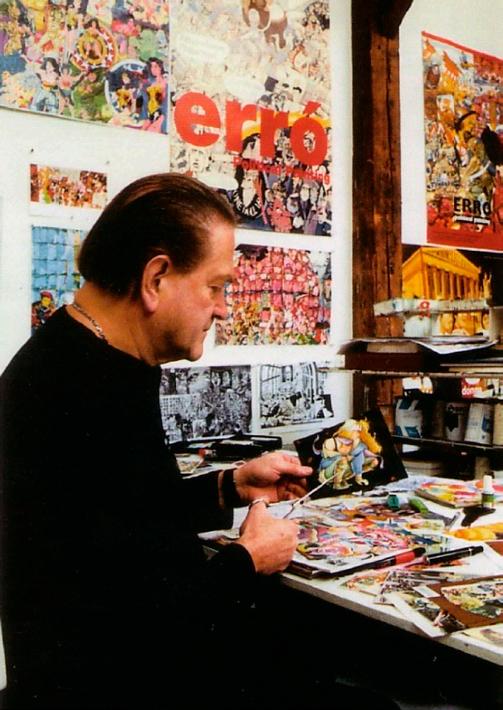
30,000 collages today. Through collecting, cutting, pasting and then painting, Erró has freely mixed and quoted visual material, transforming it into dynamic, striking and jarring visual collisions. Throughout the exhibition, it is possible to trace Erró’s commitment to collage as a form of art in its own right, as a step to creating other artworks, and as a means to continue to narrate unexpected stories. The exhibition opens at the end of the month, January 28, and will be on display at Hafnarhús.
Reykjavík artist Logi Leó
Gunnarsson will present his work this month at Hafnarhús as the 47th instalment of the D Gallery exhibition series. This series began in 2007 and invites emerging artists who are contributing to the development of the local contemporary art scene to hold their first solo exhibition in a public museum. Logi Leó works with sound, sculpture and video in unexpected compositions and installations that often take over the exhibition space. His works are occasionally interactive. By activating everyday materials in combination with music, recordings and sound equipment, he enables the audience to look at and listen to familiar things in a new way.
This year, in 2023, the Reykjavík Art Museum celebrates its 50th anniversary and it is an occasion to look at the treasures that have been collected over this time. Of the approximately 17,000 registered works, sketches and other collection items, there are nearly one thousand by international artists. This exhibition is divided into an introductory section where interesting international works give insight into various eras, works in the collection that have resulted through connections with Erró and his generous gifts to the museum in recent decades, and a special donation of selected works by Flúxus artists from a sister institution in Norway. There is enough to choose from and it is safe to say that this will be a curious display. Artists in the exhibition include Barbara Westman, Dale Chiluly, Ian Hamilton Finley, Roni Horn, Patrick Huse, Karin Sander, Bernd Koberling, Lawrence Weiner, Carolee Schneemann, Jean Jacques Lebel, Alicja Kwade, Yoko Ono and Kazumi Nakamura.

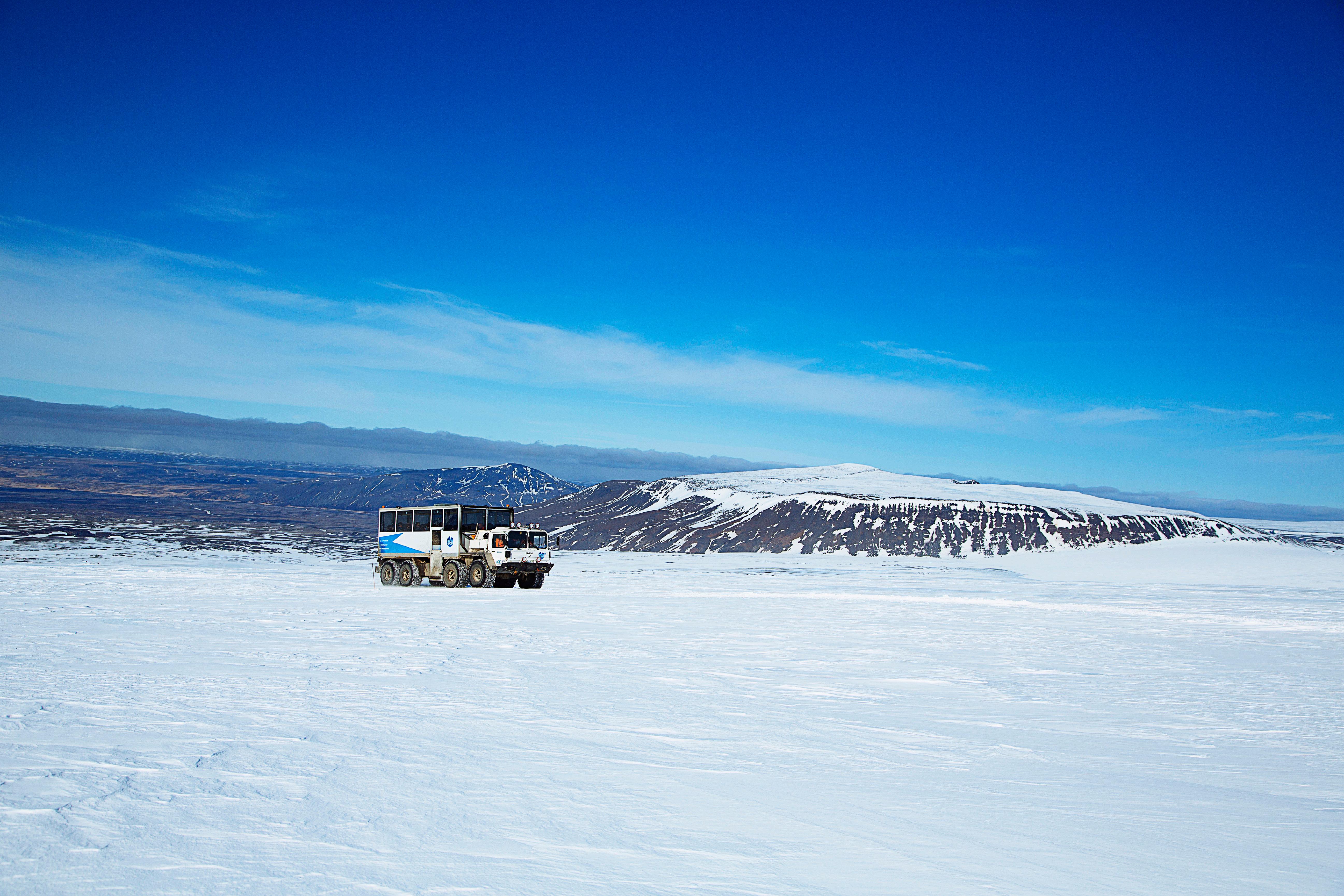


Fish • Lamb • Whale • Icelandic cuisine with a twist Icelandic music and nightlife

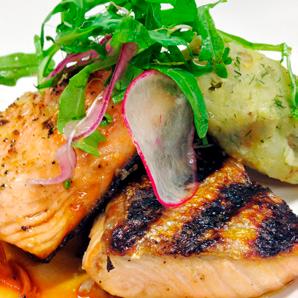



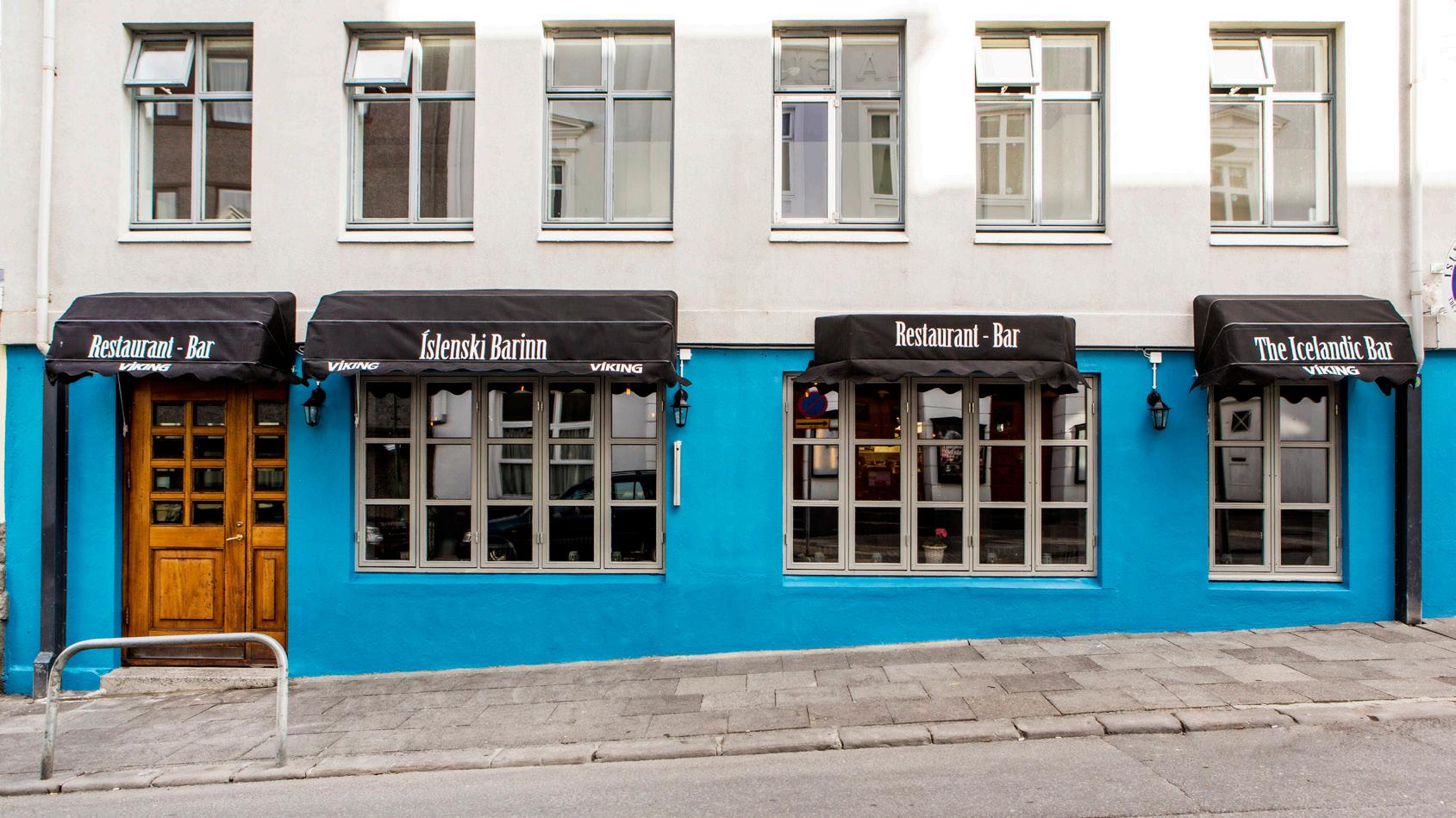
Mix with the locals ...and all the Icelandic beers in one awsome place!


The Icelandic Punk Museum is located at Bankastræti 0, an underground location that served as public toilets from 1930 to 2006. The museum honours the music and the spirit that has shaped musicians and bands to this day; people who dared to be different. Objects, photographs, videos, posters, etc. from roughly 1978 to 1992 are on display with texts in Icelandic and English, and the main music from the period is available to guests.
The National Gallery of Iceland’s collection contains over eleven thousand works. In the exhibition Treasures of a Nation, a selection of works from the collection displays the evolution of art in Iceland from the early nineteenth century to our times.
Resistance is an interdisciplinary exhibition that bridges the gap between visual arts and science. The works on display are key works in the collection of the National Gallery of Iceland, that establish an interesting dialogue between art and science and the United Nations Sustainable Development Goals.
The ocean is all around in an exhibition on level 2 at the House of Collections on Hverfisgata, Reykjavík, where the treasures of Icelandic art are on display. Visitors now have the opportunity to experience works that relate to the seas, and to the discourse on sustainability.
Welcome to Jómfrúin, the home of Danish smørrebrød in Reykjavik. It all began in 1888 with Oscars Davidsen’s highly praised smørrebrød restaurant in Copenhagen. An unbroken tradition of quality and Danish culinary culture for the past 100 years. Enjoy!

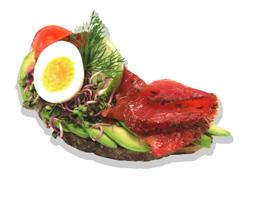




Reykjavík’s only open air museum, where you can stroll through the past and experience the way we lived. Fun, fascinating and full of surprises, this living museum takes you on a journey through time. Guided tours at 13:00 all year round.


Kistuhylur, Reykjavík
411-6304 | reykjavikcitymuseum.is
Hours: Daily 13-17
An open excavation where Viking ruins meet digital technology. Just below ground in downtown Reykjavík, this open excavation uncovers the city’s Viking Age history. Discovered during building work, then carefully excavated, these remnants of the past are the earliest evidence of human settlement in the city.
Aðalstræti 10 & 16, Reykjavík | 411-6370 www.reykjavikcitymuseum.is
Hours: Daily 10-17
The city’s oldest house, built in 1762 houses an exhibition detailing the history of Reykjavík, and the daily life of the people who inhabited it, continuing where the nearby Settlement Exhibition leaves off.

Aðalstræti 10, 101 Reykjavík 411 6300 | www.borgarsogusafn.is
FREE ENTRY Looking for a place to hang out, browse the internet, get access to Wi-Fi or meet the Reykjavik locals? Then Reykjavik City Library is the perfect place to visit. Have a seat and dip into the latest magazine or relax while checking out their great selection of books.
Tryggvagata 15, Reykjavík
411-6100 | borgarbokasafn.is
Hours: Mon-Thu: 10-16, Fri 11-16
A harbour museum exploring Iceland’s dramatic relationship with the sea. The survival of a nation depended on generations of brave fishermen heading into the unknown. Exhibitions and artefacts bring our ocean history to life.

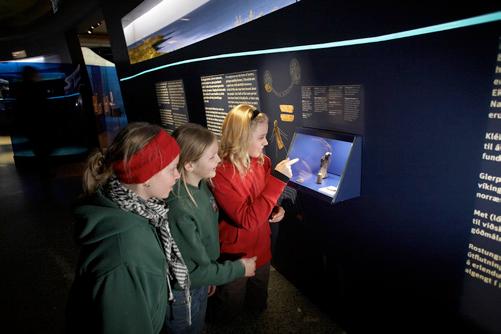
Grandagarður 8, Reykjavík | 411-6340 www.reykjavikcitymuseum.is
A museum with indoor and outdoor exhibitions dedicated to the work of Einar Jónsson Iceland’s first modern sculptor (1874-1954). The museum was built in the early 1900’s when Einar Jónsson offered all of his works as a gift to the Icelandic nation.
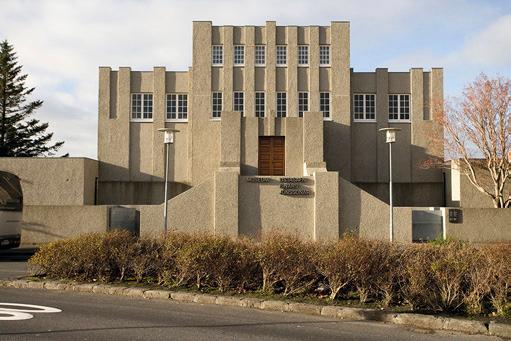
Hallgrímstorg 3, Reykjavík
551-3797 | www.lej.is
Hours: Tue-Sun 12-17
REYKJAVÍK
An island, where art, history and nature lie just beyond the city shore. The combination of stunning views, historical ruins and contemporary art pieces make Viðey island something special. Just a short boat ride takes you to another world. Ferry Schedule: Weekends only.

Viðey Reykjavik
411-6356.
www.reykjavikcitymuseum.is
An exhibition in Reykjavík consisting of 23 life-size whale models - fun to touch and explore. Learn more about whales with in-depth multimedia and interactive information displays, videos and audio guide in several languages mixed with soothing whale sounds and underwater ambient lighting.
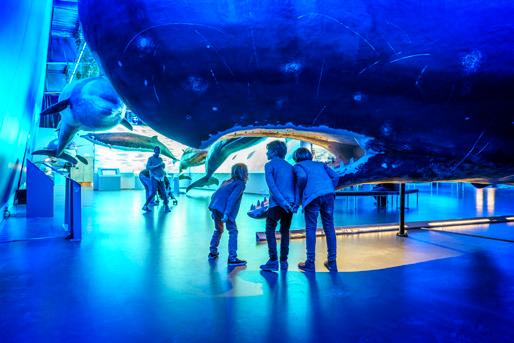
Fiskislóð 23-25 , Reykjavík
571-0077 | www.whalesoficeland.is
Hours: Daily 10-17
Reflecting the contemporary, while archiving the past – this is Reykjavík’s home of photography. Reykjavík’s main photography museum offers an ongoing programme of contemporary and historical exhibitions, and an onscreen archive of thousands of images from the past.

Tryggvagata 15, Reykjavík | 411-6390
reykjavikcitymuseum.is | Hours: MonThu 10-18, Fri 11-18, Sat & Sun 13-17



Over 100 tours & activities on re.is

Experience unforgettable moments on the South shore. Choose a trip on ATV, a glacial thrill on snowmobiles or a hike on the glacier with expert guides. Scan the QR code below to know more.
Iceland's leading art museum, established in 1884. Its collection consists mainly of 19th, 20th and 21st century art. The National Gallery possesses a coherent array of Icelandic works and a fine collection of international art. Together they constitute around 11,000 items.
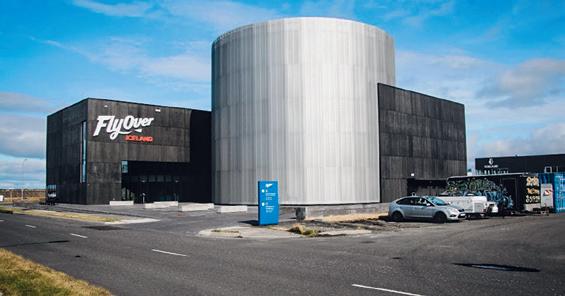

Fríkirkjuvegur 7, Reykjavík 515-9600 | www.listasafn.is
Offers state-of-the-art exhibitions on the cultural history of Iceland. The permanent exhibition, Making of a Nation - Heritage and History of Iceland, gives a comprehensive picture of Iceland’s cultural history through the ages to the present day.


Suðurgata 41, Reykjavík 530-2200 | www.nationalmuseum.is
Hours: Tue-Sun: 10-17
A museum that Icelandic sculptor Sigurjón Ólafsson’s wife founded as a tribute to his life and work in 1984. She had his studio in Laugarnes converted to an exhibition space to house his collection of works, including sculptures, sketches, drawings and biographical material.
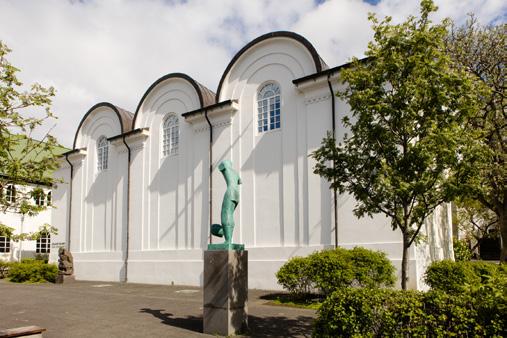
Laugarnestangi 70
553-2906 | www.lso.is
Hours: Closed in January
Ásgrímur Jónsson was one of the pioneers of Icelandic art and the first Icelander to take up painting professionally. Having died in 1958, he bequeathed all his works, as well as his studio home to the Icelandic nation.
Bergstaðastræti 74, Reykjavík 515-9625

www.listasafn.is
Hours: Tue-Sun 10-17


Probably the most unique museum you’ll visit on your trip, the Icelandic Phallological Museum is one of a kind. Here you’ll find a collection of more than two hundred penises and penile parts belonging to almost all land and sea mammals that can be found in Iceland.
Hafnartorg, Reykjavík 561-6663 | www.phallus.is
Hours: Daily 10-19
The Northern Lights Center, Aurora Reykjavik, allows you to experience the northern lights in a completely different way, both if you saw them, but as well if they escaped you while in Iceland. The centre features information, education and of course stunning visuals of the elusive lights that’ll get your heart racing.
Grandagarður 2, Reykjavík 780-4500 | www.aurorareykjavik.is
Hours: Daily 9-21
This peculiar building, built on top of six water tanks on a hill overlooking the city, houses two exhibitions, The Wonders of Iceland and Water in Icelandic Nature. In addition, Perlan has a recently-opened planetarium, a café and gelateria, and an observation deck with a 360° view of the city and its surrounding nature.
Varmahlíð 1, Reykjavík 566-9000 | www.perlan.is
Hours: 9-22
FlyOver Iceland utilises state-of-the-art technology to give you the feeling of flight. You will hang suspended, feet dangling, before a 20-metre spherical screen while the film whisks you away on an exhilarating journey across Iceland. Special effects, including wind, mist and scents, combine with the ride’s motion to create an unforgettable experience.
Fiskislóð 43, 101 Reykjavík. 527-6700. www.flyovericeland.is Hours: Mon-Fri, 11:00-19:00 & Sat-Sun, 11:00-19:00.
Its objective is to collect, study and present Icelandic design and crafts from 1900 to the present day. This young museum, the only one of its kind in Iceland, holds regular exhibitions of Icelandic and international design during the year. Exhibitions from the museum‘s own collection are regularly held.
Garðatorg 1, Garðabær
512-1525 | www.honnunarsafn.is
Hours: Tue-Sun 12-17

Mainly devoted to paintings and sculpture by well-established Icelandic and international artists. Kjarvalsstaðir offers a permanent exhibition of key works by one of Iceland’s most beloved landscape painters, Jóhannes S. Kjarval, as well as changing exhibitions that explore various thematic and historical aspects of Icelandic art.
Flókagata 24, Reykjavík
411-6420 | www.artmuseum.is
Hours: Daily 10-17
Opened in 1983, the collection is housed in a unique building designed and constructed mostly by the artist himself from 1942-1950. The original building served Sveinsson as studio and home; behind it he built a crescent-shaped structure as a work and exhibition space.
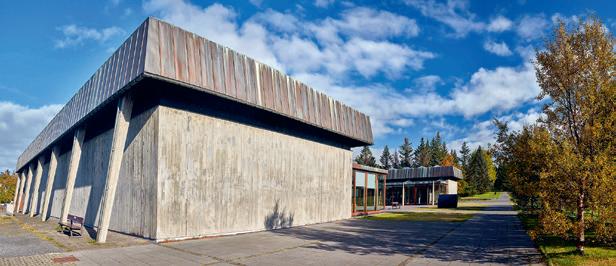
Sigtún, Reykjavík
411-6430 | www.artmuseum.is
Hours: Daily 10-17
The old harbour warehouse, Hafnarhús, offers a progressive exhibition program with local and international contemporary artists. The work of current notables, art canons and newcomers is presented in six galleries. Hafnarhús is also home to the works of Erró (b. 1932), a significant player in the international pop art scene.
Tryggvagata 17, Reykjavík
411-6400 | www.artmuseum.is
Hours: Daily 10-17, Thu 10-22
Halldór Laxness is arguably the most famous Icelandic writer of all time, and the only Icelander to have won a Nobel Prize, which he received for literature in 1955. Gljúfrasteinn was his home until his death, and today it is a museum dedicated to his life and work.
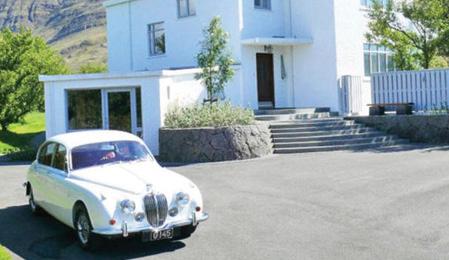
Gljúfrasteinn, Mosfellsbær
586-8066 | www.gljufrasteinn.is
Hours: Tue-Fri 10-17
FREE ENTRY Hafnarborg has a collection of Icelandic art and regular exhibitions presenting leading Icelandic and international artists. Collection exhibitions are a regular part of the program. Around exhibitions are workshops and guided tours.

Strandgata 34, Hafnarfjörður 585-5790 | www.hafnarborg.is
Hours: 12-17, closed on Tuesdays
An active exhibition space that has organized many exciting exhibitions throughout the years. They put an emphasis on introducing young Icelandic artists, as well as showcasing work by better-known Icelandic and foreign modern and contemporary artists. The Marshall House Grandagarður 20, Reykjavík
551-4350 | www.nylo.is

Hours: Wed-Sun: 12-18
A progressive modern art museum in Kópavogur, dedicated to sculptor Gerður Helgadóttir; the only museum in Iceland dedicated to a woman. Its collection consists of more than 1,400 works by Gerður, as well as the works of the most celebrated Icelandic artists of the 20th and 21st century.

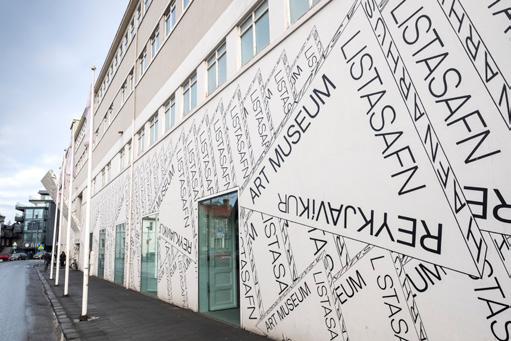

Hamraborg 4, Kópavogur
441-7600 | www.gerdarsafn.is
Hours: Tue-Sun 10-17
House of collections was built in 1906 and for most of the 20th century served as the country’s National Library. The stately building currently houses the National Gallery’s exhibition Treasures of a Nation, displaying works from the Gallery’s extensive collection depicting Iceland’s art history from the early 19th century to our times.

Hverfisgata 15, Reykjavík
515-9600 | www.listasafn.is
Hours: Daily 10-17
Iceland maintains strong ties to other Nordic countries, and the center of this cooperation is the Nordic House, designed by acclaimed Finnish architect Alvar Aalto in 1968. The Nordic House is the venue if you want to enjoy the best of Icelandic culture as well as experiencing rich culture of the Nordic countries.
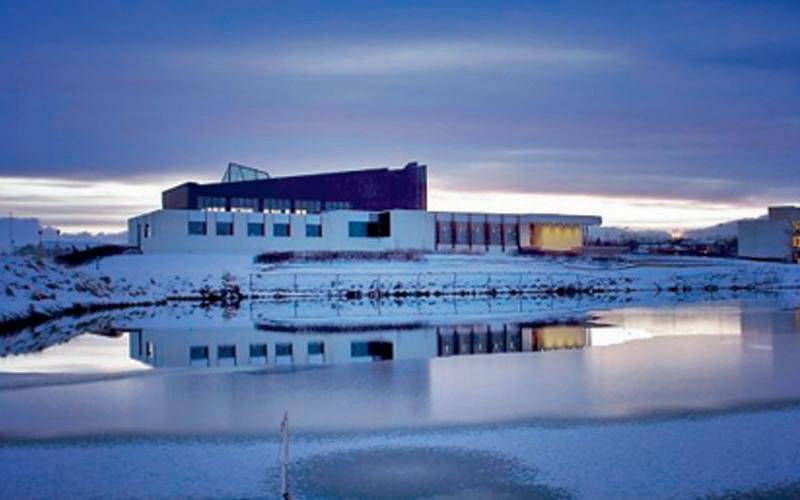
Sturlugata 5, Reykjavík
551-7030 | www.nordice.is
Hours: Tue-Sun: 10-17
Laxnes Horse Farm is a family run business and the oldest tour operator in Iceland. Founded in 1968, the farm offers horseback riding tours all year round for travelers interested in the gentle Icelandic horse.
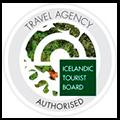

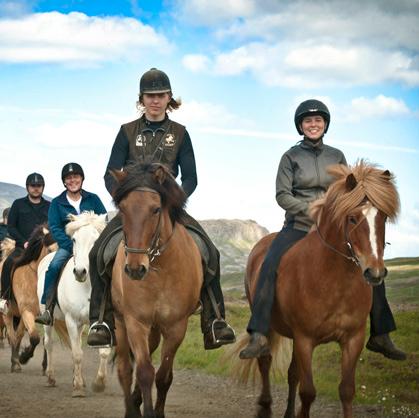
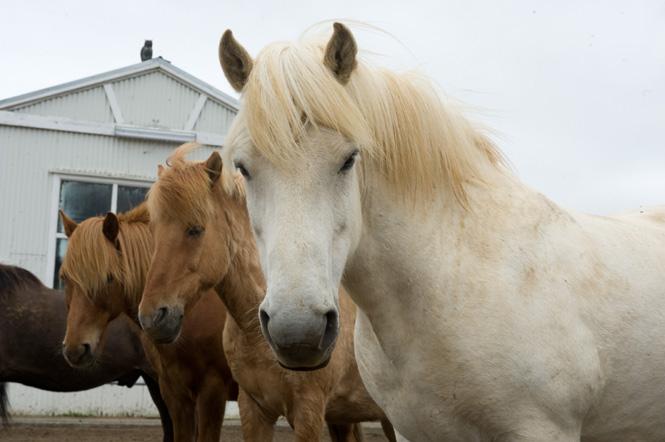


www.laxnes.is

peckish after a few glasses of their delicious wines, they also serve snacks and small plates. The cosy bar is perfect for having a few glasses of wines with friends or a date.
Laugavegur 27, Reykjavík 888-2380
If you are visiting Iceland for the first time then you must stop by the Lebowski Bar. Open every day from 11AM, happy hour from 4-7PM, food served until 10PM, Quiz every Thursday (free entry), live sport events on 5 HD screens and Reykjavik nightlife every Friday & Saturday.


Laugavegur 20a, Reykjavík 552-2300
www.lebowski.is
Beer enthusiasts look no further! near the top of Laugavegur, the city’s main shopping street, you will find Micro Bar. This ambitious bar serves only beer from microbreweries! Carrying an impressive 140 different kinds of beers from all over the world, this is definitely the go-to place for beer fans, and a nice place to spend an evening.

Laugavegur 86, Reykjavík
EINSTÖK
There’s nothing like an Einstök beer after a long day of exploring Reykjavíkand now there’s a whole bar dedicated to this popular brew! Einstök literally means unique and after a few sips of their refreshing craft ale, brewed with fresh water from Northern Iceland, we’re sure you’ll agree. The recently opened Laugavegur bar makes it even easier to enjoy their variety of ales, ranging from citrusy fresh white to the darkest of porters.
Laugavegur 10, Reykjavík
Port 9 wine bar is a hidden gem just off the main shopping street. Serving selected wines and a unique blend of appetizers made with the freshest seasonal ingredients, Port 9 is one of the best spots in the city to stop by for a glass of quality wine in a relaxed atmosphere.
Veghúsastígur 9, Reykjavík 897-8212 www.port9.is
This cozy little bar is named after the Icelandic word for weather, Icelanders’ conversation topic of choice in most situations. Offering a selection of wine, beer, and cocktails, Veður is a great spot for hanging out with friends, and the large windows make it ideal for people-watching over a drink.
Klapparstígur 33, Reykjavík www.vedurbarinn.is

This hostel café/bar is bright and spacious; the perfect place to start the night. The hall hosts events most nights and on summer afternoons, the balcony is the best place in town for a beer in the sun. Last but not least, Loft has the best foosball table of all the bars in the city centre.
Bankastræti 7, Reykjavík 553-8140
Kiki is the only queer bar in town these days but it is also the best one! If you’re worried you won’t find the place, don’t be. The rainbow coloured street entrance, stream of people in a dancing mood, and the far-off sound of dance-heavy beats should lead you where you want to go!

Laugavegur 22 www.kiki.is
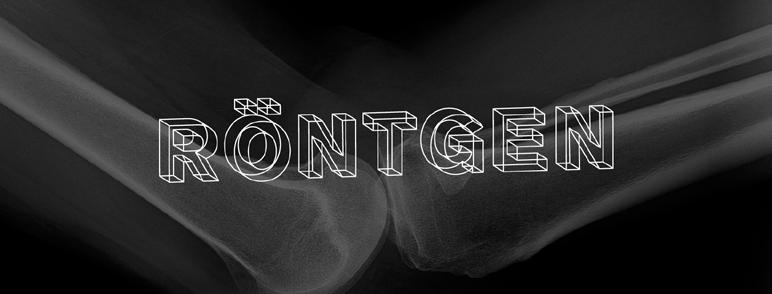
In the early 20th century, Hverfisgata 12 was home to the country’s first X-ray clinic. Today, the building houses one of the city’s newest bars but the name pays homage to the building’s long history. Expect cocktails, natural wines, and the city’s artsiest crowd having a night out.


Hverfisgata 12, Reykjavík www. www.rontgenbar.is

An Irish-style pub in downtown Reykjavík. Happy hour every day from 12PM to 7PM! Guests can enjoy a game of darts, listen to live music Thursday to Sunday evenings, spin the wheel of fortune and you can even book a private karaoke room! Sláinte.



Klapparstígur 27, Reykjavík
581-2020
www.irishman.is
One of the coolest bars in Reykjavik these days is Kaldi Bar. In close cooperation with north Icelandic micro brewery of the same name, Kaldi offers you a selection of craft brewed beers on tap. Great happy hour and great fun, Kaldi is a place not to be missed!

Laugavegur 20b, Reykjavík 581-2200
American Bar is named appropriately since it’s an American Bar in Reykjavík, of the kind you’re probably familiar with from other countries: there are dudes, chicks and random university students partying to the latest MTV tunes. They specialize in American culture and entertainment.
Austurstræti 8, Reykjavík
571-9999
Built in 1926 as an apartment, the Petersen Suite is one of Reykjavík’s hidden gems. Take the elevator up to the third floor above the historic Gamla Bíó concert hall to reveal an elegant bar with one of Reykjavík’s best views. On sunny days, you need to get there early, the sunny patio fills up quickly!
Ingólfsstræti 2a 3rd floor, Reykjavík 563-4000 | www.ktf.is
Uppi Bar offers upscale dining, wine and cocktails. The name Uppi refers to its location, upstairs above the renowned Fish Market Restaurant. You can expect the same exquisite attention to detail and delicious food, but in a casual bar setting, perfect for happy hour or a fancy start to a night out.
Aðalstræti 12, Reykjavík 571-8788
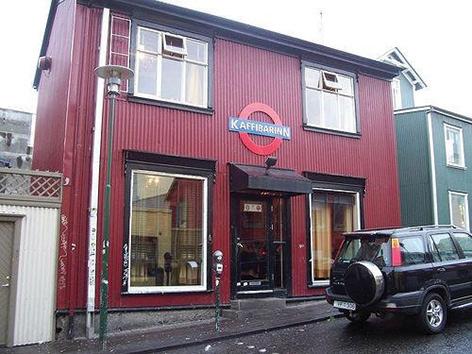
DEN DANSKE KRO
This homey pub with a Danish theme is popular among locals. Happy hour every day from 4-7pm and live music with talented Icelandic musicians every night. Beer bingo every month and other fun events! Located in the heart of the city centre.
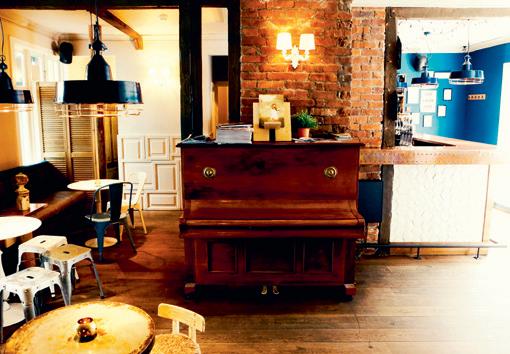
Ingólfsstræti 3, Reykjavík
552-0070
www.danski.is
Best known as Damon Albarn’s hangout place back in the day, this most famous bar in Iceland is a popular destination for the artsy crowd. During the week it‘s more of a café, but on the weekend the volume rises and KB becomes one of the hottest bars in Reykjavik.
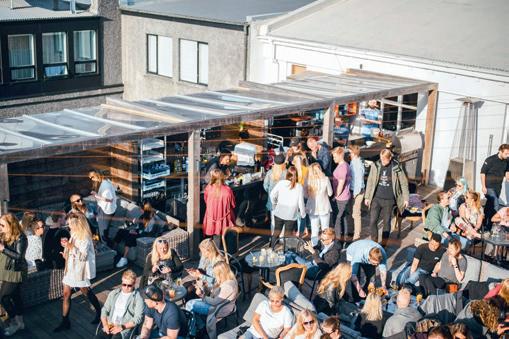
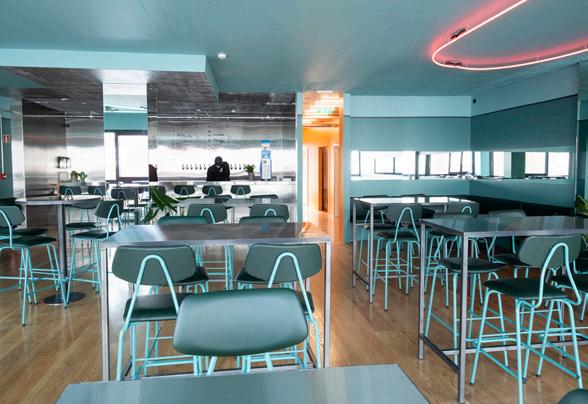
Bergstaðastræti 1, Reykjavík
551-1588
www.kaffibarinn.is
Every Friday and Saturday night the newly established Club Sólon is booming with music, dancing, cocktails and drinks on two floors until 4AM in the morning. Start your evening on the cozy 1st floor lounge area with 2-for-1 cocktails and then dance the night away with the local crowd.
Bankastræti 14, 2nd floor, Reykjavík
A popular pub in city centre. The English Pub offers happy hour every day from 4-7pm, live music every night, wheel of fortune and all major sport events are shown on 6 HD screens. Special events: Open Mic Tuesday, Guinness Thursday and Whisky Sunday.

Austurstræti 12, Reykjavík
578-0400
facebook.com/enskibarinn

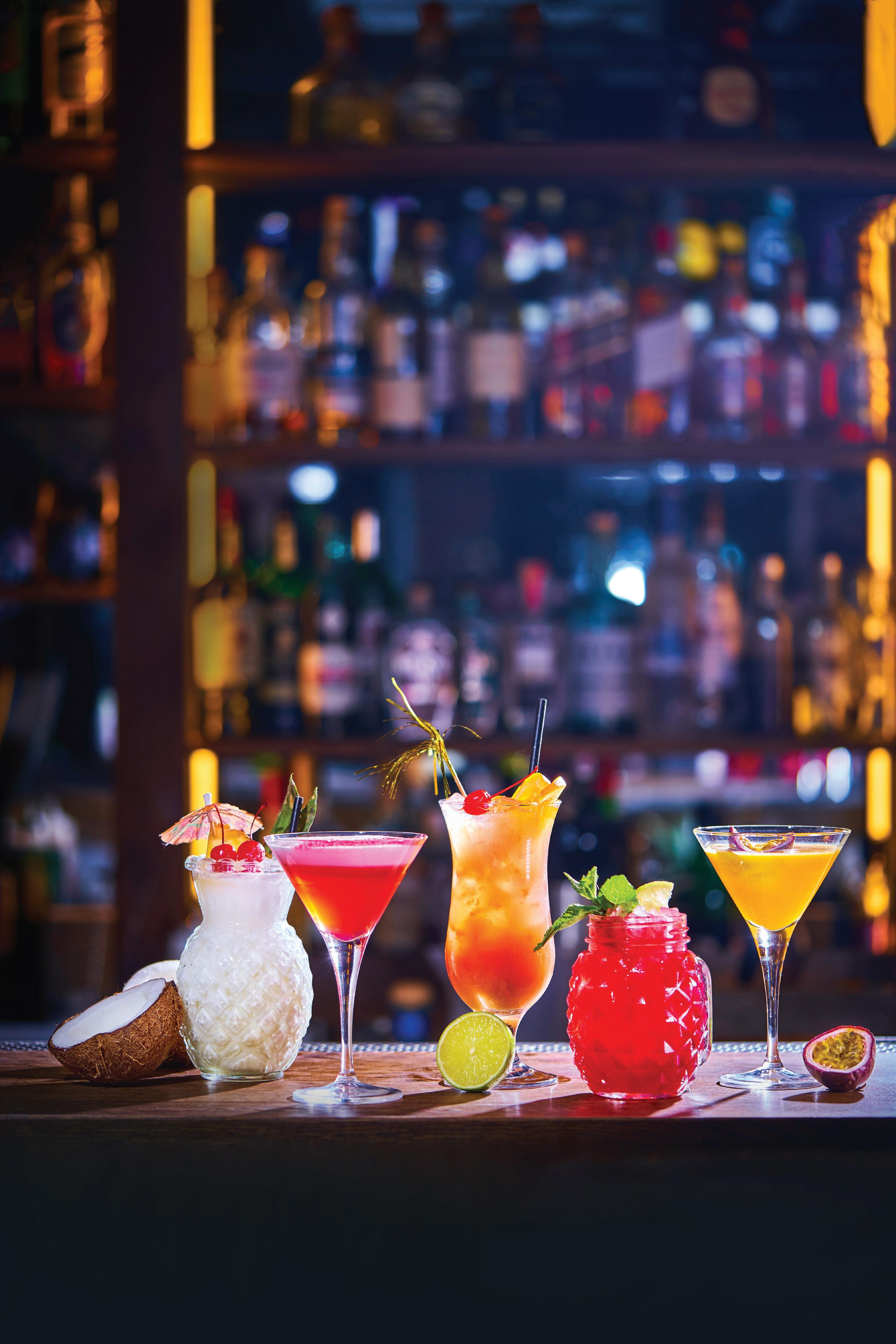




A restaurant opposite the old harbour that offers traditional steak dishes along with some exciting and fairly unorthodox choices. The pride and joy of The Steakhouse is the Mibrasa charcoal oven, a rare oven that is designed to cook the perfect steak by mixing modern technology with ancient tradition.
Tryggvagata 4-6, Reykjavík 561-1111 | www.steik.is
Looking out over the Nauthólsvík beach, this charming Scandinavianinspired bistro is the perfect oasis from the stress of the everyday. Whether you’re there for a light lunch, a glass of wine on a sunny afternoon, a cup of hot coffee on a cold one, or a lovely dinner with a loved one, Nauthóll is the place to go.
Nauthólsvegi 106, 101 Reykjavík 599-6660 | www.nautholl.is
Grandi Mathöll is a must visit for foodies. Situated in the hip Grandi area, the European style food hall has everything from fresh salmon ceviche to Vietnamese spring rolls and Korean tacos. Right next door is one of Iceland’s busiest harbours, and visitors can see a feed of live ship arrivals.
Grandagarður 16, Reykjavík
577-6200 | www.grandimatholl.is

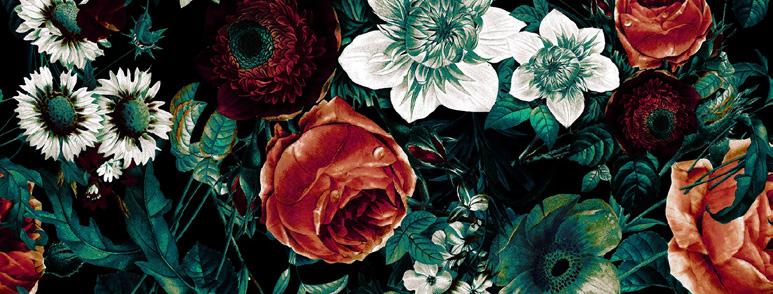
This trendy restaurant overlooking Austurvöllur square serves light and delicious food, inspired by French and Italian cuisine. The duck dishes are highly recommended but whatever you do, don’t forget to order one of their expertly mixed cocktails!
The Icelandic Bar is very aptly named: it is an Icelandic bar. But more than that, it is a bar that aims to preserve the essence of being Icelandic by




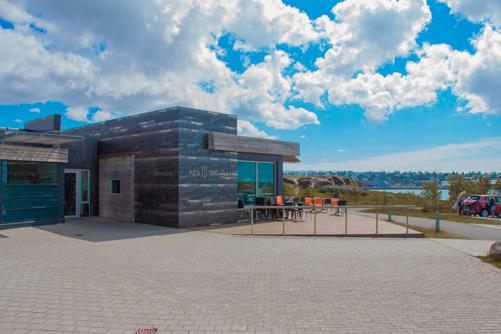



Situated right downtown in Austurstræti, Laundromat houses laundry facilities and a family-friendly environment. A spacious recreational room downstairs will keep your children busy while you’re chomping on the bistro menu. Whether it’s brunch, board games or beer you’re looking for, Laundromat should have you covered.
Austurstræti 9, Reykjavík
restaurant institution at this point, having opened in 1979. Situated in downtown Reykjavík, it was the first Italian restaurant in town and is as strong as ever. Expect fresh pizza, made right in front of the guests in the open kitchen. The cosy place is also a decent spot for people watching, with its large windows.
Hafnarstræti 15, Reykjavík
551-3340 I www.hornid.is

of British and Icelandic culture, with fresh, quality Icelandic fish served in the traditional British way. You can even get mushy peas and malt vinegar with it! Festing on hot fish and chips while looking over the old harbour is an unbeatable Reykjavík experience.

Between the Reykjavík Maritime Museum and Reykjavík Marina Hotel 840-4100 | fishandchipsvagninn.is


Situated just off Laugavegur, the Spanish style bodega Spánski barinn offers fresh tapas and a quality wine selection. In a dim and cosy basement, guests can enjoy a quality happy hour chock full of wines from Tempranillo to Rioja, as well as a house red on tap.
Ingólfsstræti 8, Reykjavík 832-8881
Tasty tapas with an Icelandic twist. With a new spin on traditional Icelandic cuisine and an extensive selection of local beer, Forréttabarinn – “The Starters Bar” – is worth seeking out when you need a bite to eat or a place to start your night out in Reykjavík. Whatever you choose from the refreshingly creative menu, you’re in for a treat!
Nýlendugata 14, Reykjavík 517-1800 |

Feeling presidential? Why not sit down for a powerful beverage (hot or cold) or even a light meal fit for a president in the cosy retro atmosphere on the city’s main street. Forsetinn (Icelandic for President) is a versatile spot - café, bistro, and bar - perfect for people watching at any time of the day.
Laugavegur 51, Reykjavík 860 9640 www.forsetinncafe.is
An open-sandwich restaurant in the Danish tradition offering authentic Danish smørrebrød along with a selection of hot dishes. The restaurant is located in the heart of the city centre and seats 80 guests. It is a popular lunch venue, especially with people from the business sector.


Lækjargata 4, Reykjavík 551-0100 www.jomfruin.is
KRYDD is an à la carte restaurant that offers a dinner and lunch menu, along with appetizers and a state of the art cocktailbar. On Sundays, it offers a brunch buffet between 11:00 AM - 3:00 PM.
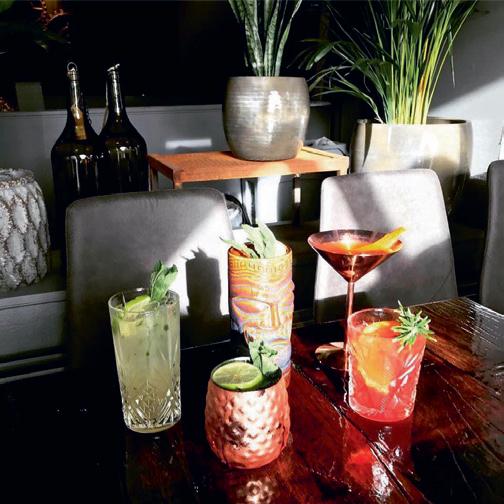
Hafnarborg, Strandgötu 34, Hafnarfjörður www.kryddveitingahus.is
Open: M-T 11-23, F-S, 11-01, S 11-23
Skreið is the latest star in the Reykjavík restaurant scene’s night sky, a wine bar and small-plates restaurant positively oozing that oldschool 101 Reykjavík charm. Rest assured that on a night out, the wine will be delicious, the food delectable, the vibe cool and relaxed, and the place and the people stylish. What more could you ask for?
Laugavegur 4, Reykjavík www.skreid.is
The east-Asian citrus fruit was a stranger to Icelandic palates until a few years ago and now there’s a whole burger place dedicated to its aromatic sourness. This upscale burger will keep your belly full and your taste buds delighted with an array of burgers, cocktails and even a signature brew. Vegan options available!
Pósthús Food Hall, Reykjavík
Hlemmur Mathöll is a European style food hall featuring global delicacies alongside tasty Icelandic dishes. A former bus station, Hlemmur is now the new home for gourmands and fast food lovers alike in Reykjavík. Hlemmur brims with life on both weekends and weekdays alike, so head on down to see what the fuss is about.

Laugavegur, Reykjavík
787-6200 | www.hlemmurmatholl.is
As the name suggests, Reykjavík Meat is the city’s newest new steakhouse. The food is cooked over coals giving it a delicious flavour, and crowning their menu is the award-winning sashi marbled beef. They also offer seafood, lamb and vegetarian and vegan dishes, as well as delicious cocktails!


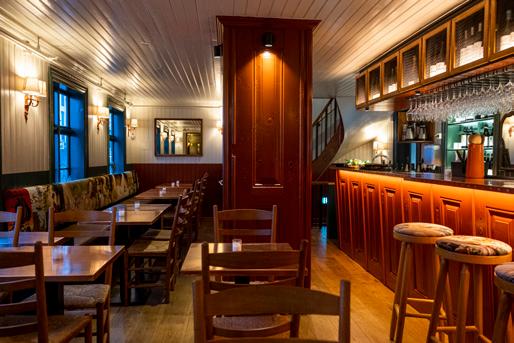
Frakkastígur 8, Reykjavík 557-7665 | www.rvkmeat.is
BÆJARINS BEZTU
Bæjarins Beztu Pylsur literally means The Town’s Best Hot Dogs. A must try while visiting, it is the perfect on-the-go food. We dare you to time the hot dog artists at Bæjarins Beztu after you order ‘ein með öllu’ (one with everything). They are incredibly quick to make a concoction of raw onions, fried onions, ketchup, remoulade, Icelandic mustard and the dog itself.
Tryggvagata 1, 101 Reykjavík 511-1566 | www.bbp.is

One of Iceland’s most treasured restaurants has made a comeback. The Italian delicacies of La Primavera are here to stay. Situated in the Marshall building, a former fishing warehouse, the building is also home to an art gallery, an art studio and the Living Art Museum.
Grandagarður 20 & Harpa Concert hall, Reykjavík
519-7766
www.laprimavera.is
This Irish-bar looking restaurant is one of the city’s best places to sit down for a quick lunch and end up whiling away a whole afternoon in the cosy booth while the game is on or on the sunny patio. The weekend-bottomless brunch is particularly popular. so make sure to get a reservation!

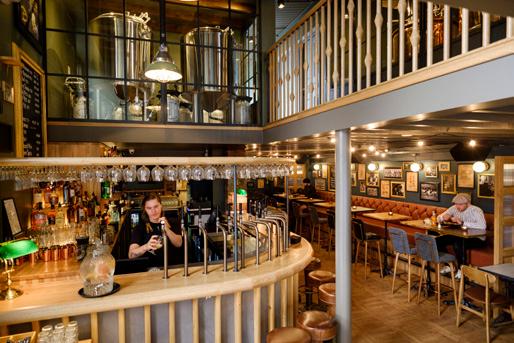
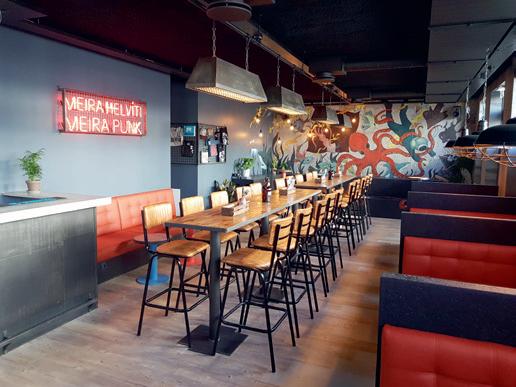

Vegamótastígur 4, Reykjavík 558-0800
www.bastardbrewandfood.is
This Laugavegur gastropub is a great place to treat yourself to a a dinner and some drinks with friends, old and new. With a delicious menu of Asian-fusion inspired small plates to share and an even more delicious menu of cocktails, Public House is a recipe for a fun evening. If you want a fun morning or a fun afternoon instead, check out their bottomless brunch!
Laugavegur 24, 101 Reykjavík
www.publichouse.is

Kopar is a restaurant by the old harbour in Reykjavik which has an emphasis on adventure and experience in a brasserie setting. Their menu is composed of various locally sourced ingredients from sea and land, and aims to give you a taste of Iceland in a single evening.

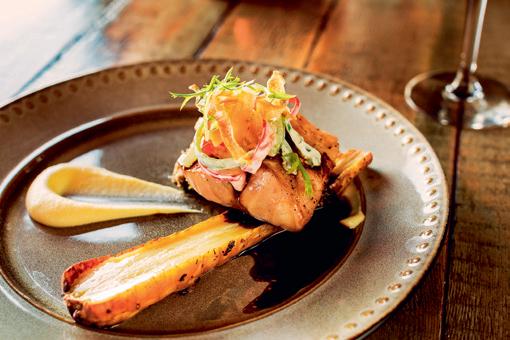
Geirsgata 3, Reykjavík
567-2700
www.koparrestaurant.is
A fun restaurant, with the look and feel of an American Diner. Reasonably priced, offering delicious food and a very good service, you‘ll definitely get great value for your money here. They put a special emphasis on using only high quality ingredients, making for a terrific meal.
Laugavegur 96, Reykjavík 527-5000
www.grillhusid.is

Hop lovers, rejoice! UK’s Craft Beer Phenomenon just opened a bar and restaurant in downtown Reykjavik, located at the corner of Hverfisgata and Frakkastigur. Featuring 20 taps including BrewDog’s headliners, seasonals and one off brews as well as great local Icelandic craft beers. Highly impressive food menu and a very cosy atmosphere.
Frakkastígur 8, Reykjavík
www.brewdog.com
Monkeys is an exciting restaurant offering Nikkei cuisine, a fusion of Japanese recipes and traditions with Peruvian ingredients. Exciting flavours of miso, ginger, soy, wasabi, and rice vinegar are mixed with quinoa, bell peppers, Andean potatoes, and corn, in a beautiful setting that creates just the right atmosphere. A great addition to the Reykjavík culinary scene!
Klapparstígur 30, 101 Reykjavík 519-5350 | www.monkeys.is
Quality, fusion and fun are the Fish Company’s main characteristics. The interior is stylish and the quirky tableware fits in wonderfully. The menu is a world of adventures from starters to deserts. It’s designed to take you on a seafood journey and not only a journey of the Icelandic culinary waters but a trip around the world.
Vesturgata 2a, Reykjavík 552-5300 | www.fiskfelagid.is
Head out to Brauð & Co. to get your hands on the scrumptious sourdough bread and tasty cinnamon buns. The early bird gets the worm, so don't be late! Keep in mind that the queue can get quite long, but it's well worth it.

Opens early, closes at 18:00.
Frakkastígur 16, Reykjavík
Fákafen 11, Reykjavík
www.braudogco.is
Strætó is the Icelandic bus company, and their yellow buses are easy to spot around the city. In November 2021, Strætó introduced the KLAPP payment system in their buses. You have three ways to pay. With a top up KLAPP card, with the KLAPP app, and with KLAPP ten, a bus pass with ten tickets. You can buy KLAPP cards and KLAPP ten at selected gas stations, convenience stores, museums, and swimming pools. For more information, go to https://www.klappid.is/en/sales
Iceland’s international airport is located in Keflavík, about 50km from Reykjavík. If you rent a car or take a cab, it will take about 45 minutes to get to Reykjavík. A cheaper but just as reliable option is taking a bus to and from the airport. They connect to flights and will drop you off or pick you up at bus stops close to your accommodation in Reykjavík.
Iceland has its own currency, the Icelandic króna (ISK). It’s best to get króna at any bank (open Monday to Friday, 9-4), including the one at the Keflavík International Airport (open 24/7). You can either exchange money or go to an ATM to get cash. Credit card and debit card payments are widely accepted in Iceland.

There are different parking zones which charge different rates. Look for a parking sign (the familiar big P) indicating zones 1-4 and parking garages. Look for the nearest black terminal to pay, with cash or card, and type in your car’s number plate, no ticket necessary!
Getting an Icelandic SIM card is easy, you can get them at the airport, phone companies, and, of course, the What’s On tourist information centre at Laugavegur 5.
There are 18 swimming pools in the capital area and if you have the time, you should try them all. Swimming is great, but don’t miss relaxing in the hot tubs – this is where the community gathers and socialises. If you haven’t packed a bathing suit, you can rent one at the pool.
Visit What’s On at Laugavegur 5 or contact us at info@whatson.is.

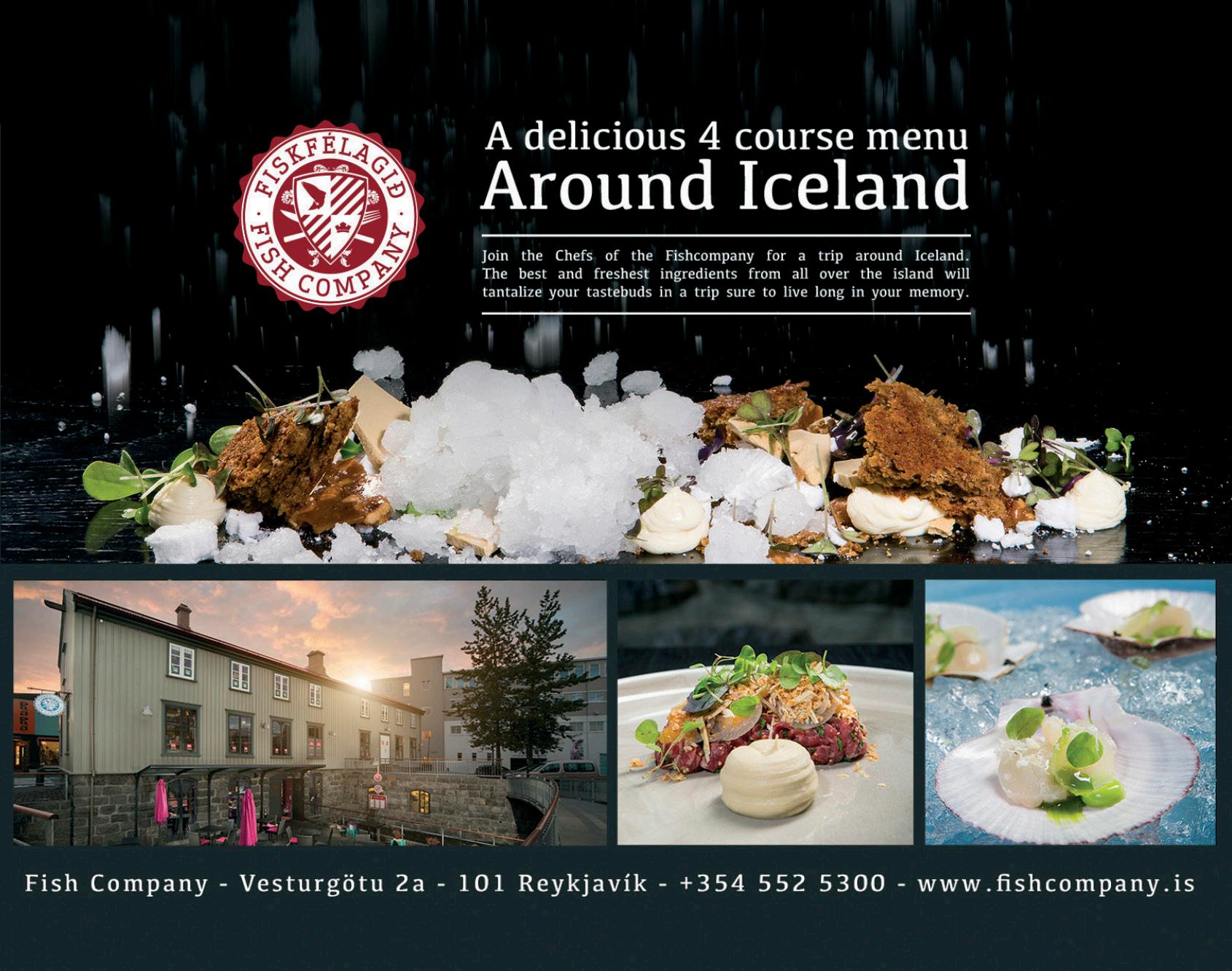



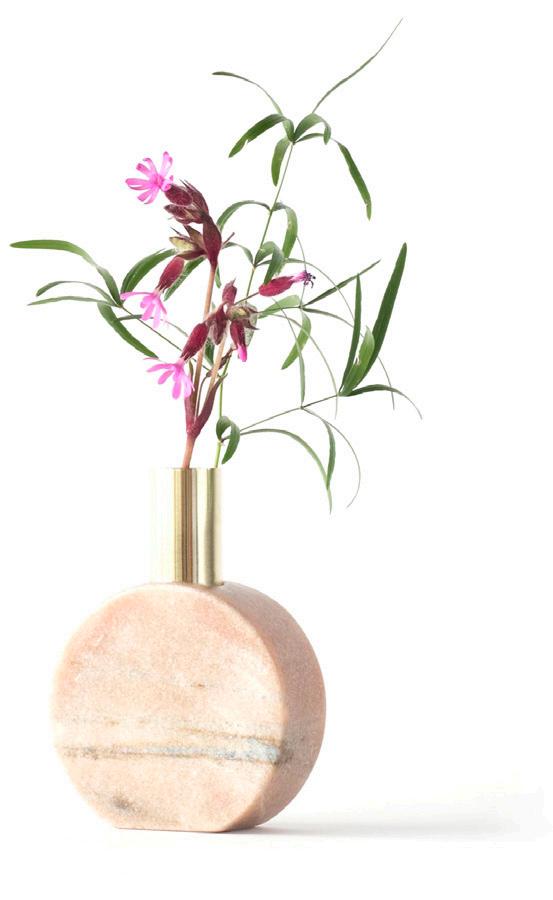

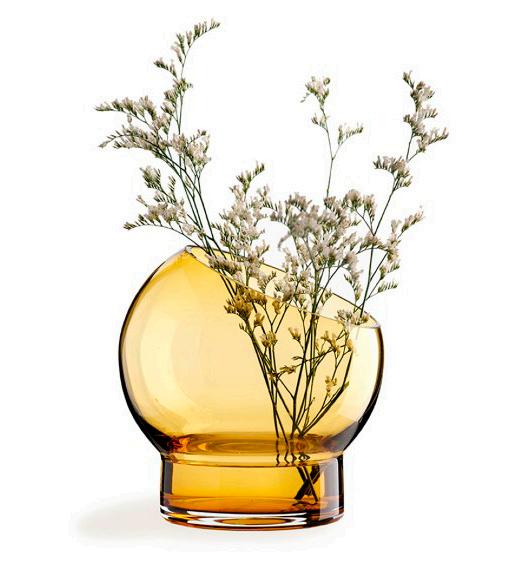
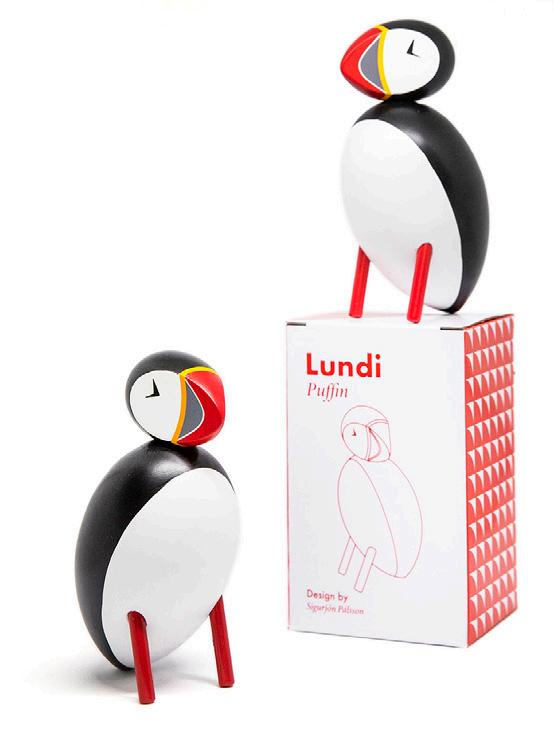




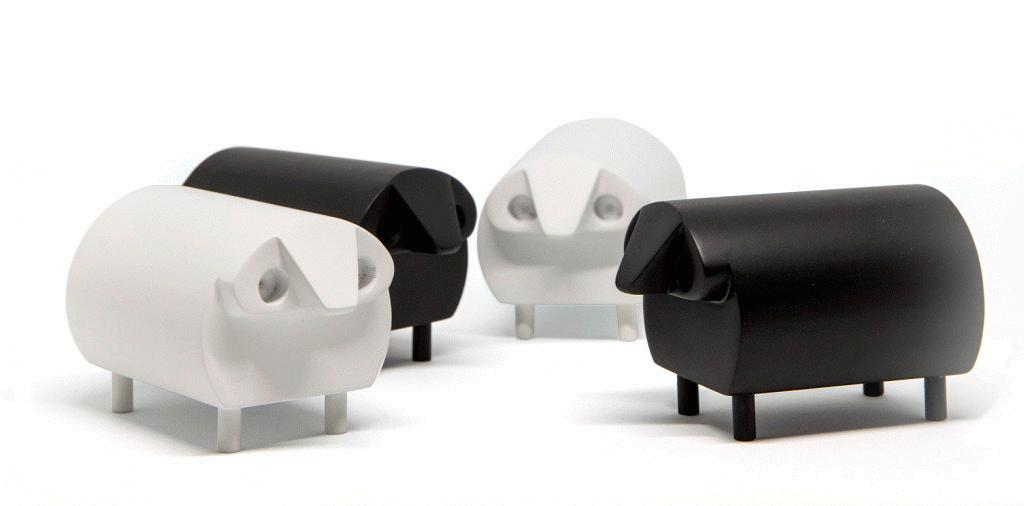







ICELAND'S ALL-NEW GEOTHERMAL LAGOON
Minutes from the City Centre
